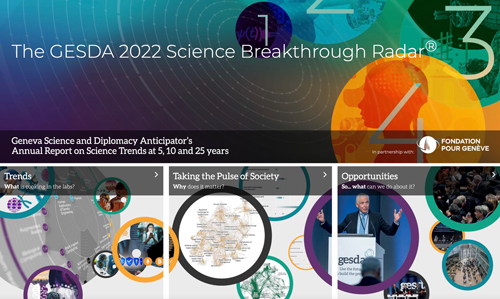| 1.1Advanced AI | |||
|---|---|---|---|
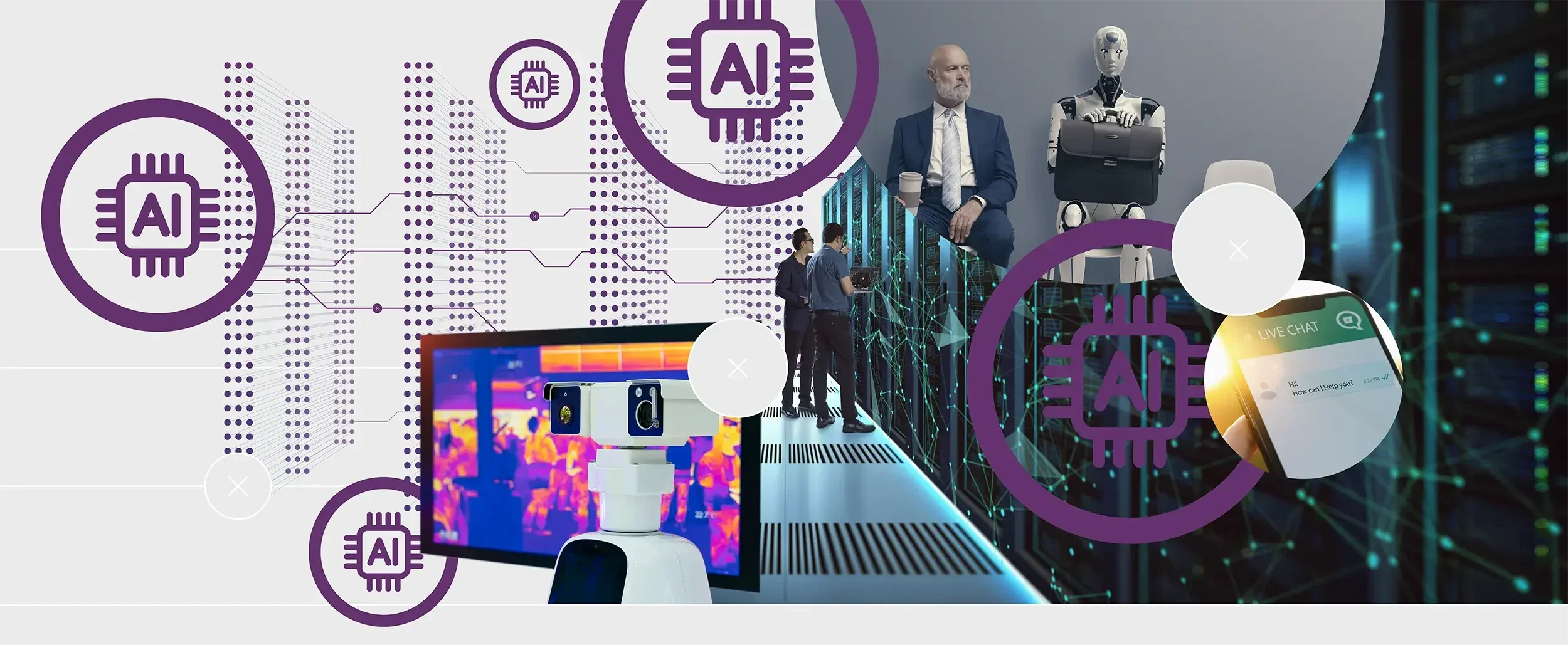 1.1.1Deeper Machine LearningSelf-supervised learning with transformers boosts AI, but concerns remain about memorization, biases, and reasoning limitations. more | 5-year horizonDeep learning models grow in scaleFurther scaling of deep learning models leads to performance that is increasingly indistinguishable from humans in language and vision tasks. Widespread deployment by businesses reshapes significant sections of the economy, such as customer service, content generation and programming; the models are significant assets, assisting a wide variety of human task performance. Most countries adopt AI regulations to limit the potential negative impacts of AI such as bias, misinformation and privacy invasion. | 10-year horizonWorkforce disruption necessitates radical intervention from policymakersDeep learning systems outperform human knowledge workers in a wide-range of professions. The resultant workforce disruption requires policymakers to rethink employment and wealth distribution policies. Two currently open possibilities about exponential increases in model size are resolved. One is whether they outpace hardware improvements and data availability, leading to a plateau in scaling efforts, and prompting renewed innovation in AI architectures. The other is whether further scaling of model size leads to the emergence of missing ingredients such as episodic memory and in-context learning that makes performance even more human-like — or better-than-human. | 25-year horizonDeep learning’s influence is ubiquitous in daily human lifeGiven current acceleration, at this timescale predictions about AI have become incredibly difficult. If scaling laws hold, then AI is likely to reach superhuman capabilities in all domains. In this scenario, it is also likely to become self-improving, leading to runaway progress that is impossible to forecast — and potentially dangerous, requiring urgent policy decisions about AI’s agency and responsibility. However, it remains possible that there are fundamental barriers that scaling alone will not resolve; in this case, deep learning will still be a powerful tool that is able to match human performance on many tasks, but efforts to build generally intelligent AI will refocus on combing it with alternative AI approaches. |
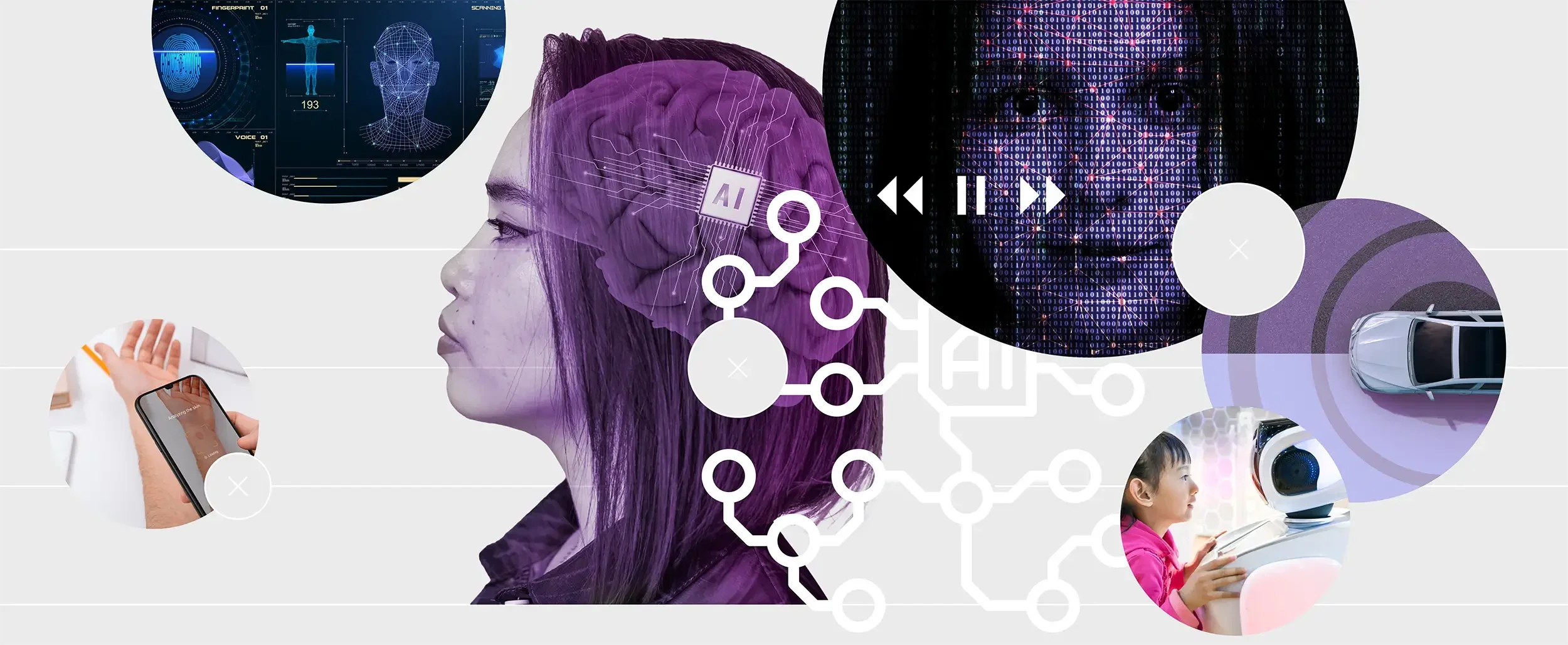 1.1.2Multimodal AIAI research has traditionally focussed on solving discrete problems that involve a single type of data, such as images, text,... more | 5-year horizonThe knowledge industry is entirely disruptedMultimodal AI works with both text and image data to automate a wide range of tasks in knowledge industry jobs. “Generative” AI can now produce art, images and long form videos indistinguishable from human-made ones, disrupting the creative industries and stoking fears about misinformation. Limited data availability stymies efforts to expand into new modalities, prompting growing focus on using AI models to create synthetic data to train on. | 10-year horizonAI works with more modalitiesMore efficient algorithms and a concerted effort to collect data expand the modalities that AI can work with. This leads to breakthroughs in precision medicine. It also helps AI systems to develop deeper knowledge of the world around them, and a grasp of physical concepts and social dynamics. This allows AI to work more seamlessly and safely alongside humans, boosting the use of the technology in less structured settings like retail, care and education. However, the expanded modalities also create the possibility for emergent characteristics such as in-context learning and episodic memory to develop, opening up a path to artificial general intelligence. | 25-year horizonAI understands the world through multiple data streamsWhat happens on this timescale will have a sensitive dependence on the outcomes of the next few years of AI development. However, we can predict that more general advanced AI systems will use multiple data streams to understand the world around them, in much the same way as humans. These are not limited to the five senses: at 25 years, specialist AI systems use a different set of modalities, depending on their task. Multimodal deep learning also accelerates scientific enquiry by allowing the simultaneous analysis of vastly different kinds of data. |
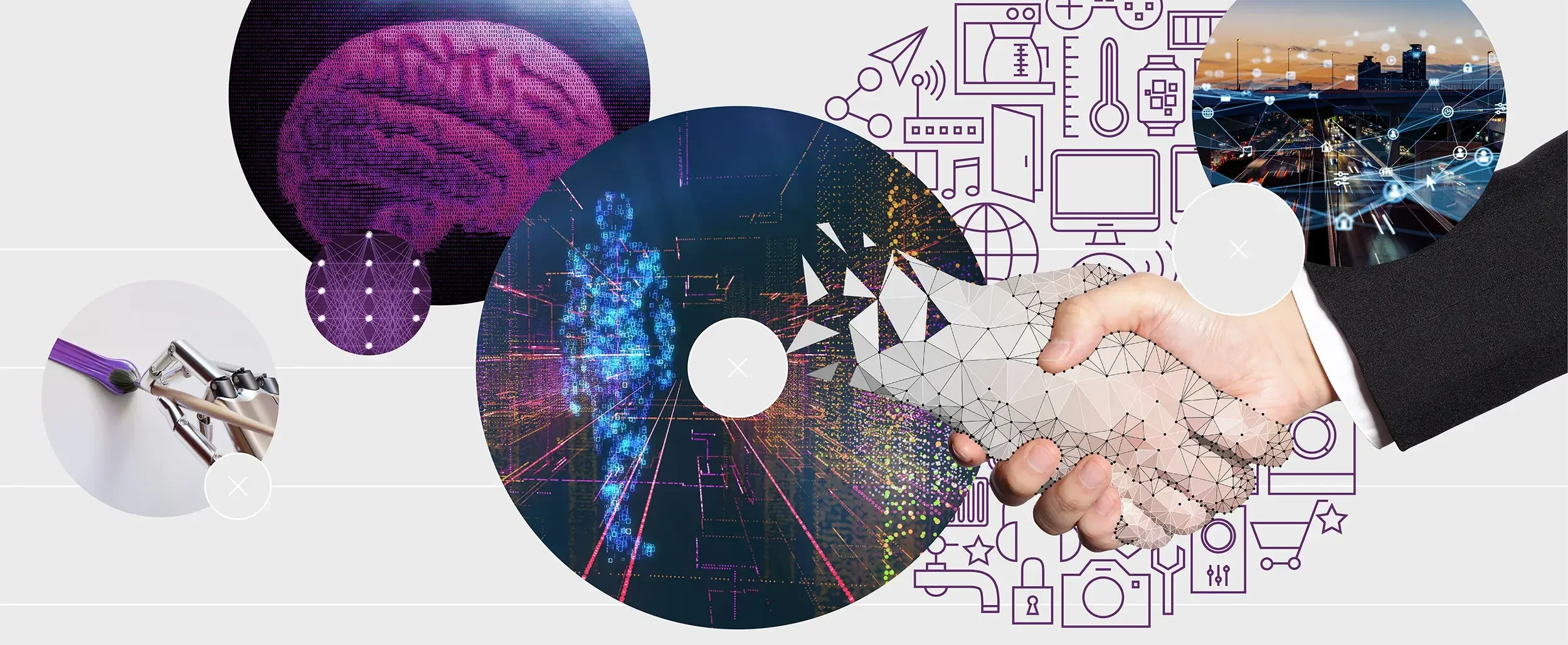 1.1.3 Intelligent devicesMassive AI models running on servers are incredibly powerful, but to make use of them, data has to be streamed... more | 5-year horizonSimple AI models become ubiquitousThe number of devices capable of running simple AI models increases dramatically. This allows companies to generate far more useful insights from sensors and machinery throughout the supply chain, leading to significant efficiency gains. On-device processing also becomes standard for privacy-sensitive consumer applications like fitness tracking, health monitoring and smart homes. | 10-year horizonAutonomous robot deployment expandsBreakthroughs in simulation technology make it possible to train autonomous vehicles and robots far faster and cheaper than before, massively expanding their deployment. While state-of-the-art models remain large and centralised, the AI most people interact with on a daily basis becomes highly distributed. Both the training and running of these models is increasingly done on devices at the edge of the network. | 25-year horizonHumanity experiences ambient intelligence in the environmentImprovements in both hardware and software mean it is now trivial to add AI to almost any device. Humanity enters the era of “ambient intelligence” in which every element of the man-made environment responds intelligently to us in an intuitive and almost undetectable way. This dramatically simplifies people’s everyday lives, but raises deep questions about distinctions between human and machine agency. |
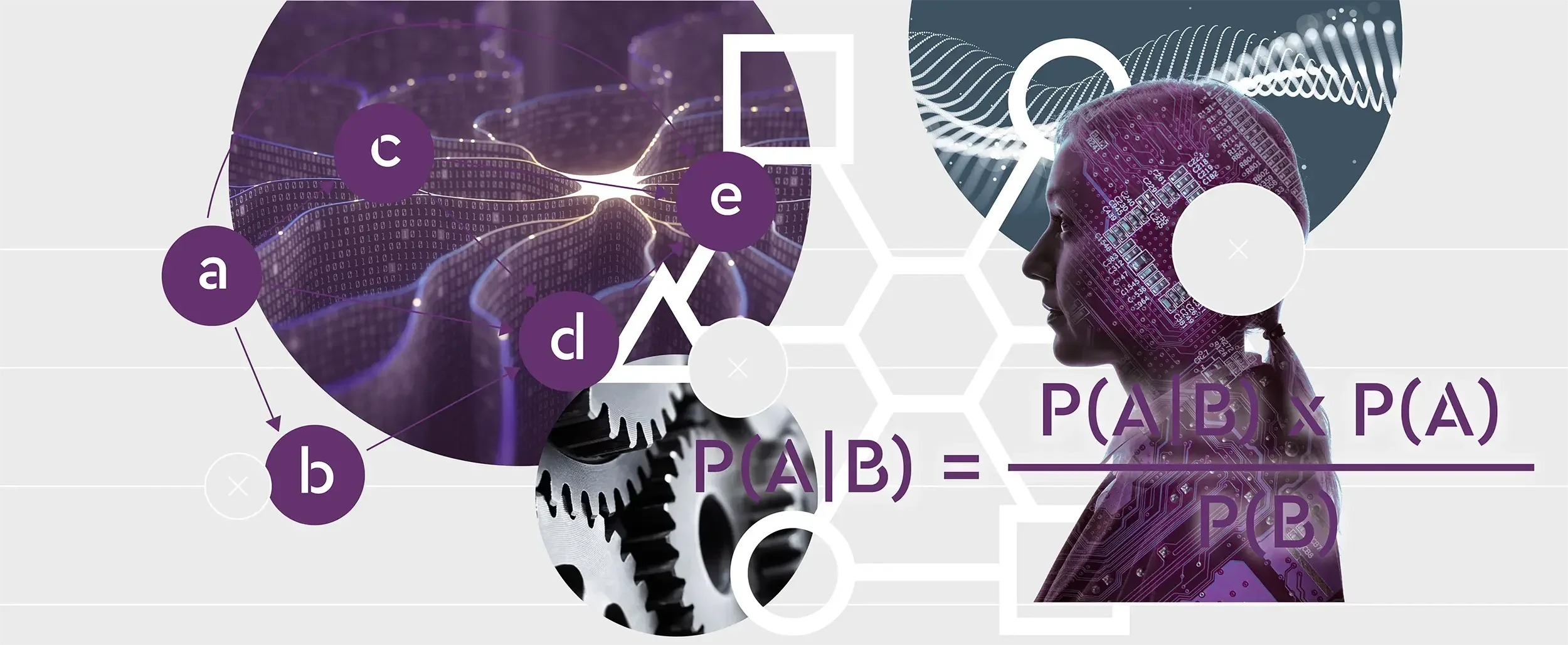 1.1.4Alternative AIDespite progress in deep learning, recreating the kind of flexible and efficient intelligence seen in humans may involve coupling it... more | 5-year horizonAn entirely unpredictable era for AI achievementAt this timescale predictions about AI are inherently unreliable. If scaling laws hold, then alternative AI approaches are likely to become intellectual backwaters. However, if fundamental barriers to scaling arise, then the most advanced AI systems are likely to be complex architectures incorporating a wide range of modules running very different kinds of algorithms. Incorporating the best of all of these approaches will make it possible to create generally intelligent AI systems that exhibit adaptability, generalisability, common sense, and causal reasoning. | 10-year horizonEmerging scaling laws determine the future of deep learningEven at this timescale, the horizons are unclear. The scaling laws that have governed progress in deep learning could begin to peter out, renewing interest in alternative AI approaches, especially given ethical and other concerns over unintended consequences of deploying deep learning models. This could result in a shift to hybrid systems that make use of many different AI techniques to boost explainability, efficiency and flexibility. Alternatively, further scaling of model size could lead to the spontaneous emergence of these missing ingredients in deep learning models, causing interest in alternative approaches to wane. | 25-year horizonDeep learning continues to dominateThe continued success of deep learning overshadows alternative approaches and diverts resources away from them. Nonetheless, theoretical advances continue and progress is made on building the software tools required to scale these approaches up. Advances in cognitive science provide more clues about the missing ingredients behind general intelligence. |
| 1.2Quantum Revolution | |||
|---|---|---|---|
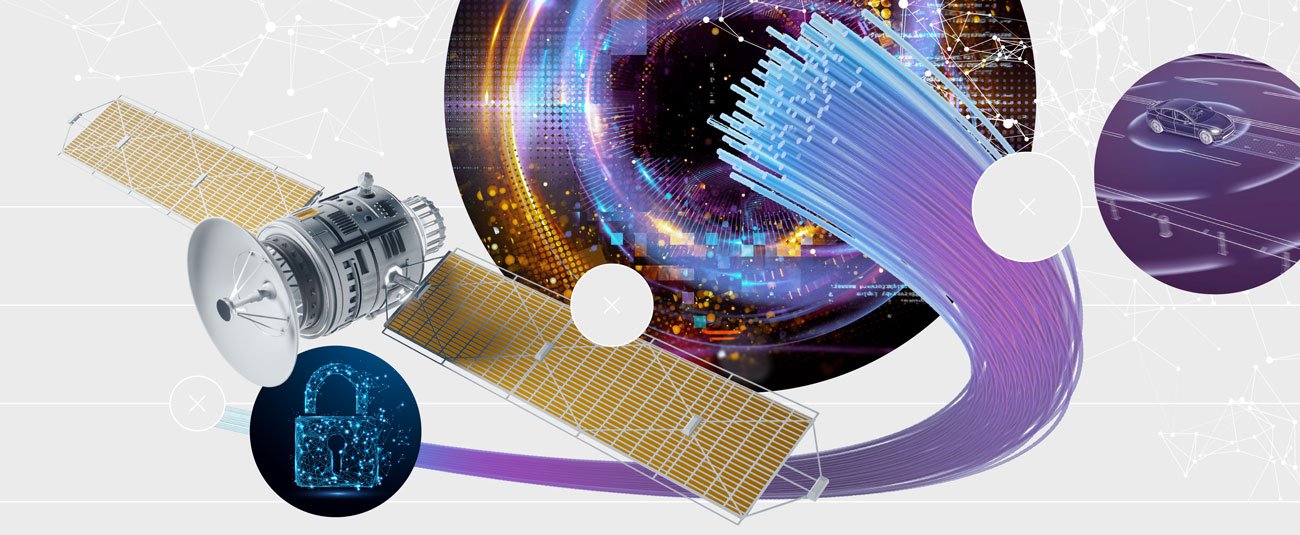 1.2.1Quantum CommunicationThe unique properties of quantum systems such as individual photons of light allow them to be used in provably secure... more | 5-year horizonCommercial quantum cryptographic channels are establishedAn increasing number of companies commercialise systems providing secure quantum cryptographic channels over hundreds of kilometres. The first demonstration of quantum repeaters increases the distances for quantum communications. Quantum random number generators are more broadly deployed in personal technology, radically improving security for financial transactions and secure communications. | 10-year horizonSatellite links and repeaters allow >500km secure communicationsTerrestrial and satellite links are available for quantum cryptographic secure channels over more than 500 km, which compose networks containing dozens of nodes and quantum repeaters. So-called device-independent protocols realise the theoretical promise of unconditional security. Certification techniques based on general tests allow people to trust an encryption system without knowing all the details of its inner workings.8 | 25-year horizonA secure intercontinental quantum internet is establishedA “quantum internet” is in place with provably secure quantum communication channels running between many nodes, combining terrestrial optic fibres and satellite links to connect several countries, in particular in and between Europe, the US and China. This will be of particular interest for sensitive data concerning e.g. health, finance, legal, whistleblowing, but also possibly for autonomous vehicles. The quantum internet will augment the “conventional internet” for the most privacy- and security-critical applications. |
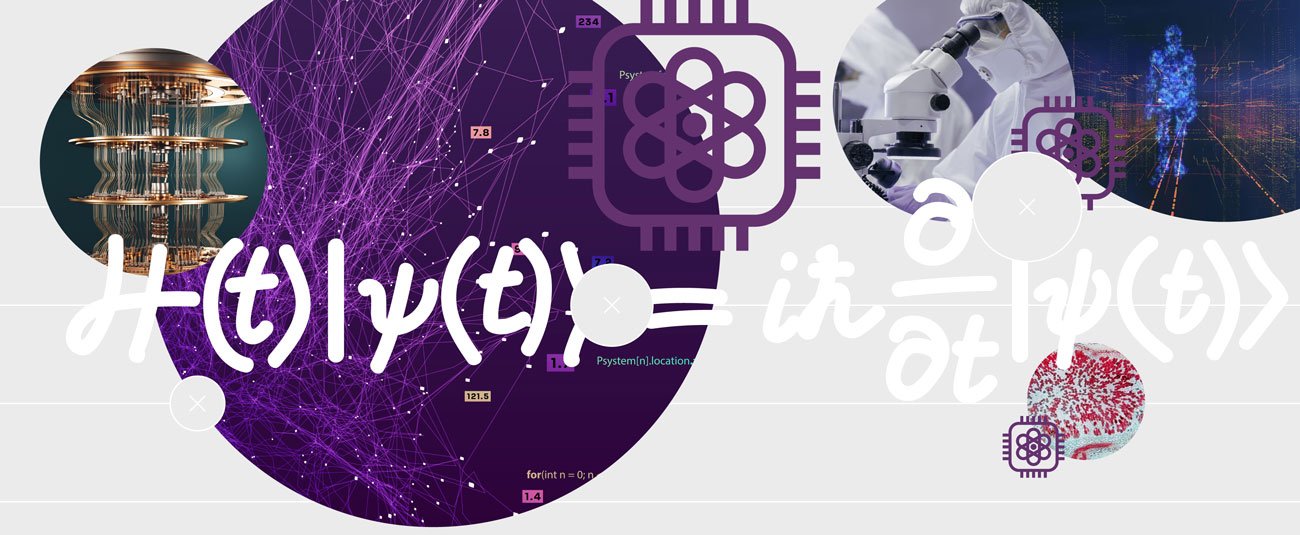 1.2.2Quantum ComputingTwo decades of academic research into quantum computing have resulted in significant recent investments in the field from major technology... more | 5-year horizonNew, useful quantum algorithms accelerate hardware developmentMore companies commercialize quantum computers. These operate in the “Noisy Intermediate-Scale Quantum” (NISQ) regime, solving only demonstration problems that are of no practical use. Cloud-based access to early quantum computer prototypes draws in talented scientists and software engineers, stimulating the development of new quantum algorithms beyond the 60-odd examples that existed in 2020. | 10-year horizonQuantum processors find real-world applicationsQuantum machines incorporate error correction and simulate quantum systems with a precision unattainable with classical computers, albeit using simplified models rather than accurate microscopic models of materials. New quantum algorithms continue to offer a significant speed-up (exponential or polynomial) over classical methods. | 25-year horizonMillion-qubit computers solve useful, classically intractable problemsUniversal quantum computers with millions of qubits run accurate and predictive simulations in chemistry and materials science, accelerating discoveries such as, perhaps, materials that superconduct at room-temperature, catalysts for nitrogen fixation and new pharmaceutical products. |
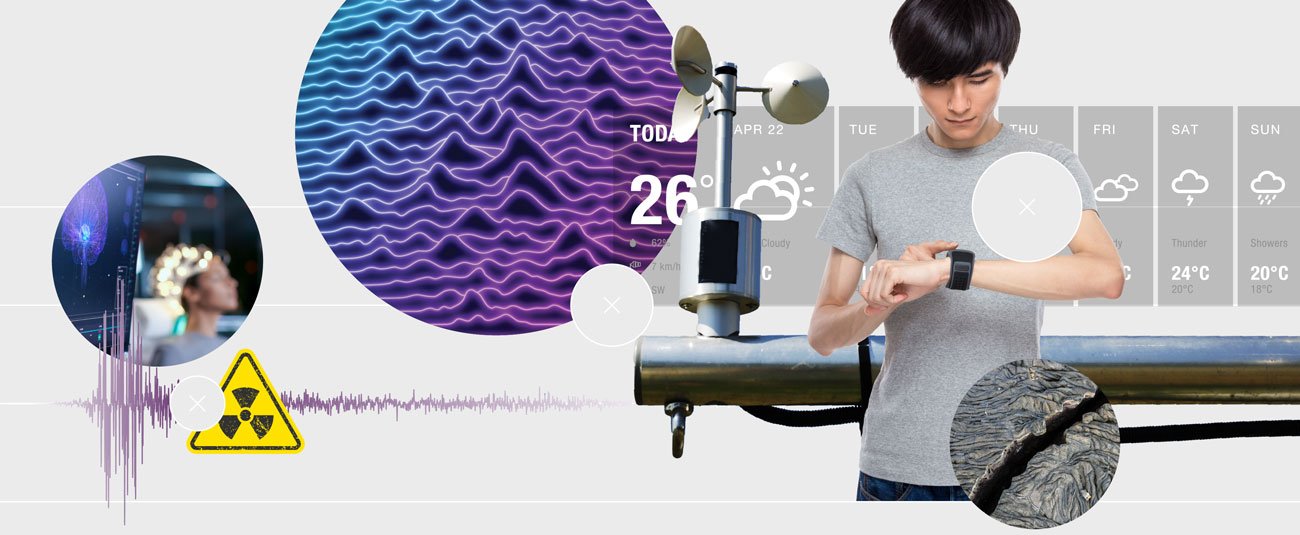 1.2.3Quantum Sensing and ImagingQuantum-enabled measuring and calibration devices are already in advanced stages of development. There are sensors, for example, that use quantum... more | 5-year horizonQuantum imaging improves medical diagnosticsA new generation of quantum-enhanced imaging delivers more precise images in materials science and biology, in particular in neuroscience. Quantum inertial sensors complement GPS systems and quantum gravity detectors are deployed for geological surveys and very precise seismological monitoring (including earthquake prediction and nuclear test detection). Quantum clocks are used for improved GPS systems and for time-stamping algorithmic trading transactions. Quantum sensors distinguish between atmospheric isotopes in efforts to monitor climate change. | 10-year horizonQuantum detectors monitor earthquakes and nuclear testsConnected via quantum channels, ultra-precise networks of quantum sensors are deployed for a variety of applications: for example, spectrometers for the analysis of gases in atmospheric science and climate change modelling, seismic monitoring and increasing the precision of international unit standards. | 25-year horizonHandheld quantum sensors detect and diagnose consciousnessQuantum sensors and non-invasive imaging systems are routinely employed in medical diagnostics and healthcare. They are miniaturised and integrated into portable handheld devices and wearable technology. Satellite-borne quantum gradiometers may replace GPS with ultra-precise magnetic field measurements. |
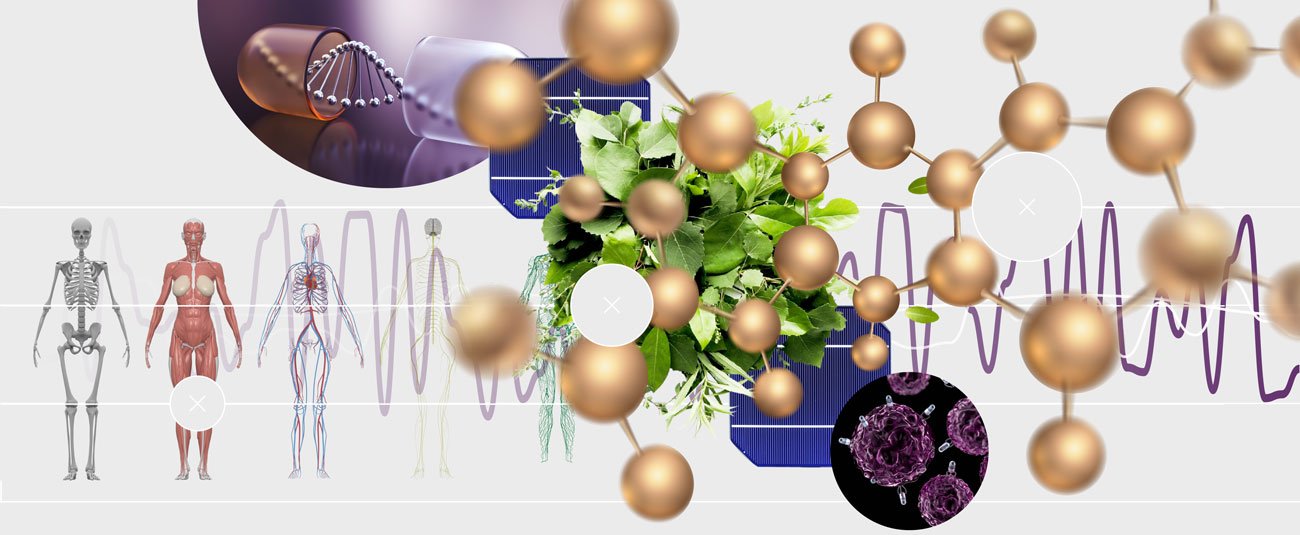 1.2.4Quantum FoundationsQuantum theory is still a rapidly evolving field, and academic researchers are investigating a number of speculative ideas that could... more | 5-year horizonQuantum biology becomes establishedFundamental research continues to investigate quantum effects in biology, which becomes an established field of study.16 New possible violations of traditional causality continue to invite speculation about application in information processing. | 10-year horizonPossible medical applications emergeInvestigations of quantum properties of atoms and isotopes might uncover mechanisms of interaction with biological processes, such as in anaesthesia17 and medication.18 There will be new ideas for new breakthroughs in sciences that open the path for new applications. | 25-year horizonQuantum foundations research delivers commercial technologiesQuantum sensor technology might be re-purposed to deliver activation of components of cellular biology for micro-level medical interventions. Investigations in quantum information theory and quantum thermodynamics lead to innovations in nanomachines and biological applications. There will be surprising new, as-yet unknown applications of quantum technology at that scale. |
| 1.3Unconventional Computing | |||
|---|---|---|---|
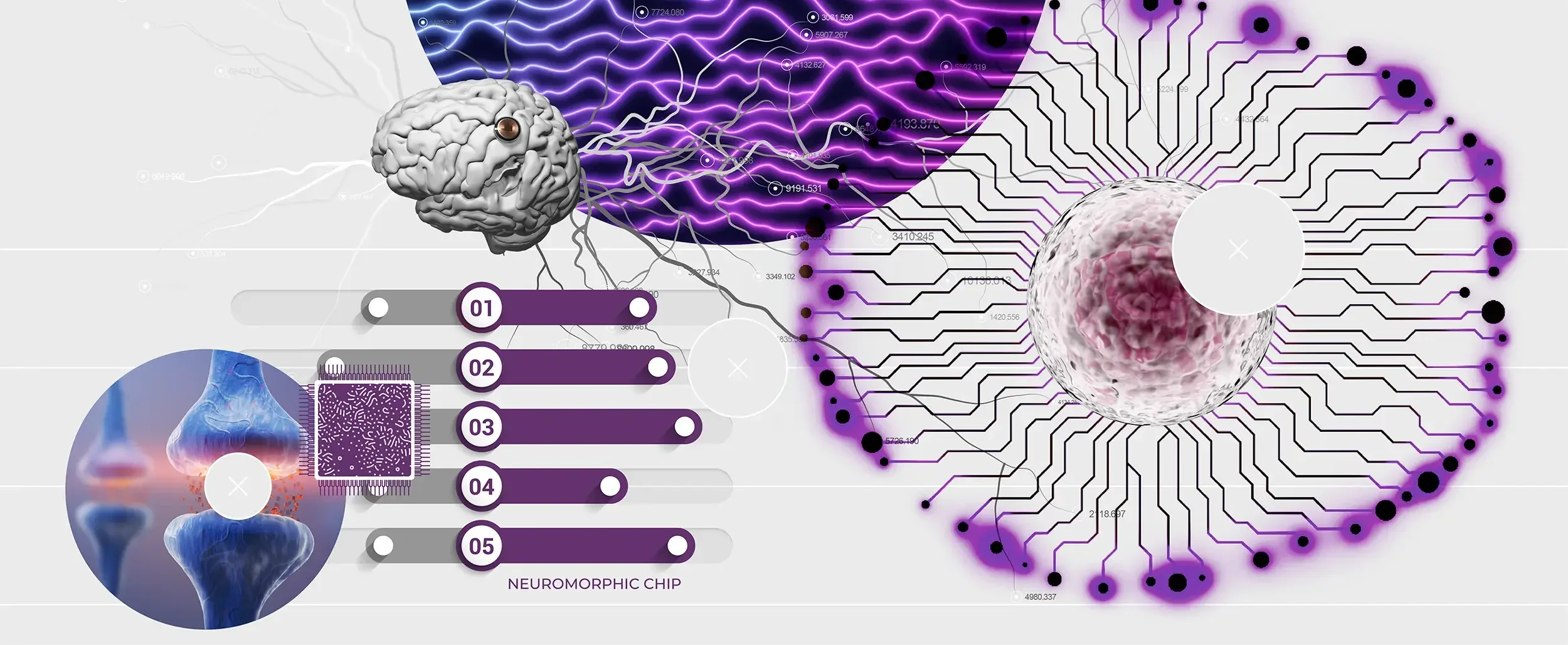 1.3.1Neuromorphic ComputingNeuromorphic computing seeks to implement relevant aspects of structure and function of biological circuits as analogue or digital representations on... more | 5-year horizonUseful neuronal architectures emergeMore sophisticated models of neurons and a deeper understanding of plasticity rules boost the capabilities of neuromorphic architectures. Algorithms for navigation, trajectory generation and motor control create building blocks that can be deployed in small robots, but only in research settings as they still underperform deep learning. Neuromorphic technologies that mimic how the brain processes vision and smell show promise. | 10-year horizonNeuromorphic computing is developed for embodied AINew memory-based hardware better suited to implementing analogue spiking networks reaches commercial scale. Neuro-emulators carry out brain-scale simulations of bio-inspired architectures, advancing fundamental understanding of brain dynamics. Neuromorphic engineers understand how to combine algorithmic building blocks to accomplish complex tasks, and the approach becomes the dominant computing framework for embodied AI that works with sensory signals and motion control. Low-power neuromorphic edge devices are used to pre-process all kinds of sensor data. | 25-year horizonExperiments demonstrate brain-like memory and logicWe have a better understanding of the processes and causal relationships between different levels of the brain, going from molecular to cellular to circuit to structures. We map the connectivity and structure, as well as the genetic programs and rules of plasticity by which the structure is formed. Various experimental realisations of neuromorphic computing demonstrate memory and logic that, while still primitive compared to the naturally evolved brain, work in recognisably mammalian ways. Robots powered by neuromorphic computing are widely deployed in the defence and care sectors. AI is pervasive and an integral part of our environment, with the technological basis of AI shifted to neuromorphic technologies. |
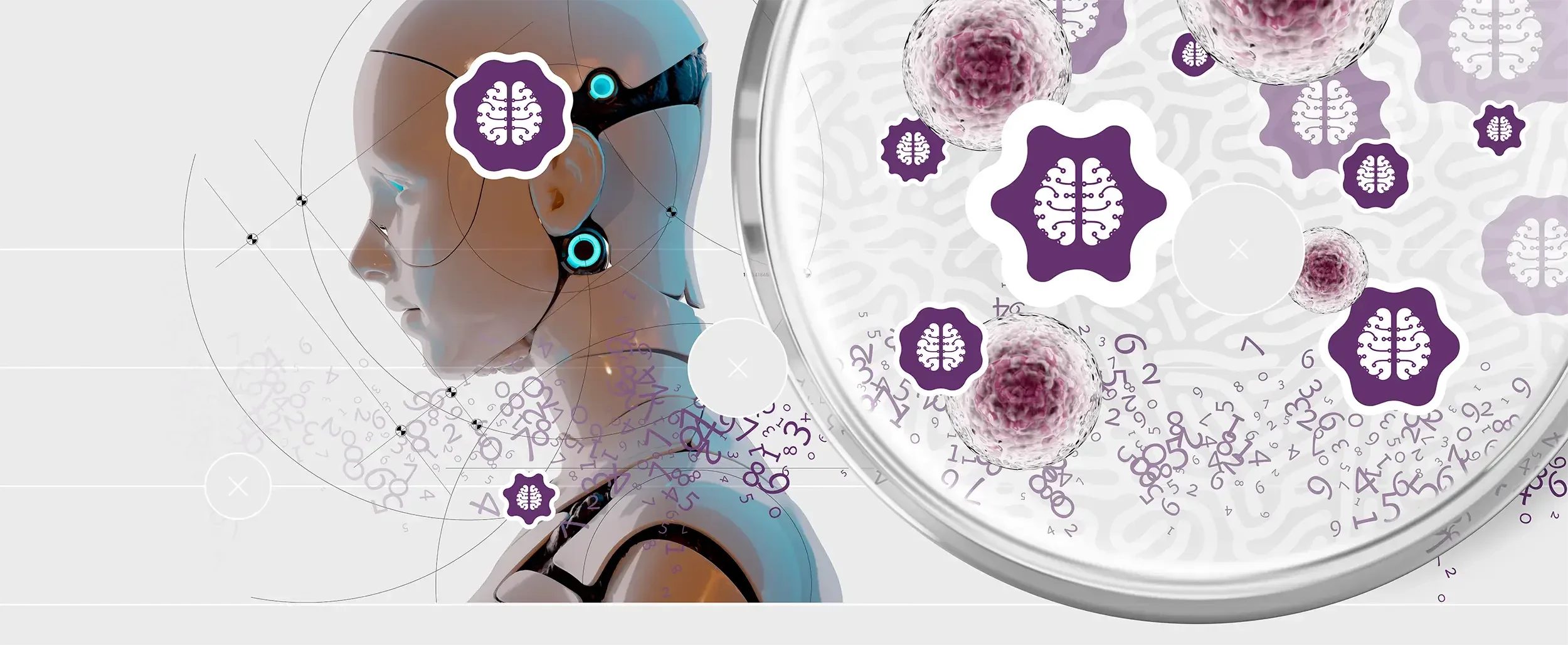 1.3.2Organoid IntelligenceRather than trying to create software and hardware that mimics the way the brain works, an emerging field of research... more | 5-year horizonOrganoids become more complex and addressableOur ability to build complex brain organoids with multiple cell types and extensive vascularisation improves significantly. The development of reliable, high density 3D microelectrode arrays makes it possible to accurately record organoids’ neural activity on the surface and in the core of the organoid and transmit data to them for processing. This provides rudimentary models of plasticity and cognition with immediate applications in drug development. | 10-year horizonFundamental science breakthroughs give organoids useful functionVast amounts of data collected from experiments with brain organoids helps tease out the specifics of the algorithms that underpin learning and memory in humans. This provides important insights for research into neurological diseases, and exciting new avenues for AI. Brain organoids connected to retinal, olfactory and other sensory organoids show promise as energy-efficient environmental sensors. The difficulty of packaging and sustaining organoids remains a barrier to practical applications. | 25-year horizonOrganoids are integrated with conventional electronicsImprovements in the technology required to sustain and interface with organoids mean that they can now be easily integrated with conventional electronics in an ethical manner. They are routinely used for sensory functions in robotics and interconnected networks of organoids are now able to carry out highly complex computations. Unconstrained by the body, brain organoids can be built at scales beyond anything possible in nature, allowing them to tackle novel computational problems. The rapidly improving capabilities of organoids provoke ethical work practices and the suppression of any development of consciousness and sentience. |
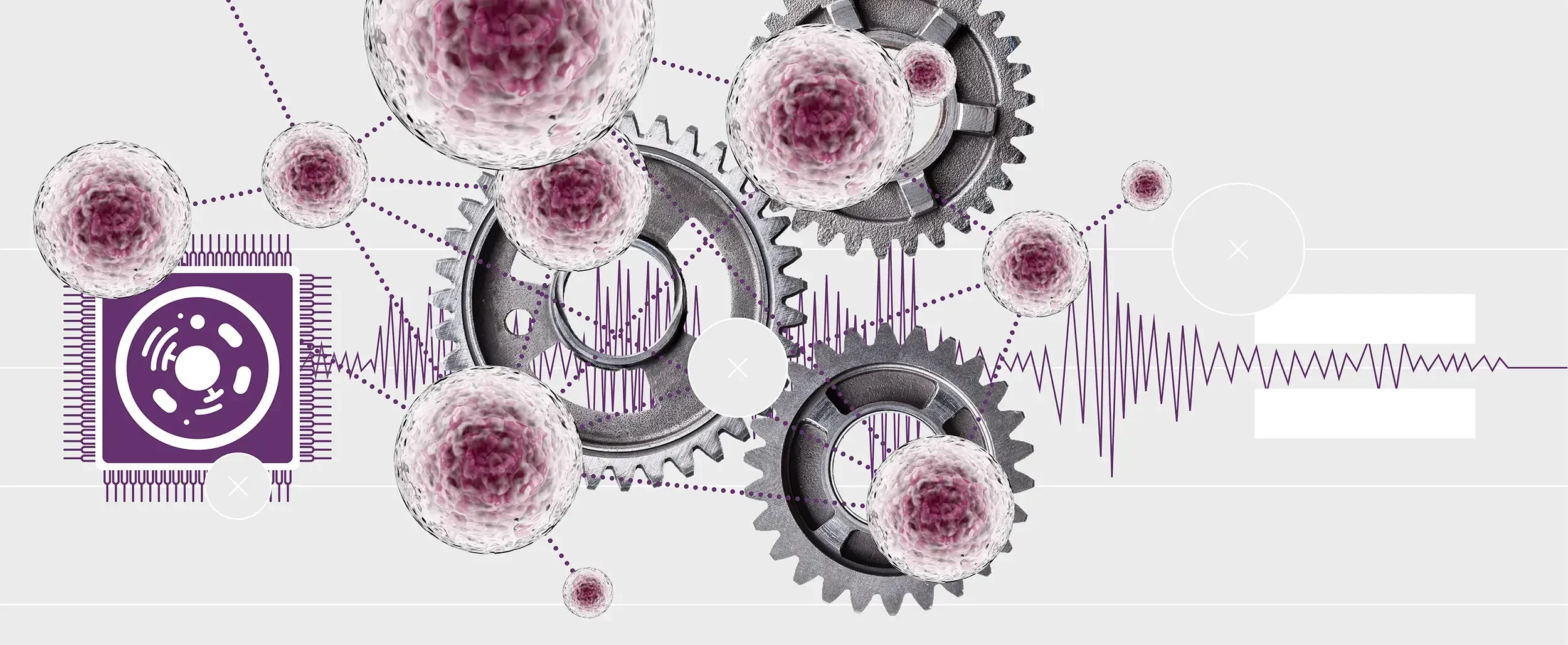 1.3.3Cellular ComputingMany biological processes take a molecular input, carry out some process using molecular or cellular “machinery”, and output a related... more | 5-year horizonParts and processes are standardisedStandardisation of biological parts and processes is established, opening the door to commercialisation. This leads to a flowering of computer-aided design tools to help programmers build cellular computers. Biological computing becomes the focus of an increasing number of venture capital-supported companies exploring the commercial potential of the field using proprietary biological hardware solutions. | 10-year horizonNew biocomputing pathways are designed and developedResearchers establish ways to harness a cell’s metabolism to perform computations, with applications in pollution remediation, disease diagnosis and atmospheric sensing. Hybrid models that combine cellular computing with other technologies show promise. Monitoring the mechanisms of bacterial evolution provides inspiration for the design of new biocomputing pathways. | 25-year horizonBiocomputing goes beyond Boolean logicResearch catalogues an array of natural biocomputing pathways and creates a new, post-Boolean set of logic operations and design tools for information processing. The full computational power of the cells is formalised. Biological computation combines with quantum biology research to create interesting and potentially fruitful new approaches to information processing. Regulatory progress allows programmed synthetic microbes to bring relief to stressed environments. |
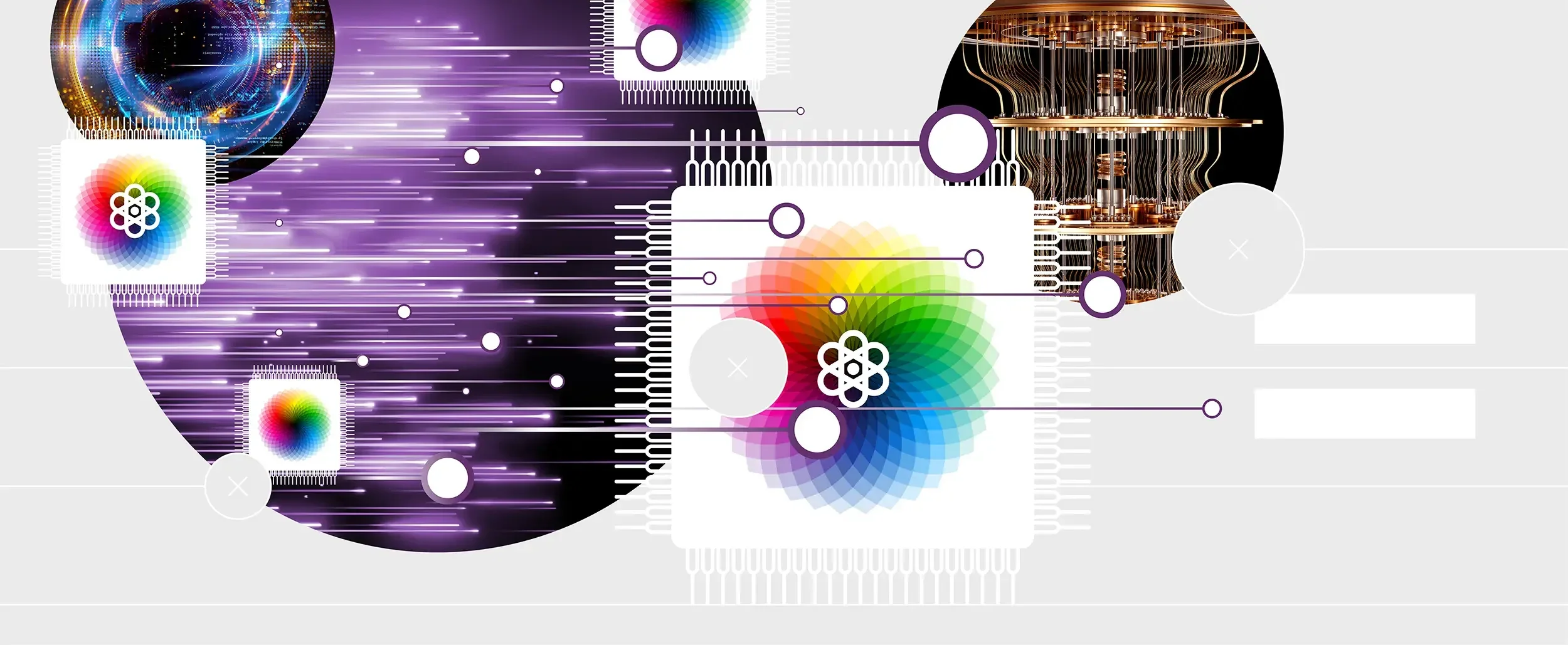 1.3.4Optical ComputingAlmost all of the modern world’s information processing tasks are powered by electrons. But scientists have long considered whether the... more | 5-year horizonPhotonic hardware matures and is put to workAdvances in chip manufacturing make it possible to combine photonic and electronic components on the same chip. These hybrid processors become a popular approach for running computer vision models in applications where speed and energy-efficiency are important. Photonics becomes a popular approach for processing inherently optical signals such as LIDAR and camera data. | 10-year horizonQuantum computing embraces photonic hardwarePhotonic approaches to quantum computing gain traction, thanks to the simplicity of the hardware compared to superconducting approaches and their compatibility with light-based quantum and classical communication technology. The technology also enables new analogue computing paradigms that significantly boost scientists’ ability to model some complex phenomena. | 25-year horizonFabrication progress creates high-performance photonic computingThe success of optical devices in certain specialised applications drives progress in fabrication and integration technology, helping photonics to close the gap with silicon-based chips. It becomes a general-purpose computing technology and, thanks to faster processing speeds and much lower-energy requirement, replaces conventional computing hardware in a several important tasks and applications. |
| 1.4Augmented Reality | |||
|---|---|---|---|
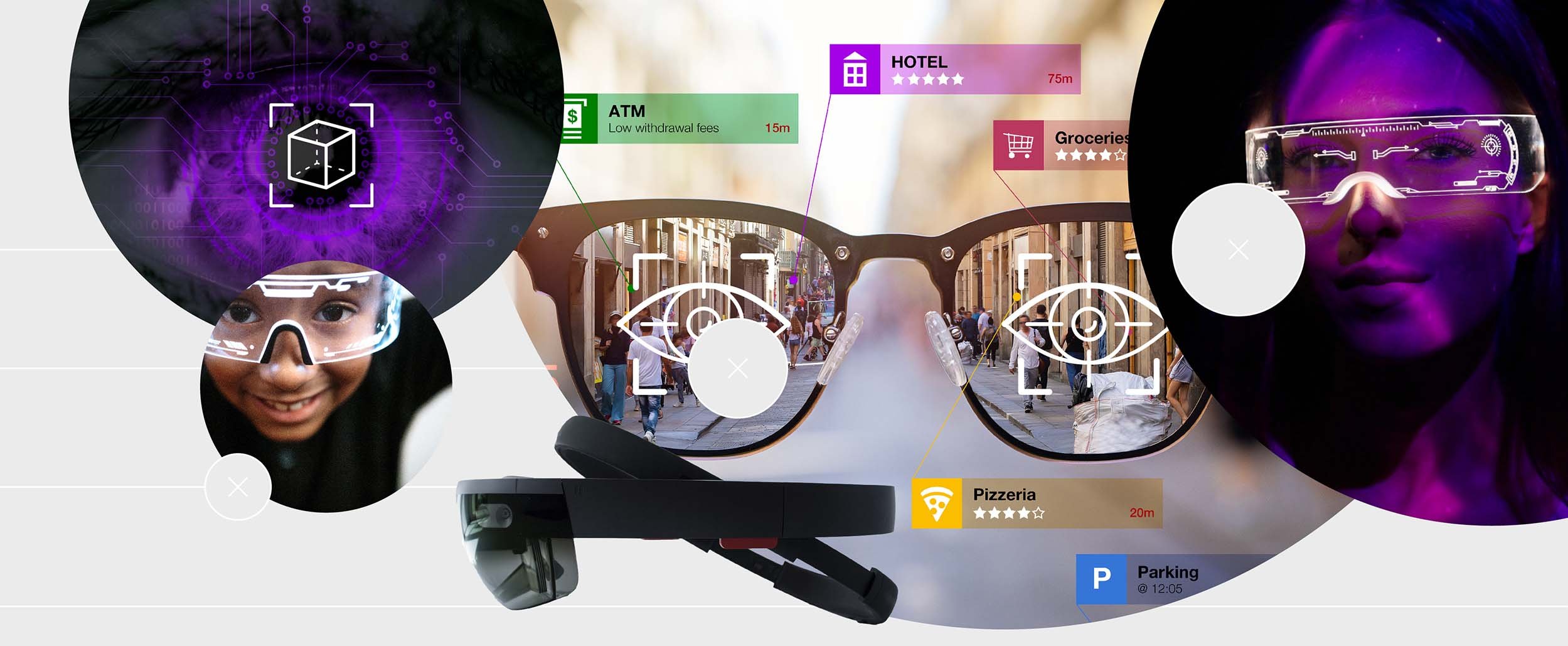 1.4.1Augmented reality hardwareAR hardware developments have been spearheaded by advances in microelectronics, sensor technologies and vision equipment, which have also reduced the... more | 5-year horizonHardware begins to matureThe first generation of AR glasses reaches maturity, with widespread industrial and commercial use for those working in field operations. Optical breakthroughs improve field of view, but most processing is still done on a companion smartphone and beamed to glasses over 5G. A breakout product from a leading device company could start to make consumer applications attractive. | 10-year horizonAR displays can be worn all dayThe heat dissipation problem is solved, making it possible to build AR devices indistinguishable from normal glasses. This allows people to wear them all day, replacing the smartphone as the primary digital interface. Improvements in display resolution make the devices useful for knowledge work like information processing and 3D collaboration. Devices become capable of switching seamlessly between AR and VR, opening the gates to the Metaverse. | 25-year horizonAR and VR begin to feel like realityGeneralised haptic interfaces that can replicate a broad range of tactile sensations are realised, making both AR and VR experiences almost indistinguishable from reality. Smart contact lenses replace smart glasses as the primary AR interface, while advances in brain-machine interfaces start to make it possible to transmit visual and haptic information directly to the brain. |
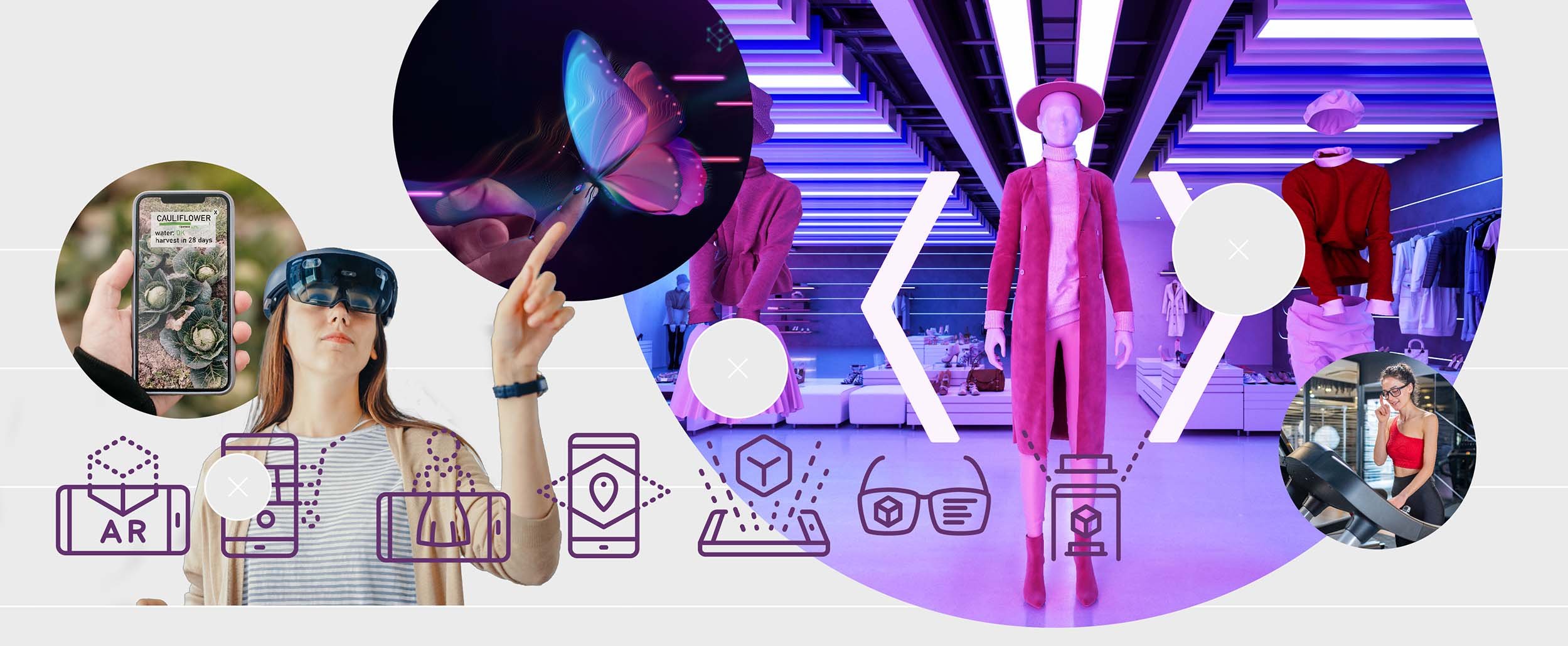 1.4.2Augmented experiencesEarly incarnations of AR will be concerned with two fundamental activities: learning about the world and interacting with other people.... more | 5-year horizonAR overlays for simple informationAR is primarily used as a display replacement, overlaying simple information like navigation instructions, translations or diagnostics, or allowing people to make video calls. User interfaces become standardised, making it easier to switch between AR apps. Breakthroughs in continual learning AI begin to make it possible for AR software to adapt to users, and to enable collaboration and shared experiences. | 10-year horizonConsumer-grade glasses and adaptive user interfacesAI-powered adaptive user interfaces that can understand the environment and personalise themselves to a user's preferences will have been perfected in time for the release of consumer-grade AR glasses. The technology will start to provide everyday users with always-on AI support in their everyday lives. The boundary between AR and VR becomes blurred: breakthroughs in graphics enable complex virtual content, such as realistic shading and dimming by virtual objects on the real-world view, and vice-versa. | 25-year horizonIndividually-tailored reality becomes the normVirtual content becomes indistinguishable from reality thanks to dramatic improvements in graphics and associated technology. Each AR user now has a personalised AI assistant that continually tailors their experience of reality to optimise all aspects of their life. |
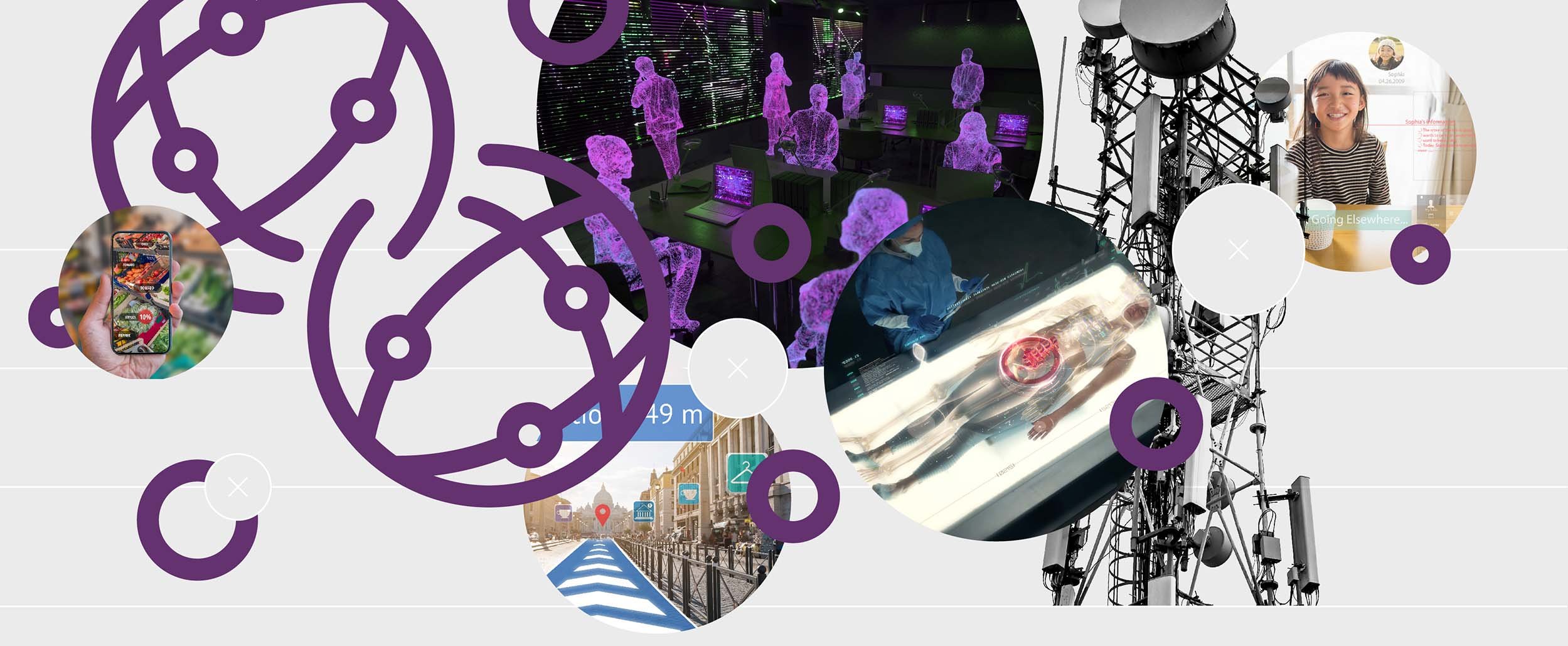 1.4.3AR platformsConnecting the virtual and the physical worlds will require a new global computing infrastructure. Responsive 3D content tied to spatial... more | 5-year horizonEarly commercial AR applications emergeA global roll-out of 5G technology provides the backbone for early commercial applications of AR. Work commences on creating new standards for AR content that will enable interoperability across different platforms and services. | 10-year horizonHigh-fidelity AR experiences transmitted wirelessly5G is established and used as low-latency access for off-device computation and streamed applications. The first ideas for using the speed and data capacity of 6G technology begin to emerge, and engineers plan for delivery of high-fidelity AR experiences to headset via wireless, significantly boosting realism and immersion. Companies dramatically expand their cloud infrastructure to support the huge amounts of data required to support millions of AR users. Moderating AR content becomes a major concern for AR platforms. | 25-year horizonEra of the open metaverse beginsBreakthroughs in the processing power of AR devices means content no longer has to be served from the cloud, reducing infrastructure requirements again. Platforms have settled on common standards that allow seamless interoperability, creating an open metaverse where users can easily transition between different AR services and experiences. |
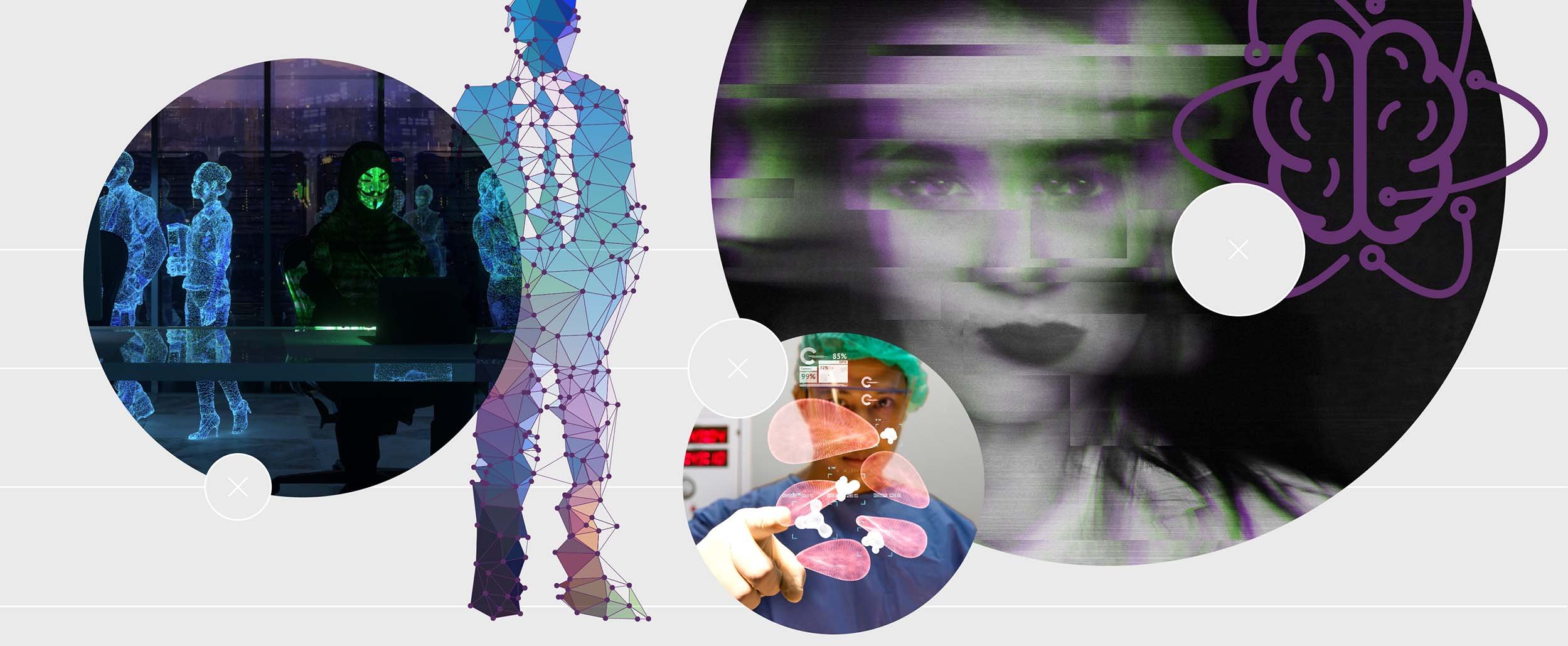 1.4.4Human factors of ARAR will lead to a blurring of the boundaries between the physical and digital worlds, which could have profound impacts... more | 5-year horizonResearch maps out social implications of ARSimple consumer AR devices that implement basic features like image filters prompt a major push to study their impact on human behaviour. More advanced commercial glasses become a crucial tool in studying perception and cognition. Immersive simulations of AR in VR help researchers begin to map out the social implications of the technology. | 10-year horizonGovernment regulation beginsAs AR becomes a consumer technology, concerns around its potential impact on society become more salient, forcing governments to start regulating the industry. AR glasses become a powerful medical tool that provide early warning of disease and help optimise healthy behaviours. | 25-year horizonPervasive AR threatens shared realityAR is so pervasive that it becomes necessary to find ways to preserve a shared experience of reality in order to avoid compromising societal cohesion. The ability to create virtual experiences that are indistinguishable from reality makes it increasingly easy to manipulate people for commercial or political purposes, forcing governments to impose strict controls on AR platforms. |
| 1.5Collective Intelligence | |||
|---|---|---|---|
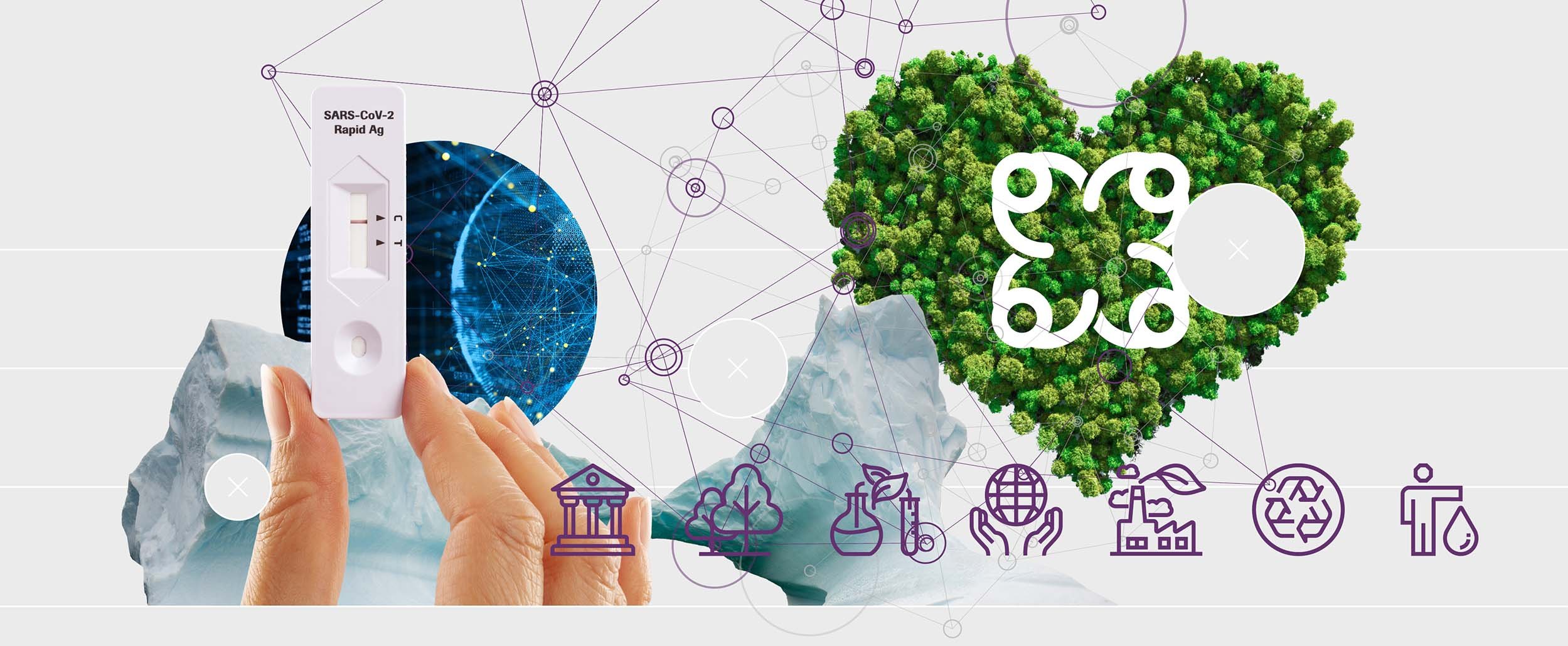 1.5.1Large-scale collaborationDigital technology now makes it possible to collaborate on scales unimaginable in the past. This has led to a plethora... more | 5-year horizonBasic CI becomes everyday toolCI will become more ingrained in everyday life, with many micro-collective intelligences emerging to help people deal with a range of issues, such as getting support for specific medical conditions, DIY home repairs, and business or personal mentoring. | 10-year horizonCI applications growIdeas from CI start to be applied to solving big global challenges such as climate change, access to water and pandemic response. Organisations like the Intergovernmental Panel on Climate Change embrace new tools that use a combination of AI and CI to better organise scientific knowledge and bring in perspectives from more diverse groups. | 25-year horizonOpen innovation hits the mainstreamDemocratic assemblies around the world embrace the CI tools of deliberative democracy to involve people far beyond the elected representatives in political decision-making. Companies' use of open innovation to solve problems becomes mainstream. |
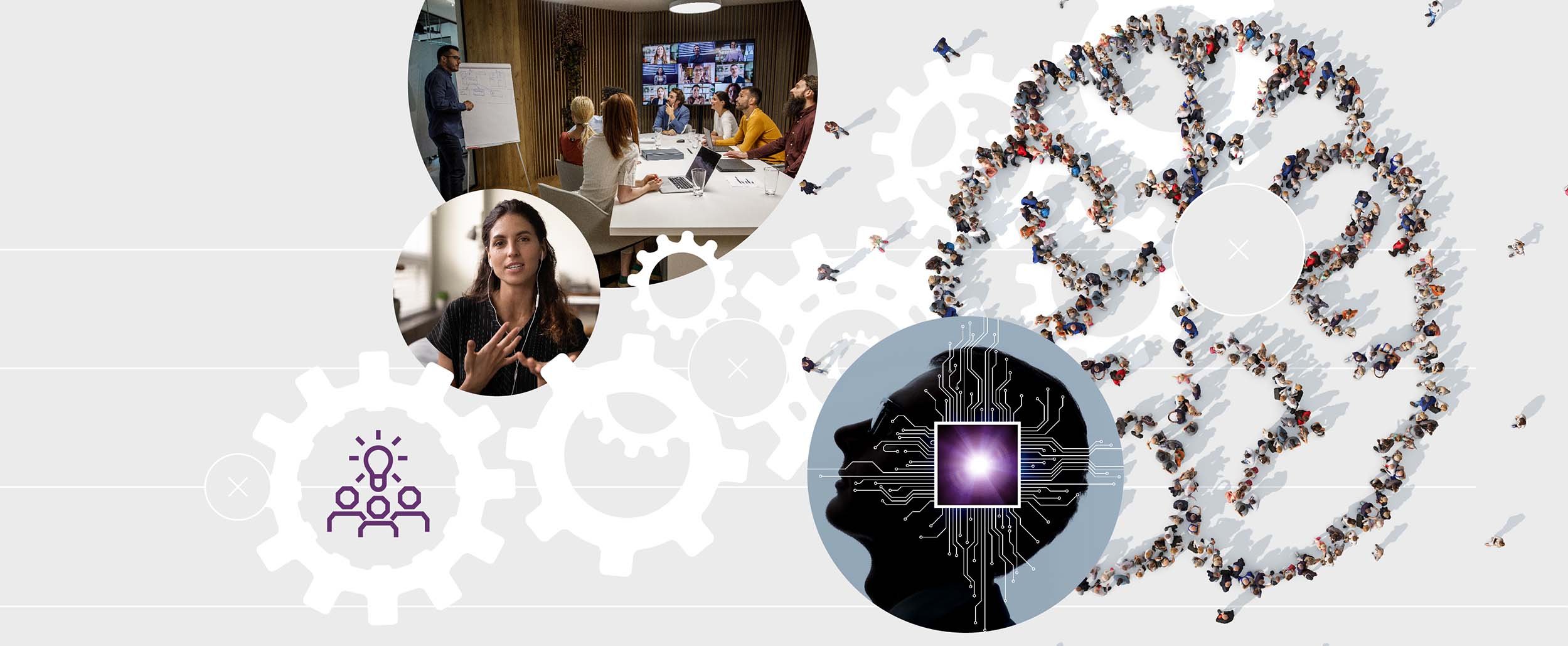 1.5.2Smarter teamsResearchers are now trying to understand and enhance collaboration within teams, building on previous work in organisational psychology, behavioural economics... more | 5-year horizonUnderstanding of organisational structures aids CIResearchers develop a better understanding of the organisational structures and behaviours that negatively impact CI, making it possible to develop strategies to neutralise them. Simple AI-powered facilitators designed to lubricate group deliberations become commonplace. | 10-year horizonAI moderates discussionsDecisions in crucial areas like medicine and criminal justice are made by systems that combine individual human knowledge, orchestrated collective intelligence and AI supervision. More advanced AI systems are now able to moderate discussions between groups of humans in ways designed to enhance CI. | 25-year horizonBrain interfaces augment human deliberationA combination of AI and crowd intelligence provides everyday people with a form of "cognitive autocomplete" via brain interfaces that help them quickly access important information and augment their ability to deliberate. |
 1.5.3Collective cognitionThe theory underpinning CI research remains fragmented and underdeveloped, which limits our ability to design interventions that can enhance CI.... more | 5-year horizonCoherent theory of CI emergesAcademic research delineates the various national, cultural and social influences on collective cognition, paving the way for a coherent theory of human CI. Attempts to harness CI for practical applications are increasingly informed by CI theory. | 10-year horizonMetrics quantify CIData-gathering from online participation in collective activities allows researchers to develop metrics that quantify different aspects of CI. This is used to both develop better models of collective cognition and to act as a crucial input for digital tools designed to improve CI. | 25-year horizonCI theory incorporates machinesComprehensive models of collective cognition make it possible to boost the effectiveness of both small and large groups of humans. CI theory is broadened to incorporate increasingly intelligent machines in theories of collective cognition. |
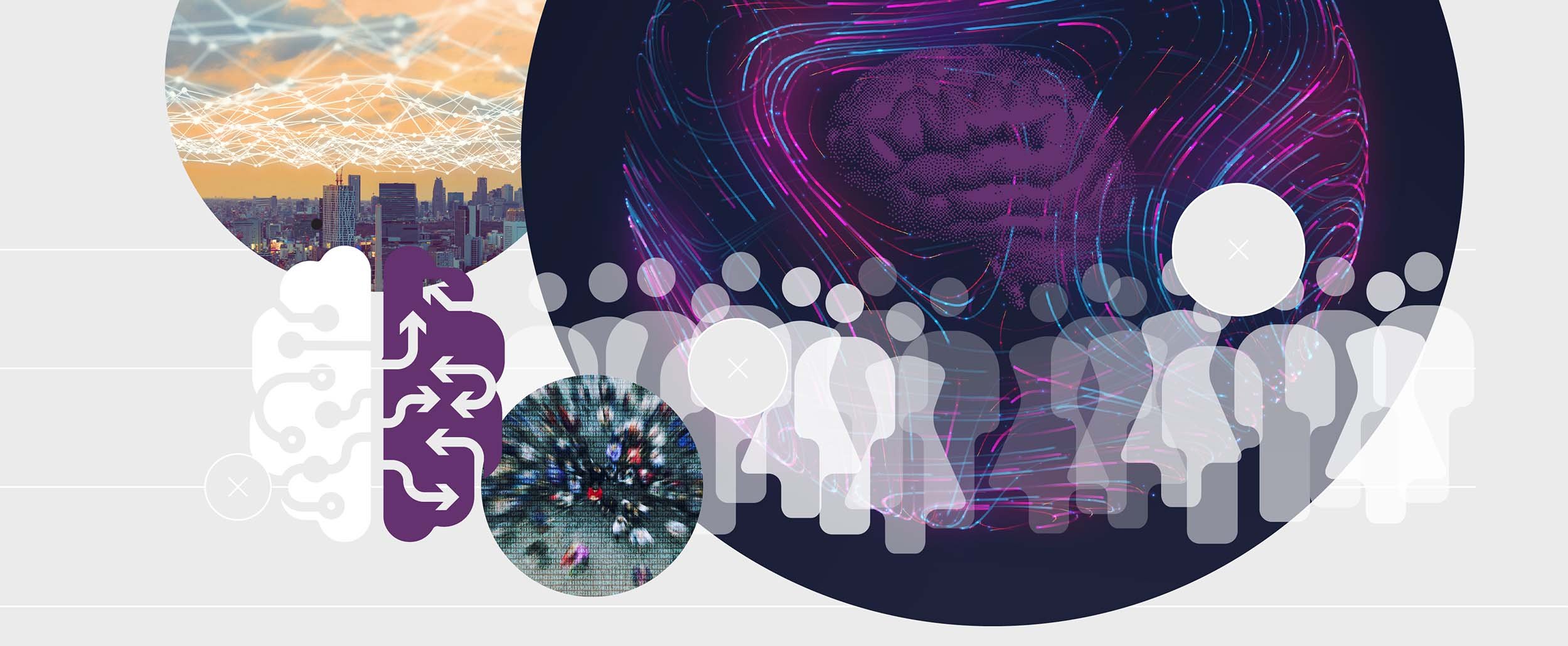 1.5.4Human-computer interactionUsing technology to effectively enhance CI will require breakthroughs in the theory and practice of human-computer interaction. Computer systems designed... more | 5-year horizonImproved interaction boosts effectivenessRenewed focus on improving how humans interact with CI tools significantly improves their effectiveness. The increasing use of technology to boost human collaboration prompts efforts to begin monitoring its impact on human behaviour and relations. | 10-year horizonAI breakthroughs bring more effective collaborationBreakthroughs in key AI capabilities like context-awareness and continual learning make it possible for CI tools to adapt to users and more effectively guide human collaboration. Evidence that some efforts to harness CI are actually causing humans skills to atrophy prompts a refocusing of efforts on tools that enhance human capabilities rather than replacing them. | 25-year horizonArtificial agents join collaborative teamsAdvances in AI make it possible to imbue AI with a theory of mind, allowing artificial agents to become useful members in AI-human teams. Organisations such as IPCC and UN use human-AI teams to aid cross-cultural negotiations. |
| 2.1Cognitive Enhancement | |||
|---|---|---|---|
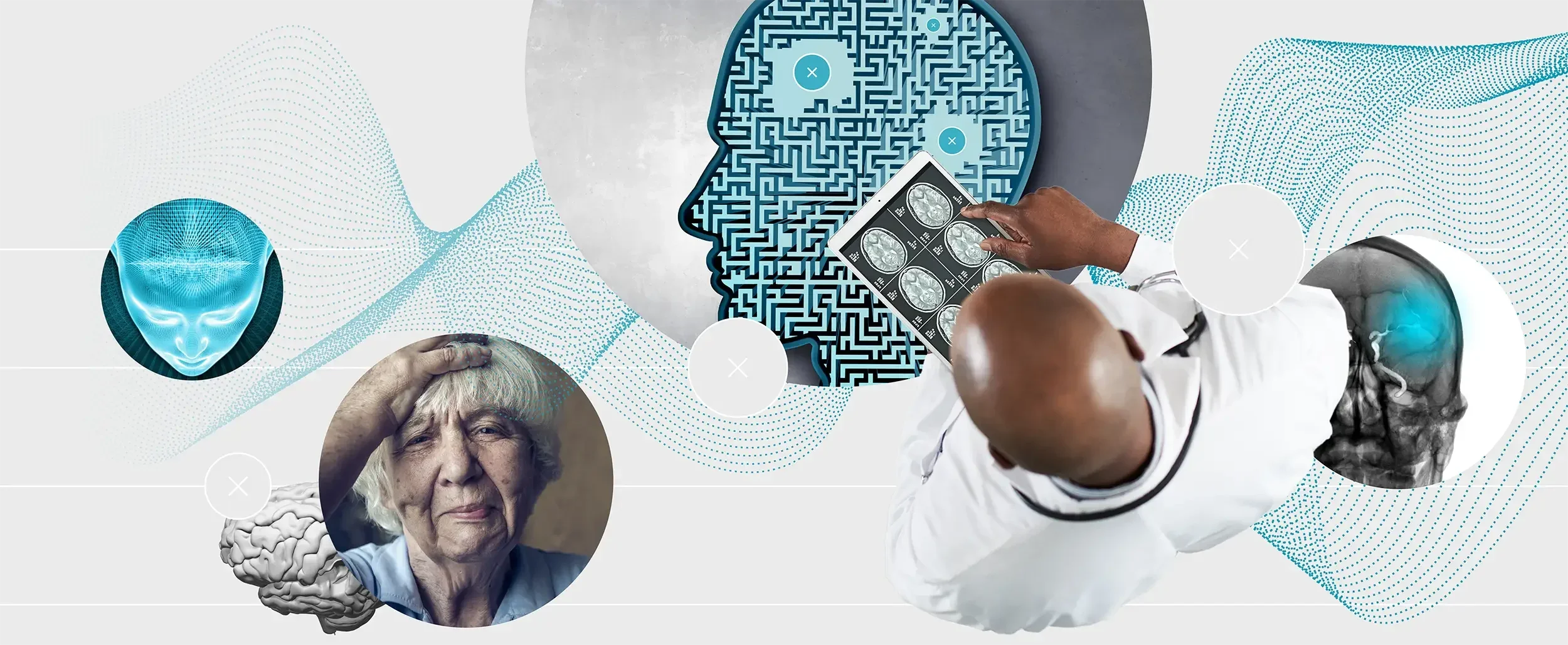 2.1.1Fundamentals of cognitionCognition comprises, among other features, executive function, focus, cognitive flexibility, and working memory. While these can be impaired by a... more | 5-year horizonBiomarkers of cognitive decline are understoodResults from several ongoing trials yield biomarkers of normal cognitive decline; new studies give robust evidence of which methods can slow the cognitive decline that comes with age. | 10-year horizonResearch provides effective brain-boosting techniquesA Chinese study yields experimental results on what empirically can prevent premature cognitive decline. New insights from biomarkers show which types of cognition respond best to what kind of boosting. | 25-year horizonDigital twins improve enhancement outcomesDigital twin models of brains like The Blue Brain Project will allow us to make specific tweaks to models to predict specific enhancement outcomes. Similarly, a combination of genetic engineering and implants will allow widespread enhancement of intelligence in healthy individuals. |
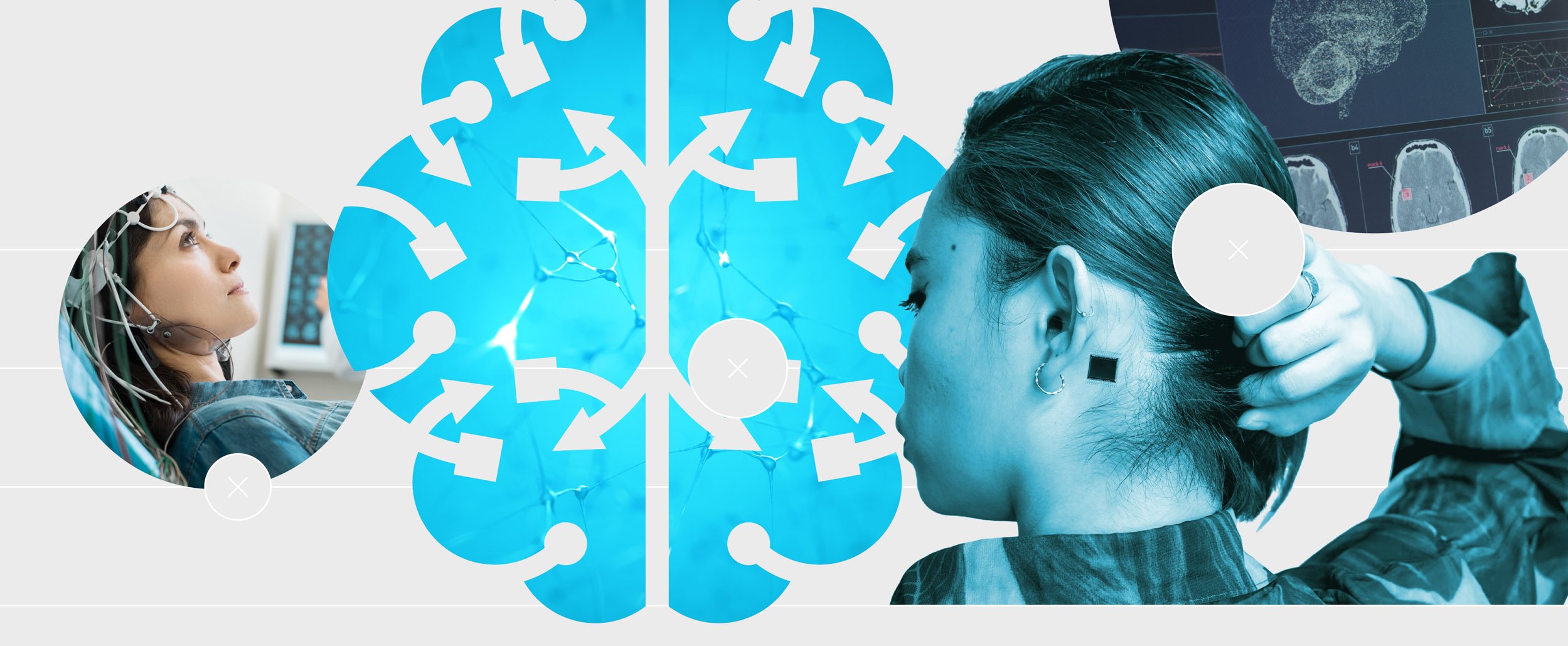 2.1.2Brain monitoringRapid advances in a wide range of technologies make it possible to measure brain state markers from electrical potentials to... more | 5-year horizonMore transparent brainsBlue Brain Observatory generates a reference brain simulation to allow testing of interventions on cognition in silico. AI continues to shatter records in parsing meaning from the brain’s electrical signals. Brain state trackers will become more ubiquitous in the workplace. | 10-year horizonOpen brain data stimulates researchDigital twins of brain tissue provide sandbox systems that show which interventions alter cognition, and provide functional and causal links between the epigenome and some brain functions. Miniaturisation makes portable brain monitoring devices commonplace. | 25-year horizonRemotely-operated monitors are implanted in the brainOptogenetics and gene therapy advance to the point where devices can be implanted into the brain and operated remotely to monitor brain activity at high resolution. Cheap, portable non-invasive imaging technologies are used in a greater variety of real-world situations. Many of these, such as lie detection by law enforcement, provoke significant controversy. |
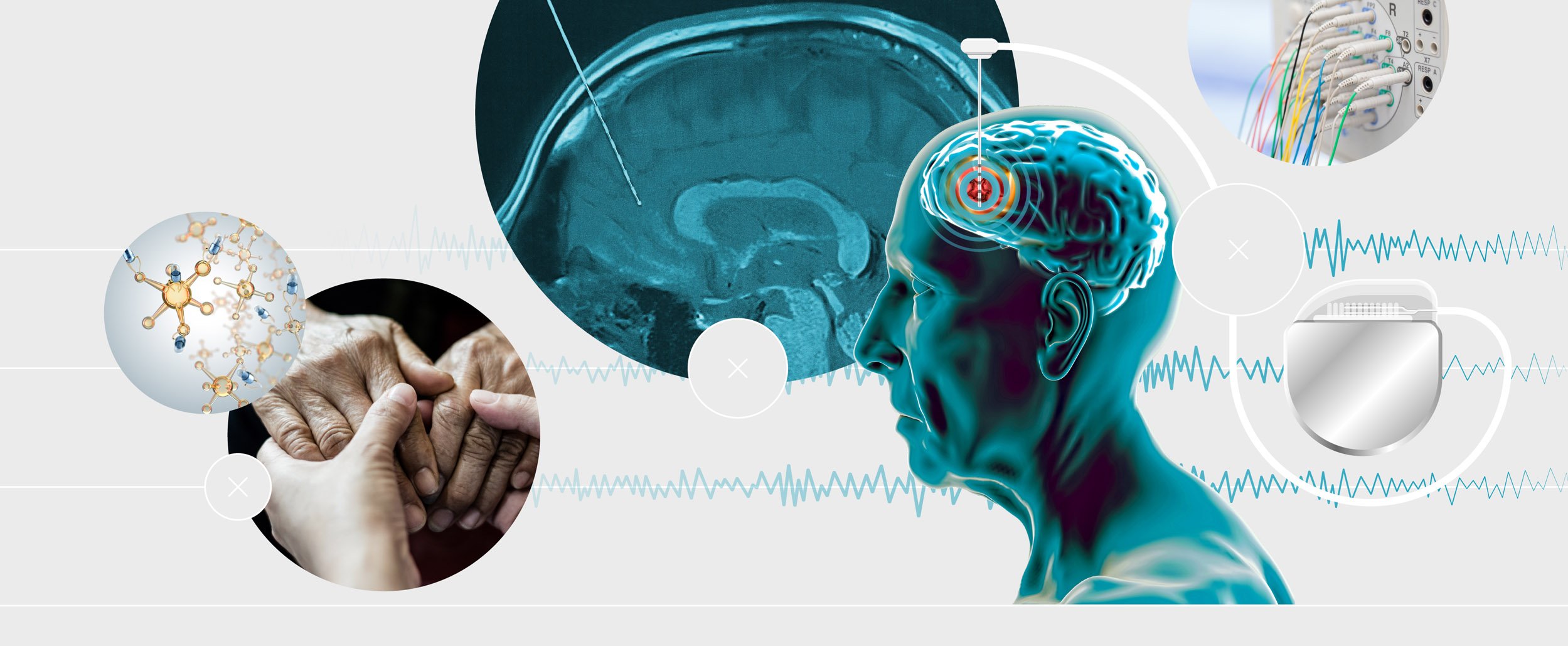 2.1.3Neuromodulation systemsA wide variety of interventions can change cognitive function. Some are behavioural, including exercise, meditation, sleep hygiene or cognitive training.... more | 5-year horizonBrain stimulation devices proliferateNext-generation implants like Neuralink are in human trials, allowing for simultaneous recording and stimulation in multiple regions across the brain. More electrode designs are approved for use in humans, including Stentrodes21 and Neuropixels.22 A DBS trial for Alzheimer’s sheds light on which brain areas are best for implantation. Edge computing aids processing on closed loop devices, hastening the acquisition of clinical neurological data. Wearable EEG devices enhance the depth and quality of sleep. | 10-year horizonMiniaturisation drives wider adoption of cognitive modulationAided by AI, miniaturisation and brain-based chip design, safer closed-loop implanted devices treat an increasing variety of diseases including depression. It becomes possible to identify areas of the brain where electrical stimulation gives healthy people a boost in memory capacity. Epigenome editing alters brain function, helping damp the effects of trauma, for example. | 25-year horizonThe era of high-precision genetic brain enhancement arrivesOptogenetics allows manipulation of specific networks and types of human memory with high resolution and precision. AI enables tailored epigenome editing in the brain to remove barriers to optimal cognition. Genetic technologies begin to improve memory and other cognitive functions and reduce the cognitive decline associated with ageing. |
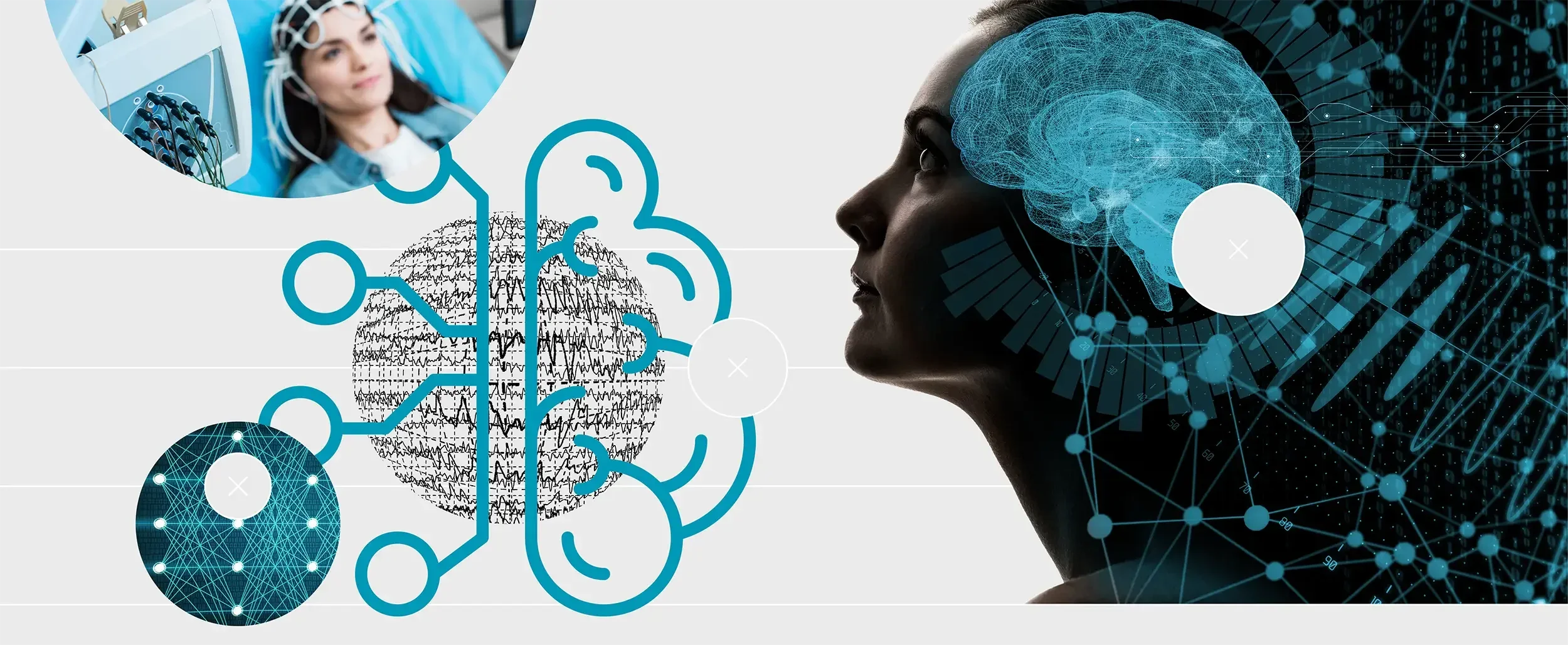 2.1.4Exogenous cognitionAmong the most important drivers of cognitive enhancement in the coming decade will be advances in artificial intelligence that allow... more | 5-year horizonNovel brain circuits are put to workArtificial cognition informs new kinds of circuits and architectures; those brain circuits start emerging in the world and into devices. Companies adopt the third thumb for efficiency gain in the workforce. | 10-year horizonBrain implants enhance cognition through exogenous AIPenetrating electrical brain implants improve the human mind by connecting it to artificial intelligence. Non-essential “cosmetic” augmentation of healthy brains becomes a growing trend. Pattern-detecting AIs working in conjunction with brain implants provide drug target prediction for combatting age-related declines in cognition and numerous neurological disorders. | 25-year horizonAI-informed gene editing changes biological memory and cognitionThanks to insights from AI, and better models of cognition, gene editing is possible for specific genes associated with memory and other cognitive functions, reducing the decline associated with ageing. Researchers begin to understand how human brains build internal models of the world, and use these insights to enhance the performance and usefulness of these models. Medium-scale digital twins are developed for personalised medicine that can function as “dress rehearsal” for any neurological intervention. It becomes possible to engineer a brain simulation with more neurons than exist in the human brain. |
| 2.2Human Applications of Genetic Engineering | |||
|---|---|---|---|
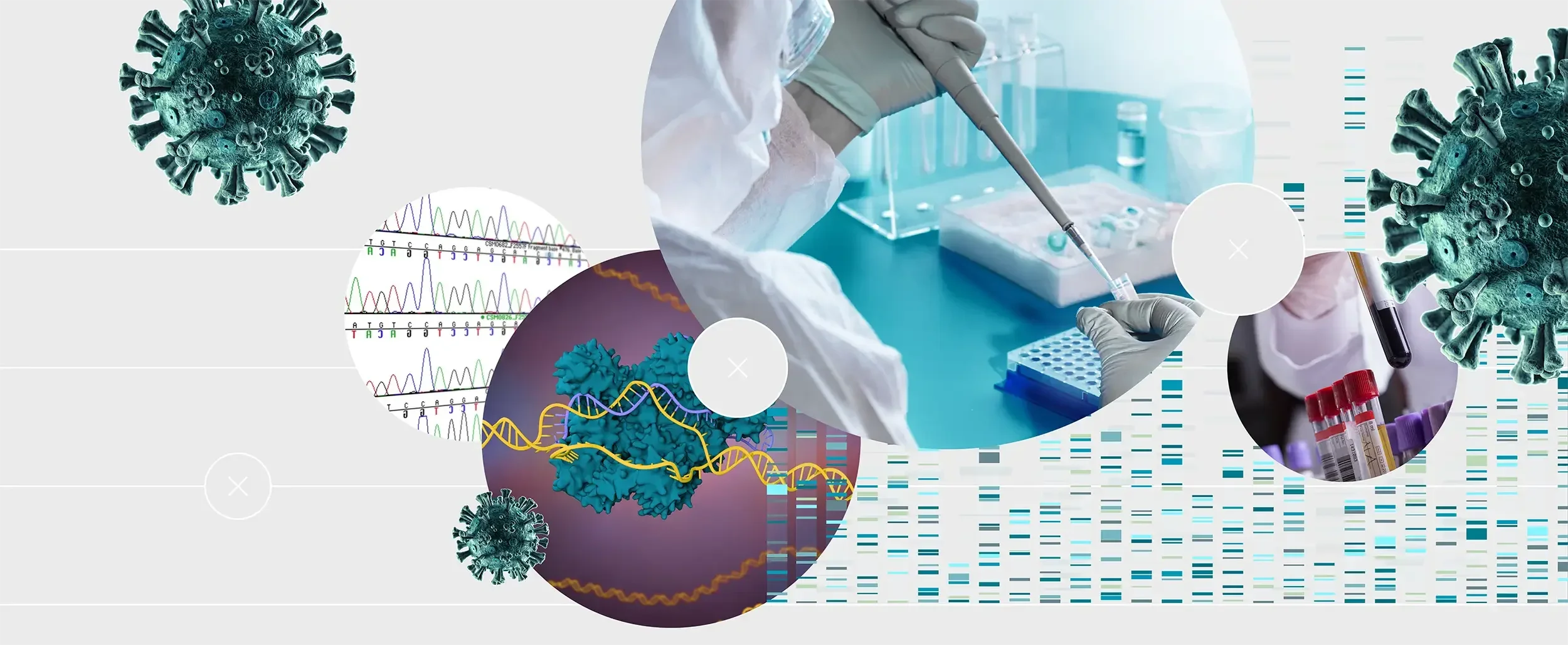 2.2.1DiagnosticsReading and interpreting the genome — whole genome sequencing of patient DNA — is increasingly common in medical practice for... more | 5-year horizonFaster, cheaper, better diagnostics become availableCRISPR-based diagnostic methods are developed for a variety of targets, including cancer, viruses and other pathogens. Rapid, reliable, widespread whole genome sequencing shortens rare disease diagnosis and cancer diagnosis, prognosis, and management. Cost drops to $100 or $200 a genome.12 Therapeutic investment explodes. Genome targeting for pathogen diagnosis comes to point of care settings, including pharmacogenomics when drugs are prescribed. | 10-year horizonGenome reading finds a broad range of applicationsThe time for whole human genome sequencing drops to an hour. Same day diagnosis of cancers and rare diseases shortens time to treatment. Genome sequencing influences the choices of partners based on genetic compatibility, as well as retirement plans and insurance. | 25-year horizonGene reading goes mainstreamRapid diagnostics enable to-go or home-based devices for pathogen detection and better prediction of complex diseases. Editing technology, combined with AI, obviates most genetic concerns over partner choice. Heritability and environmental conditions are included in assessments of polygenic risk scores for everything from cancer to obesity. |
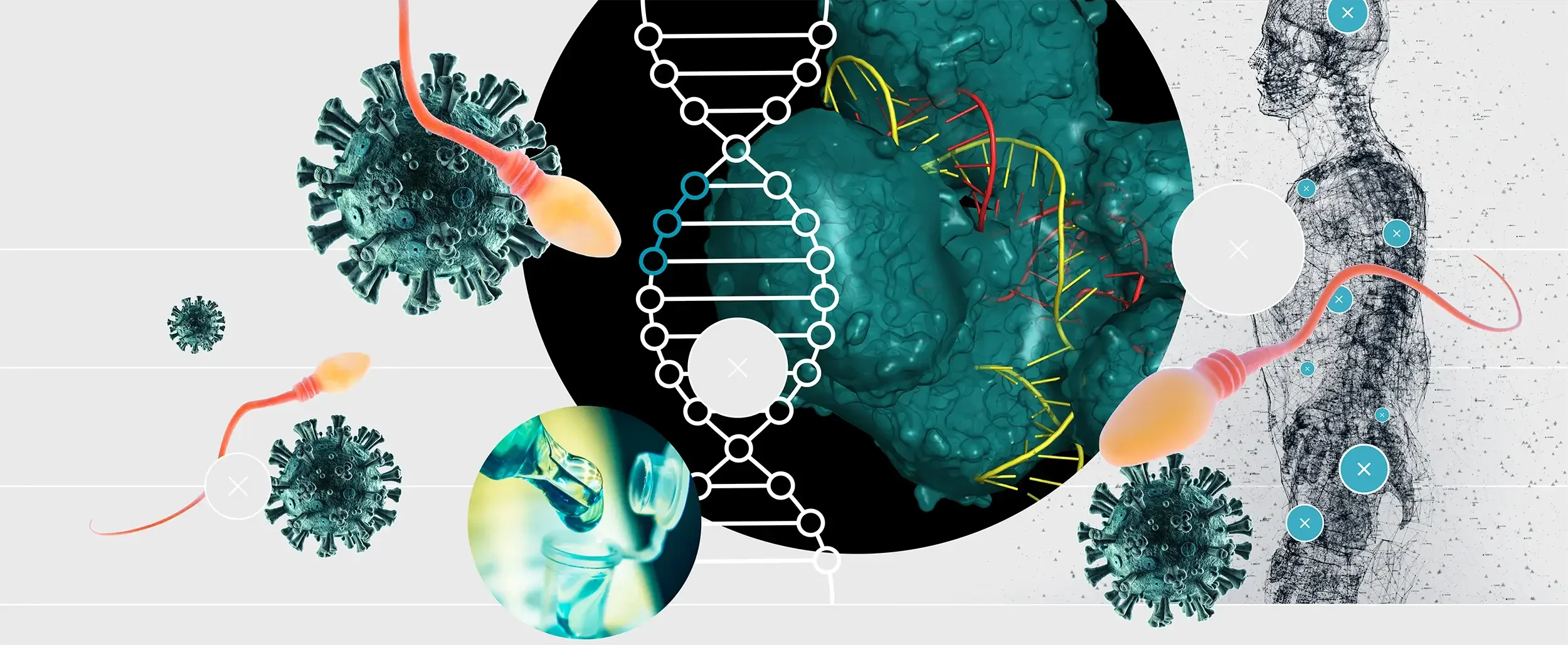 2.2.2Next generation editors and deliveryCRISPR-Cas9 is now the most widely used gene editing technology in the world, and has been successful in trials treating... more | 5-year horizonEx vivo and in vivo therapies advanceSeveral large-scale stage-III clinical trials for ex vivo therapies take place, with a number of therapeutics approved and commercially licensed.1920 Early-stage clinical trials of in vivo editing techniques, targeting easily accessible tissues such as the eye, or the liver, show results. In vivo therapies move to experimental clinics. CRISPR corrects for mitochondrial genetic disease in IVF procedures. Next-generation genome editors appear on the stage. | 10-year horizonSafer germline editing blurs boundaries between therapy and preventionResearchers engineer delivery techniques to address size and immune response: engineered AAV vectors deliver working genes to cells more efficiently, reducing the need for large doses, reducing cost. Haemophilia and macular degeneration are successfully treated with gene therapy.21 Trials commence using next-generation base and prime editors for polygenic diseases including heart disease and obesity. Heritable gene editing begins to gain limited acceptance, although not everywhere, as a consequence of successful somatic techniques and preclinical safety data. | 25-year horizonPolygenic editing erodes boundaries between therapy and enhancementIn vitro derived gametes can be edited safely before implantation. Many forms of gene editing are mainstream. It becomes possible to engineer radiation resistance, chemical warfare, and infectious diseases by altering single genes, enabling military applications as well as casual space travel. We use gene technologies to correct, slow down or even reverse processes linked to premature ageing to increase healthspan. A sleep-shortening gene is the first popular enhancement. Up- and down-regulating some specific genetic elements enhances some aspects of cognition. |
 2.2.3Engineered organism and AI-based toolsSynthetic organisms and AI will help advance genome editing for human applications in several crucial ways. For starters, synthetic organisms... more | 5-year horizonSynthetic biology circuits go in vivoExtremely rapid progress in machine learning and AI solves many obstacles to engineering proteins and enzymes. AI helps create de novo gene editor. Genome reading and writing allows us to build large genetic circuits composed of many repeated guide RNA sequences that enable us to simultaneously target multiple genes. AI leads to engineered proteins and enzymes. | 10-year horizonChimeras, synthetic viruses and other models become mainstreamSynthetic biology circuits, now in mammalian cell cultures, find applications in vivo and for enhanced control of genome editors for gene therapies. Chimeras generated by injecting human stem-cells into animal embryos grow organs for xenotransplantation, or grow human-like brain structures to study the effects of gene edits. Improved synthetic viruses and genome editors knock out genes in animal organs to supply the increasing need for human organ donation without the risk of rejection. Engineered cells and tissues serve as novel delivery systems to easily grafted tissues such as bone and skin. | 25-year horizonUniversal editors emergeEngineered cells and tissues are grafted into complex tissues like brain, or endocrine system. With prime and base editing, plus tisssues grown outside the body and reimplanted, modification becomes easier and cheaper, rivalling in vivo. Genetically modified viruses, synthetic viruses, and large genetic circuits are widely deployed for pre-emptive “gene surgery” on otherwise healthy people, directly linking genetic circuits to genome editors. We see the first demonstration in humans of universal cells carrying gene circuitry. |
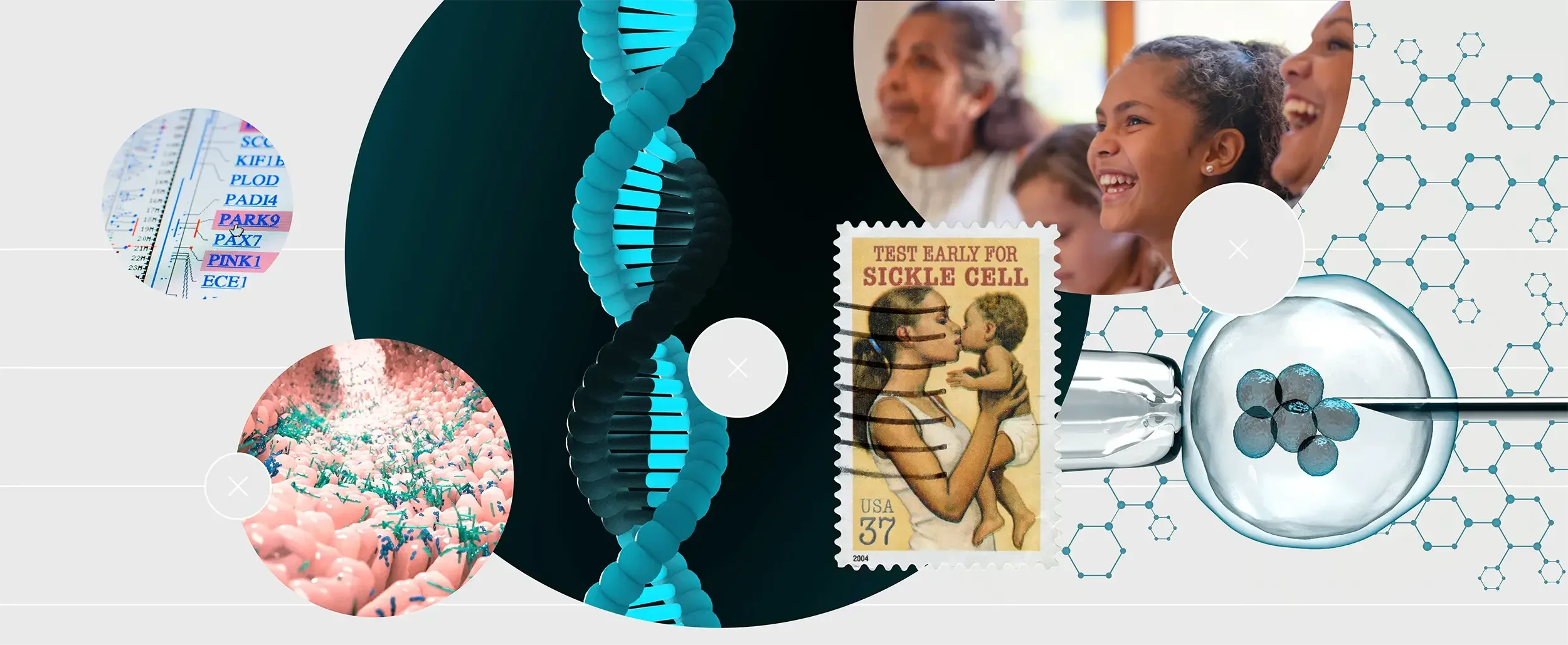 2.2.4Alternatives to direct gene editingExisting approaches to gene editing are all-or-nothing: gene sequences are altered, removed or added. However, some diseases manifest through inadequate... more | 5-year horizonDisease spread is monitored through metagenomicsMetagenomics advances make it possible to monitor the emergence (or re-emergence) of viral diseases with the goal of containing their spread. Epigenome editors alter epigenetic state at precise locations within the genome, lowering the chance of immune response, and are fine-tuned for first use on disease genes and tissues, and tested in vivo. New sequencing methods identify epigenetic modifications while preserving the accuracy of genome sequencing. Insights are gained into how interventions like diet and exercise alter gut microbiome. | 10-year horizonEpigenome editors are fine-tunedMetagenomics becomes a standard tool for microbial ecology laboratories, using methods similar to gene fingerprinting to profile microbial communities. Electrogenetics tools are put to work in editing eukaryotic systems, using redox-sensing transcription factors that have been identified in plants, and animals. Epigenome editing becomes titratable. | 25-year horizonCosmetic gene editing becomes possibleDelivery methods of enzymes and editors — whether gene or epigenome — become straightforward and open to dynamic control. Epigenome editing and electrogenetics helps people temporarily mute some genes or express others, making for temporary alterations including military night vision, radiation, viral and chemical resistance. Cosmetic mutations, such as temporary eye colour changes, are popular in body-hacking subcultures. Fundamental alterations to the microbiome make humans capable of digesting cellulose or extracting nutrition from plastic. |
| 2.3Healthspan Extension | |||
|---|---|---|---|
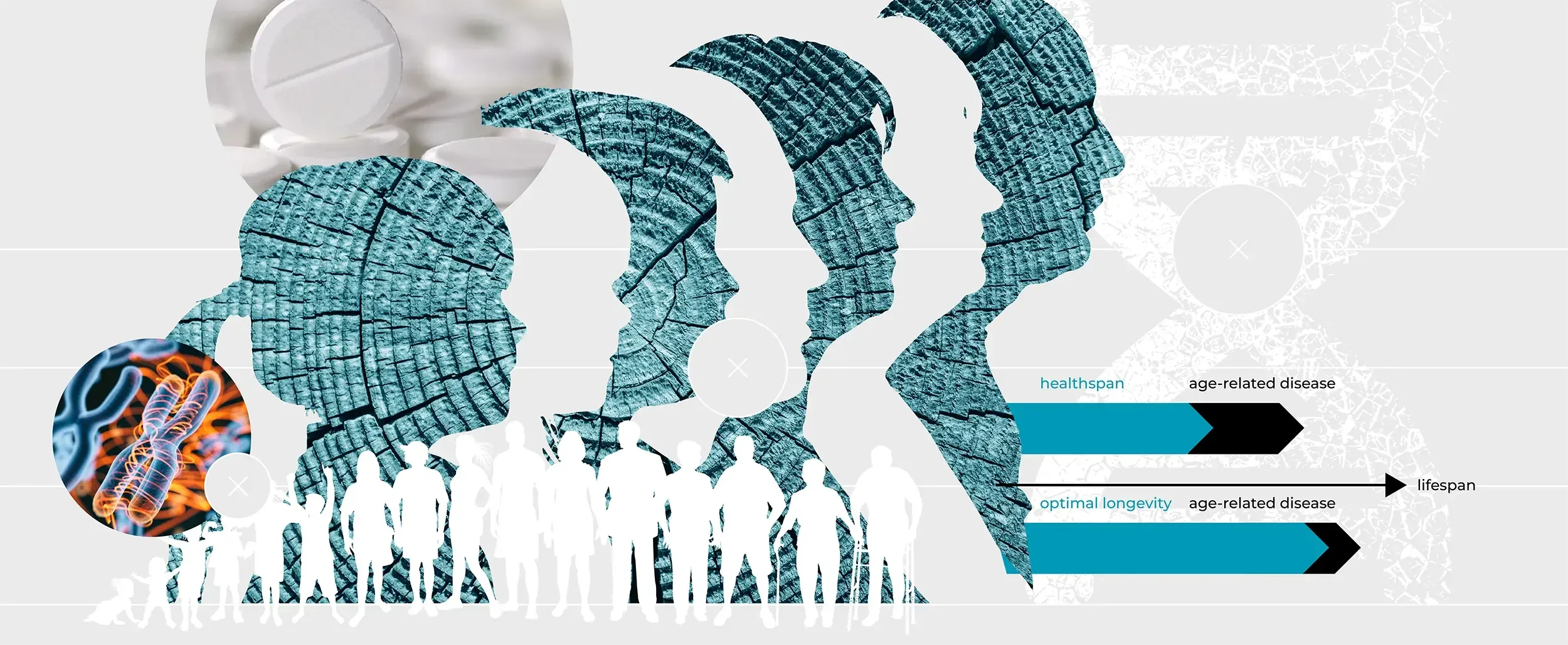 2.3.1Fundamental GeroscienceFundamental geroscience, a groundbreaking new basic public health science, investigates the foundational systems involved in the process of ageing itself... more | 5-year horizonIdentify specific levers in ageingThe field has identified more genes involved in ageing and validated them in an array of animal models beyond mice. More investigations detail the specific role played by gut microbes in ageing. Research begins to elucidate the interplay between the processes of ageing in the larger system. The knowledge gained is used to develop multiscale AI network models that incorporate the relevant physiological changes and create reliable biomarkers of biological age for evaluating the effectiveness of anti-aging interventions. | 10-year horizonAgeing is understood as a disease processThe idea that ageing is a disease gains traction. An increase in data combined with machine learning algorithms help to identify many the genes involved in healthy or less healthy ageing and how they work together. | 25-year horizonA better understanding of why we ageScience arrives at a scientifically grounded explanation of ageing. Personalised ageing regimens allow adjustment of ageotype, while a major medical shift occurs, moving from treating the symptoms of ageing to treating its cause. |
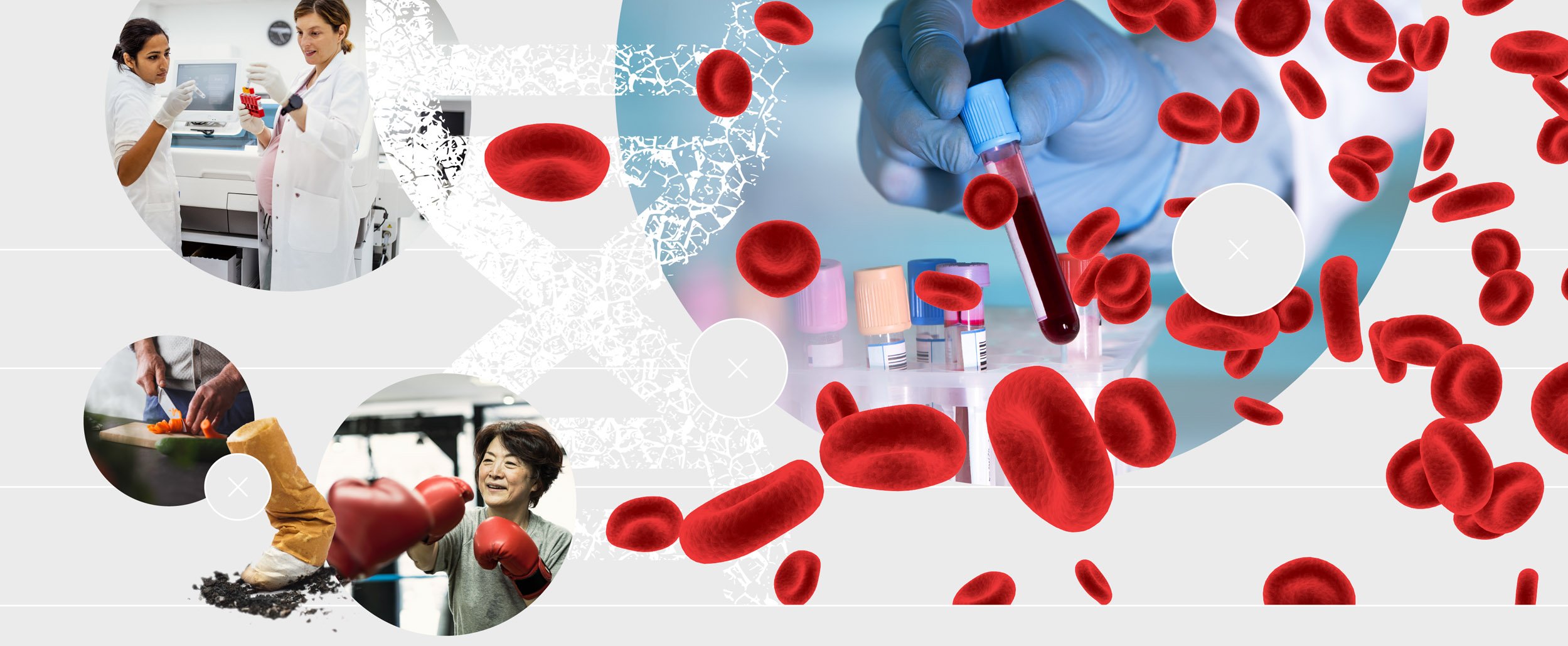 2.3.2Diagnostics, hallmarks and biomarkersOne essential requirement for extending healthspan will be a set of tools for quantifying both age and the impact of... more | 5-year horizonValidation and standardisation of biomarkers takes offMeasurements of omics reveal what other drugs including SGL2 inhibitors and senolytics are doing to omics. Clinical trials validate measures of premature ageing, while multiple companies’ methods converge on standardised, validated diagnostics of real age, such as the presence of molecules in blood that correlate with impaired functions.16 It becomes possible to identify unhealthy ageing with greater precision. Biological ages of individual organs begin to predict disease risk in those areas.17 | 10-year horizonAge clocks are validatedMulti-omics biomarkers emerge. Some specific age clocks that predict morbidity and mortality and are responsive to interventions are validated and brought into alignment. AI mines proteomic and functional molecules to establish patterns. Personalised health assessments integrate information on various organs’ ageing processes. Comprehensive evaluations, based on multi-omics biomarkers, identify abnormal ageotypes and suggest gene- or pathway-targeted drugs. Age diagnostics and epidemiology combine to halt specific aspects of the ageing process. | 25-year horizonAge profile and prevention strategies are personalisedInterlinked and fundamental ageing processes are revealed as root-cause contributors to many disorders and diseases. Morbidity is compressed profoundly in a significant amount of people. We understand the relationship between organ specific and systemic ageing. |
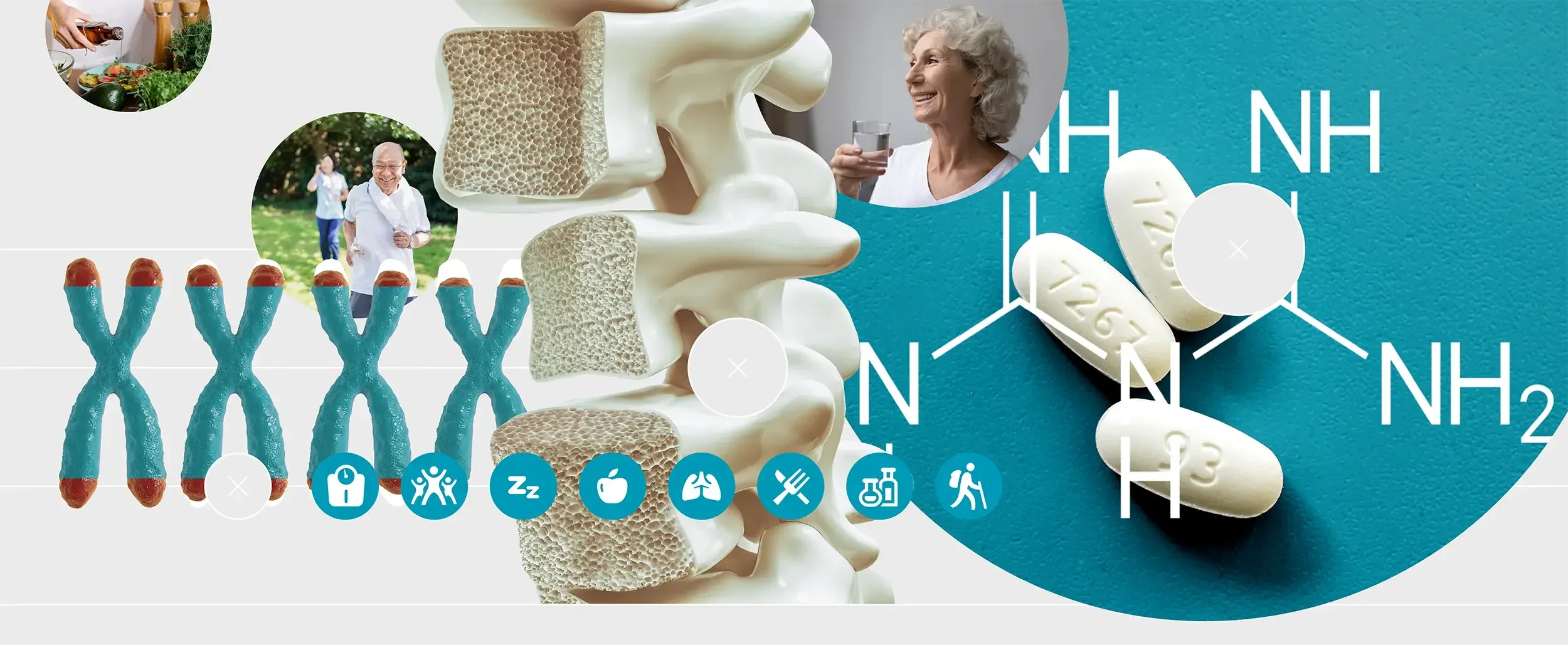 2.3.3Healthspan therapies and interventionsHealthspan extension can already be achieved through several approaches, including specific diets, calorie restriction and exercise,1819 but drugs are being... more | 5-year horizonAnti-ageing drugs and regimens begin clinical trialsTests begin to validate anti-ageing drugs and regimens and clinical trials to delay age progression proliferate. AI, baked into a proliferation of wearable devices, apps and trackers, allows people to personalise exercise and diet interventions to maximise their healthspan. Results emerge from first trials of cell and gene therapy to slow ageing in dogs. Rapamycin and metformin trials, along with canine and non-human primate work, yield results that begin to reveal the cellular mechanisms they act on, and elucidate the viability of mTOR inhibition as a single therapy that can knock down the dominoes of age-related conditions. | 10-year horizonClinical trials clarify promising drugsHealth plans begin to prescribe validated age-delaying therapies. Promising genetic and pharmacological interventions in animals, and longevity adaptation identified in long-lived animals including naked mole rats, bowhead whales and bats, are tested in humans via gene therapy or pharmacological intervention. The first gut microbiome interventions are tested in humans to slow onset of age. Trials begin to combine two or more drugs like metformin and rapamycin. All findings feed back into fundamental geroscience, adding new insights. | 25-year horizonEarly preventative interventions see successThe traditional medical model of “one disease, one treatment” is disrupted by drugs that have multi-modal effects. Rather than picking up age-related problems like cancer and dementia in their late stages, preventive interventions stop people getting ill in the first place. Prescriptions for drugs that have been validated in trials are dispensed for some people at particular risk of abnormal ageing early in life, say in their 20s, preventing the ageing process rather than trying to reverse it later. |
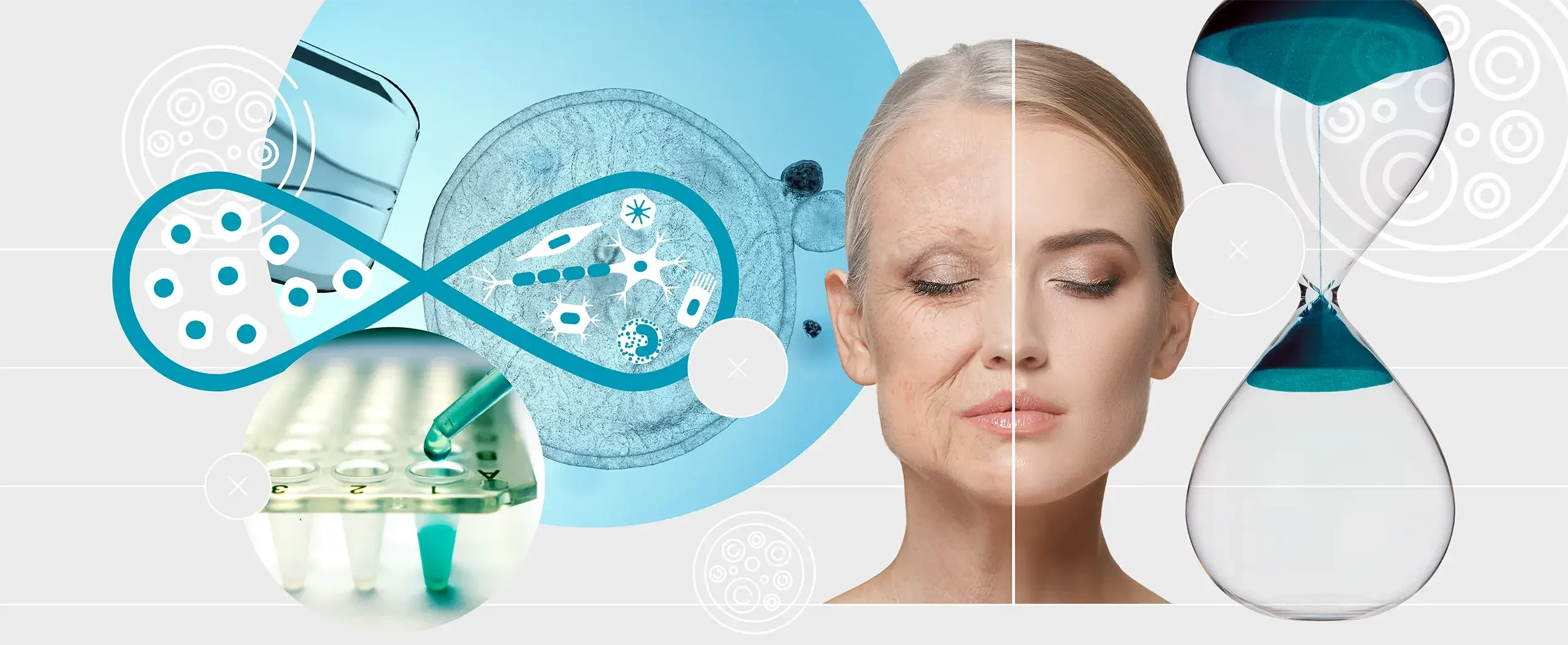 2.3.4Lifespan extension and rejuvenationRecent evidence suggests that the fundamental upper limit for human age is around 120,27 but the question of what determines... more | 5-year horizonSome drivers of ageing are identifiedPeople will create a longevity state.38 Scientists investigate why different species age differently and identify the pathways involved. The degree of conservation between ageing hallmarks among different species is established. | 10-year horizonCell and gene therapy used to slow ageingImprovements in the tools and techniques of cell and gene therapy reduce the cost and widen the availability of treatments that slow ageing. Interventions target the system responsible for the differential pathways in ageing. Interventions that improve genome maintenance and DNA repair become accepted. Investigations commence on whether mesenchymal stem cell administration affects biological age. | 25-year horizonGene transfer slows ageing in humansLongevity genes transplanted from different species into humans, in unlicensed clinics, may begin to yield limited data that can speak to the validity of the approach. Slowing the rate of ageing yields new information on whether that has significant impact on lifespan. Stem cell delivery methods mature, allowing the targeting and rejuvenation of a range of tissue types. Organ derivation and replacement becomes a possibility. Results from cellular rejuvenation trials determines whether this method plausibly rewinds ageing in humans. |
| 2.4Consciousness Augmentation | |||
|---|---|---|---|
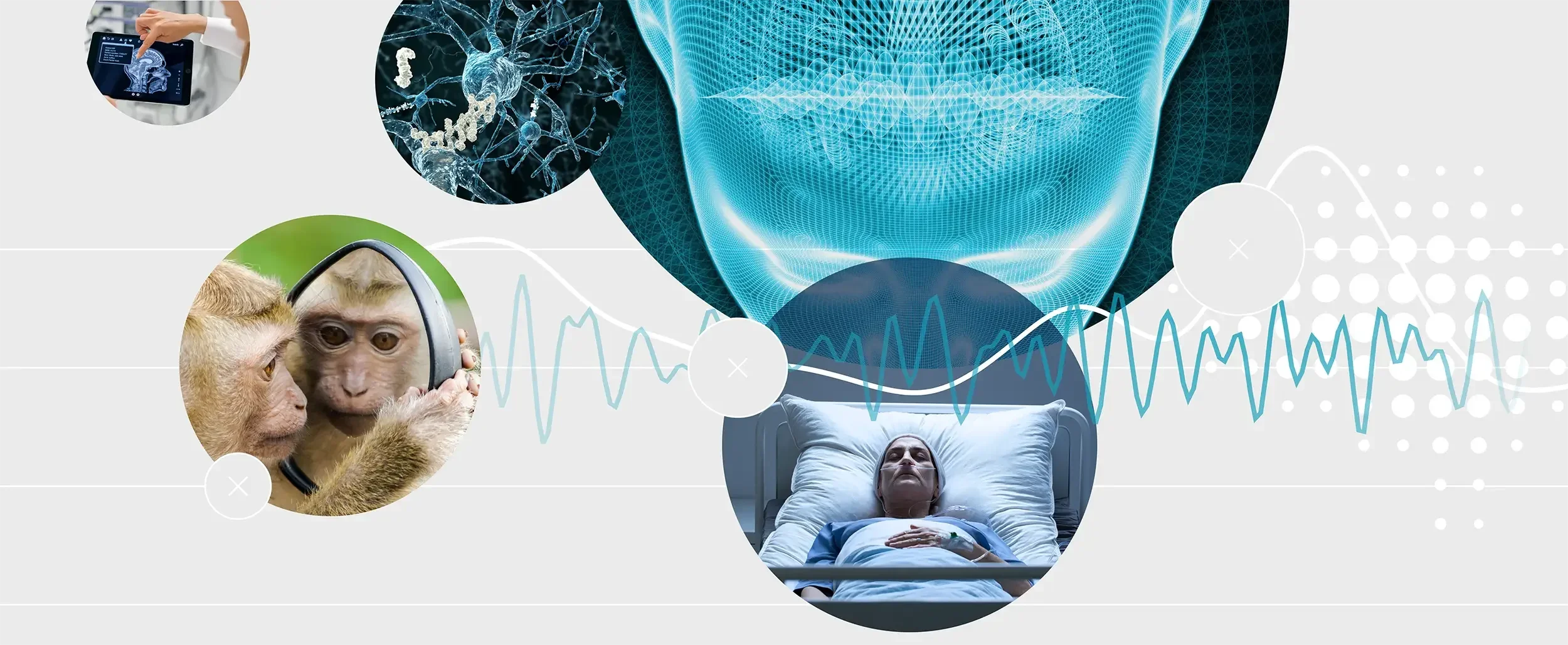 2.4.1Consciousness assessmentThere is increasing recognition that a significant amount of brain processing is done under the level of consciousness. This has... more | 5-year horizonWe become more adept at diagnosing consciousnessBrain state diagnostics improve, and machine learning overcomes individual patient variability to assist in prognosis and guide rehabilitation. The neural circuit implicated in the mirror test — a key aspect of how we define consciousness — is found in macaques. Specific tests reliably detect early onset of diseases that disrupt consciousness. | 10-year horizonConsciousness assessment follows internationally-agreed guidelinesAn agreed set of international guidelines (effectively a standard scale) standardises assessment of consciousness. Network-based models of arousal and awareness, the two measurable components of consciousness, lead to development of a unifying conceptual framework for therapeutic mechanisms of action — validated electrophysiologic and imaging tools that map brain network connectivity. Improved imaging, combined with AI pattern recognition, leads to more reliable prediction of which patients are aware, which will respond to stimulation, and which will require implants to communicate from their vegetative state. | 25-year horizonConsciousness can be evaluatedScientifically validated assessment of presence and quality of consciousness in humans, animals and machines begins. An agreed theory of consciousness takes shape. Brain-machine interfaces open up seamless communications with apparently unconscious people, even restoring natural consciousness in some cases. |
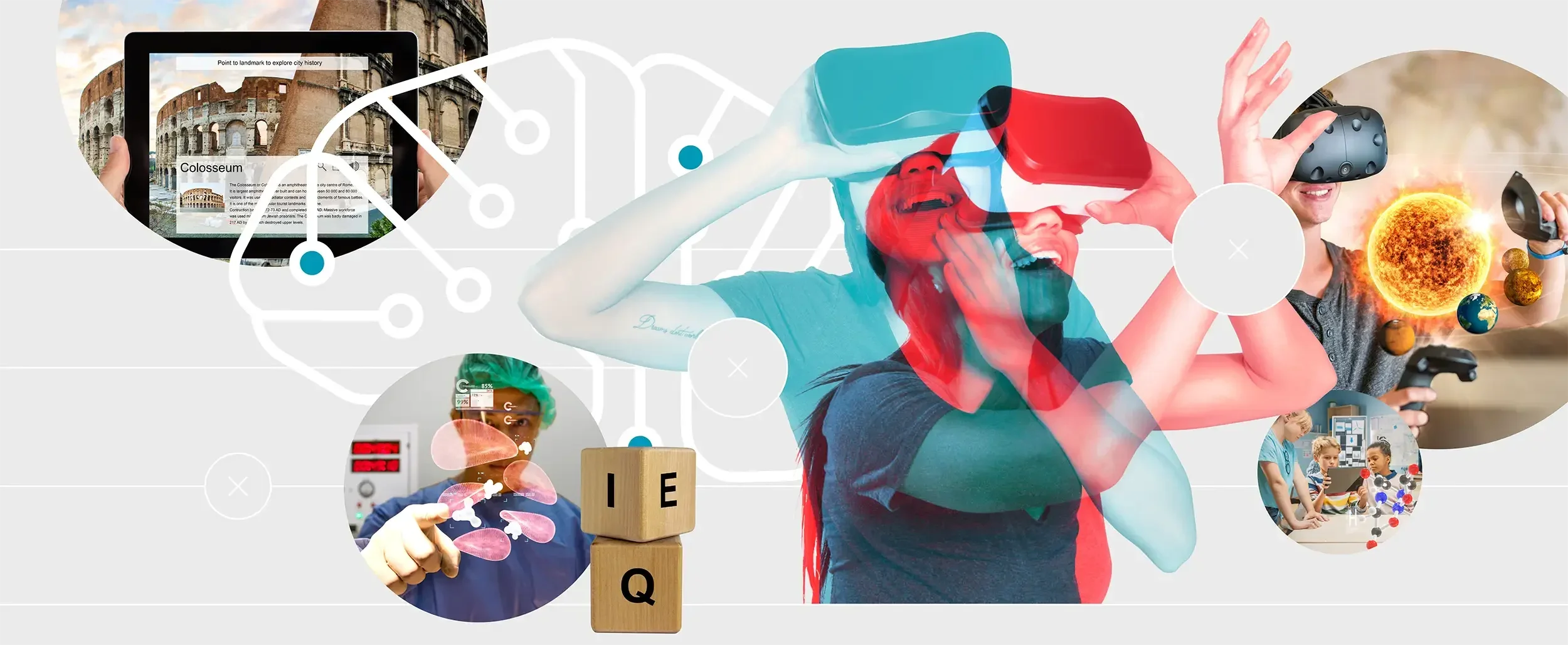 2.4.2Cognitive capacity enhancementThe 20th century saw a measurable and significant increase in the average human intellect.10 While systemic efforts like education played... more | 5-year horizonLearning environments are enrichedImmersive systems have vastly greater capabilities than just sound, vision and limited haptics, creating enriched virtual environments for learning with greater empathy and salience. We share our cognitive load with systems that enhance general consciousness, attention and recall. AI prompts us to behave and think more rationally. Trials on different kinds of VR discern the difference between cognitive and emotional empathy, and work better at eliciting the latter. | 10-year horizonThe re-engineering of education beginsNeuromodulation technologies enhance cognitive functions like learning, memory, attention and decision making. A newer understanding of how the brain learns helps people learn differently, faster, and more effectively. Educational achievement rises in a wide range of societies. | 25-year horizonHybrid consciousness enhances cognitionNeuro-inspired AI systems that help design curricula are imbued with algorithms that operate on an improved understanding of how humans learn, creating a virtuous loop. High fidelity computer models of the brain provide insights into decision-making and its specific neural correlates. From AI that is able to generate internal models of the world, it becomes possible to understand how human consciousness generates its own models. |
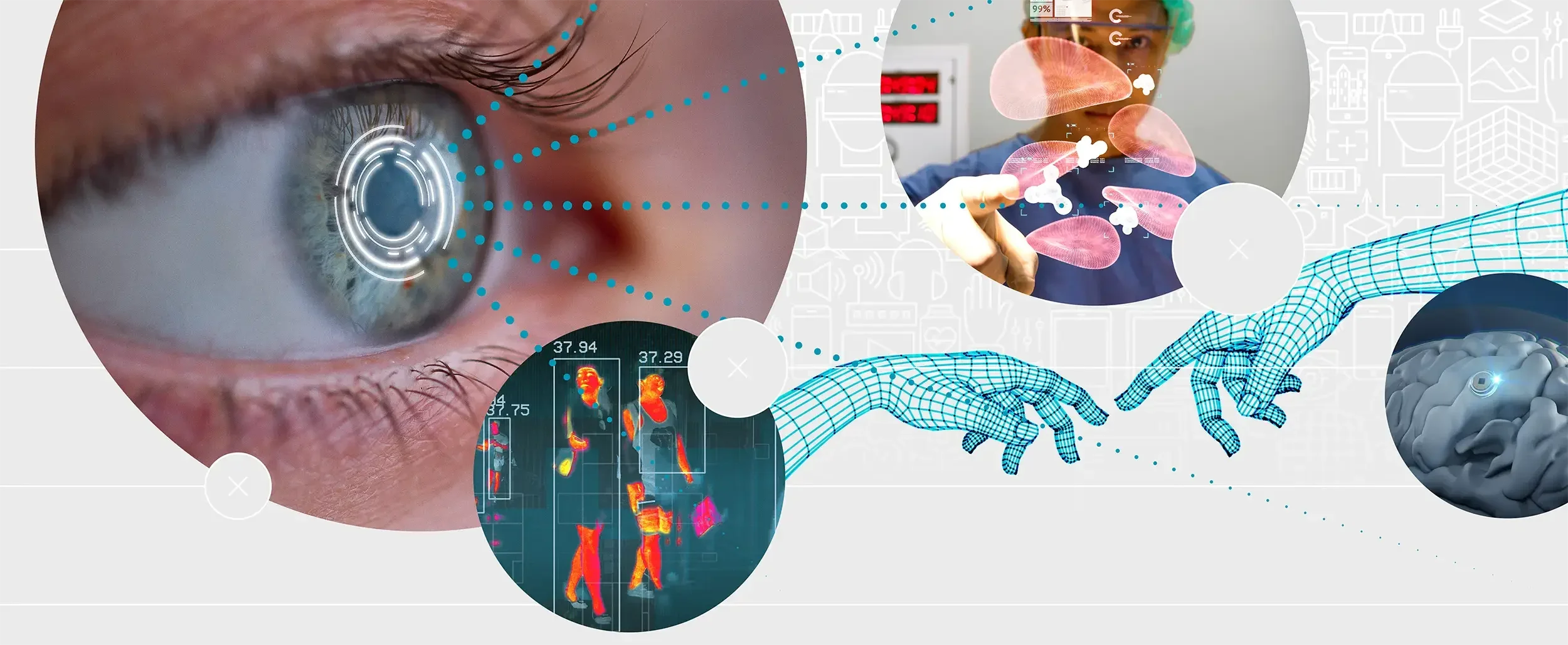 2.4.3Consciousness-augmenting interventionsWe can alter consciousness by several methods: pharmacological, electromagnetic and regenerative. Nootropic drugs are proliferating, albeit without adequate tracking.16 There... more | 5-year horizonEmbodied machines go mainstreamImmersive virtual reality systems have vastly greater capabilities than today’s confinement to sound, vision and limited haptics. There is greater adoption of robotic embodiment in factories and for special purpose applications. A new online database of nootropic drugs seeks to track them and make clinicians aware of their effects and proliferation. BCIs move beyond siloed research labs toward new and more diverse use cases. Small trials of people with specific disorders of consciousness receive brain stimulation to enhance their conscious state. | 10-year horizonThe first human-machine interfaces begin to see roll-outThe wider availability of more general-purpose daily use robotic devices means that some models begin to explore the advantages of invasive interfaces. Medium scale trials commence on non-invasive neurostimulation like tDCS or focused ultrasound to alter people’s conscious state. Improved understanding of how neural circuits within distributed brain networks process information underpins better strategies for targeted electromagnetic intervention (including optimal stimulation targets). Clinical trials start on consciousness-restoration therapies tailored to individual genomic, proteomic, and metabolomic profiles. | 25-year horizonNeural interface for consciousness sharingThe market grows for implantable BMI that is useful in everyday life. Brain implants coupled to AI systems accelerate the development of new human-machine shared consciousness useful in therapeutic settings (e.g. for neuroprosthetics) but also for those wanting to augment evolved human abilities. |
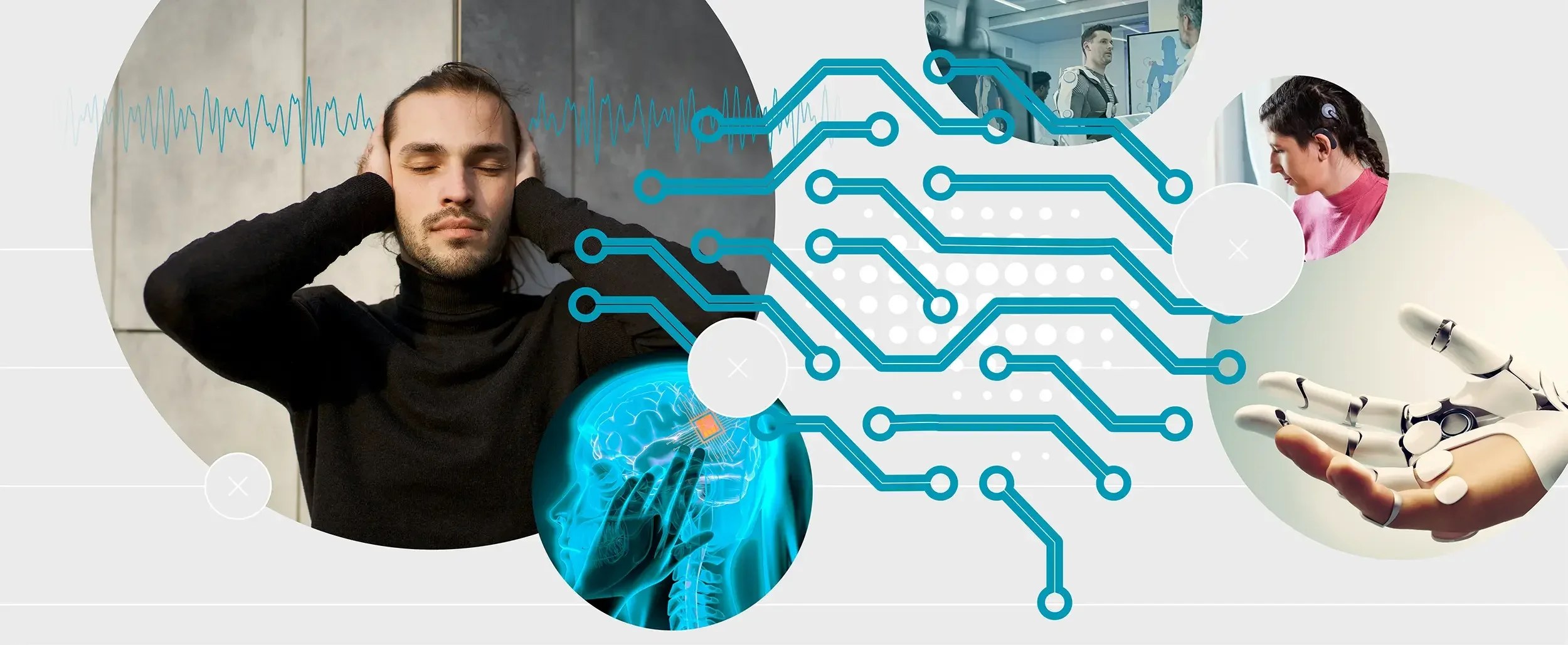 2.4.4Beyond-human consciousnessWork is underway to determine the extent to which machines and animals can have or develop consciousness,2223 and to understand... more | 5-year horizonHumans begin to adopt augmentationsMouse models elucidate the neural model of drug efficacy, pointing to the design of more precisely-targeted therapeutic interventions. Virtual reality (VR) and augmented reality (AR) offer visual overlays representing other people’s heart rate and blood pressure, letting us “see” their inner emotional state. Brain interfaces allow for technologically mediated direct communication between two brains without involving the peripheral nervous system bringing us a step closer to a “social network of brains.” | 10-year horizonEngineered body enhancements become commercially availableTargeted gene therapy allows augmentation of sensory scope, such as “seeing” in the infrared part of the spectrum, and a few body-hacking enthusiasts choose to augment their natural senses with new engineered senses. VR allows us to visit the future and the past by making immersive, realistic “dress rehearsals” for future events, and by putting us into our own memories. | 25-year horizonThe era of meta-humans arrivesFor a sector of society, permanent connections with machines create blurred boundaries between different selves and between natural and artificial realities. It becomes possible to better incorporate the perspectives of other people and other species within our experiences. |
| 2.5Organoids | |||
|---|---|---|---|
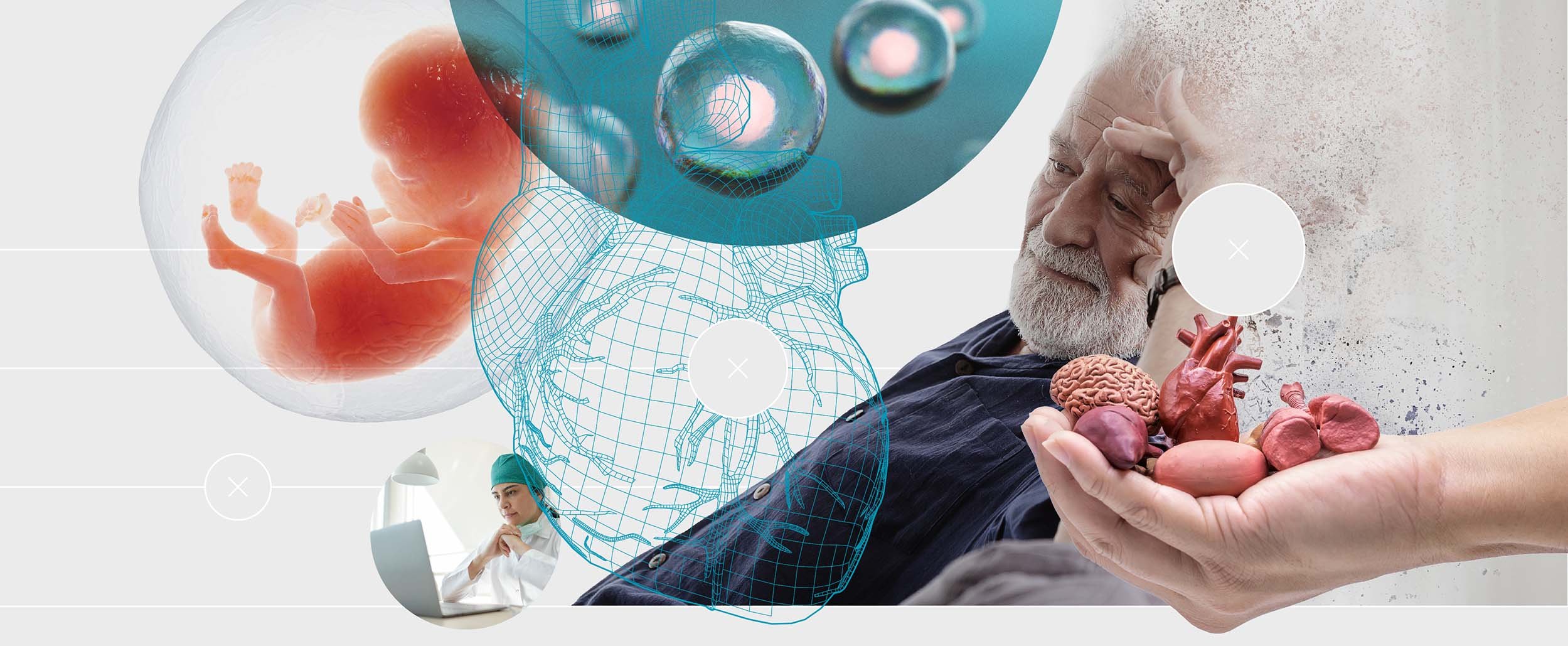 2.5.1Foundational researchThe combination of genetic engineering and human organoids has created new opportunities for studies of human genetics. It has already... more | 5-year horizonModels and answers become increasingly complexMerging organoid and organ-on-chip technologies — the latter being a microfluidic chip that mimics the physiological behaviour of an organ^19 — allows the study of inter-organ interactions. Large database(s) are developed covering many types of organoids and available data on proteomics. This leads to increased understanding of how perturbations resulting from medicines or genes affect physiology. | 10-year horizonPredictive models have proven efficacySeveral countries will have organoid banks the way cell and tissue banks exist today, used by academia and industry to understand diseases and their variability across different individuals. We increasingly understand the developmental processes involved with morphogenesis for complex structures. An understanding of the biochemical pathways of ageing allow us to rapidly age a brain organoid to study Alzheimer's disease. Animal and human embryoids are grown in a dish: humans for the first few weeks of development, animal models until organogenesis and further. Finally, the combination of paleogenomics, genome editing and organoid technology leads to novel insights on human evolution. | 25-year horizonWhole human on a chip appearsGiven the ability to link several organoids and systems together, we find molecules that enhance reproductive health, prevent pregnancy loss, and enhance foetal health. Better understanding of human development leads to new insights into how to augment foetal health and prevent diseases. |
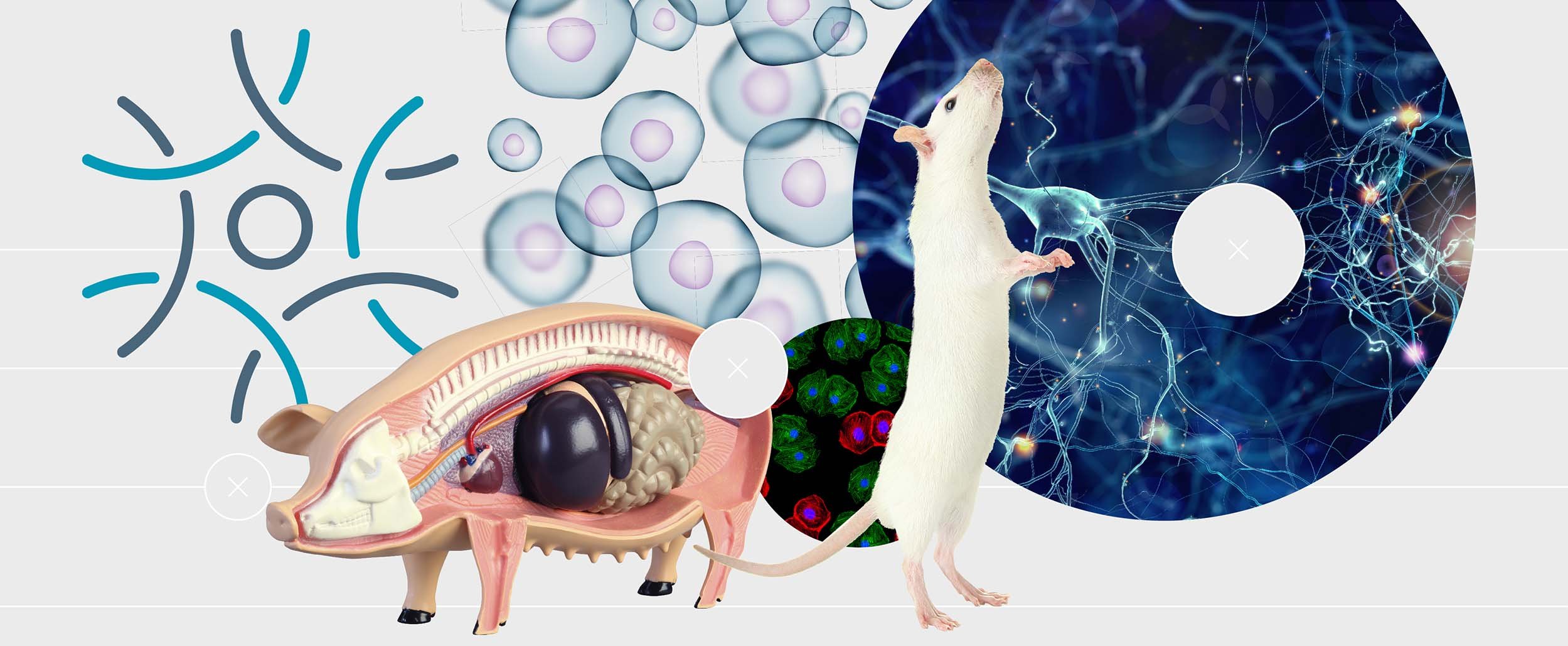 2.5.2Hybrid organoidsResearchers are pairing human organoids both with other species and with robotics. “Interspecies chimeric organoids”, for example, are being investigated... more | 5-year horizonBorrowed cellular qualities emergeResearchers grow tissues that regenerate themselves, thanks to capacity harnessed from other species or re-activated in our own development pathways. | 10-year horizonAugmented abilities ariseBrainoid-machine interfaces: hybrid systems are developed, in which part of the computational power comes from biologically grown neurons and the other part comes from traditional silicon. | 25-year horizonThe era of hybrid intelligence arrivesResearchers find a pathway to augmenting human cognition with, for example, the more capable short-term memory of a chimpanzee. Hybrid organic intelligence: research with brain organoids teaches us how the brain learns, allowing us to boost AI and traditional education with these insights. Brain organoid integration with AI may give robots intuition and the capacity to “notice” things. |
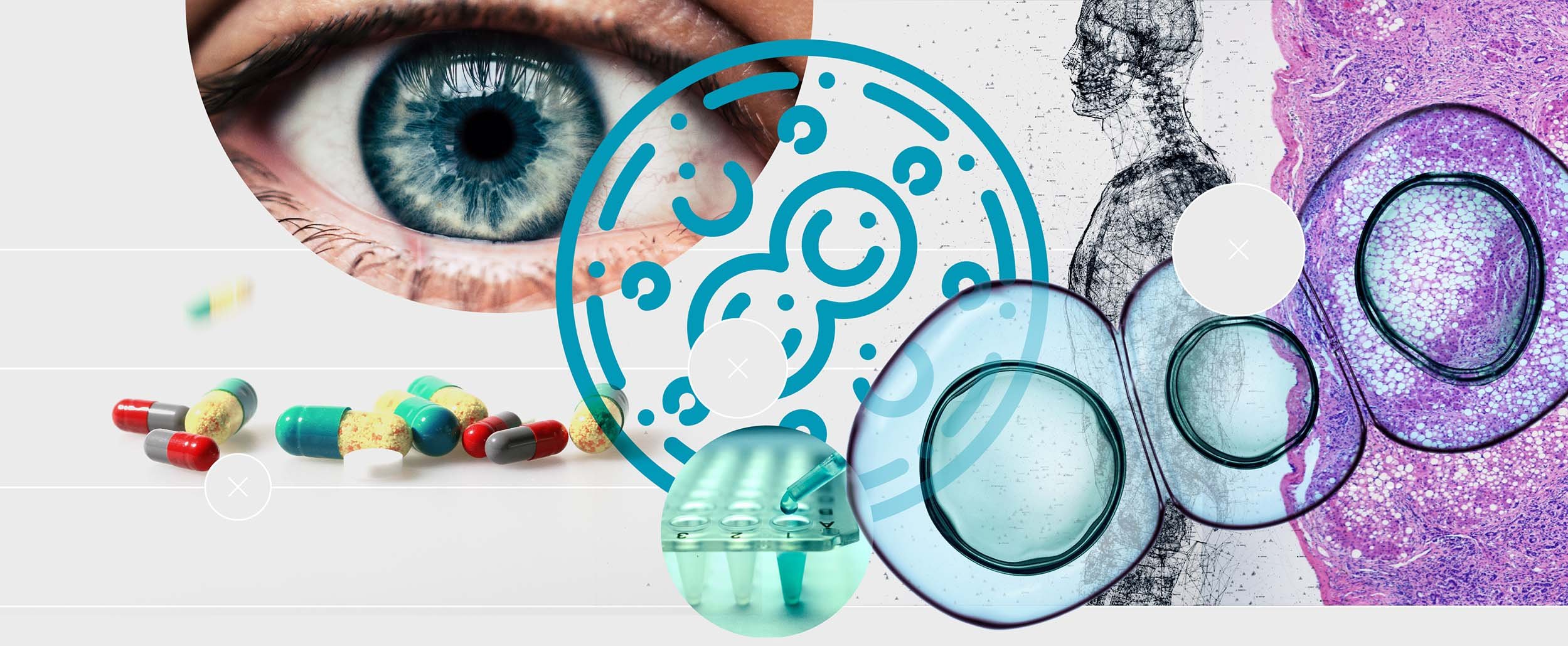 2.5.3Translation and personalised organoidsOrganoids will form an increasingly crucial element of personalised medicine. Drug screening for personalised medicine is already a major application... more | 5-year horizonOrganoids come to the clinicA simple organoid transplant – for example, of a retina — takes place. Other relatively thin and simple tissues move closer to the clinic. Rapid expansion and wider adoption of organoid technology for drug screening yields better understanding of human variation to drug responses, and generates predictions about how cells of the human body will respond to drugs. Drug discovery consequently gets cheaper. | 10-year horizonAI predicts drug responsesAI-assisted predictions can be made about individual response to some drugs. Tumoroids are grown from patients to develop treatments on a very fast, highly efficient turnaround. Organoid-derived cells are used for stem cell therapies in humans. | 25-year horizonHigh resolution personalised medicine beginsConnecting the different organoids that scientists are currently developing in isolation results in miniature models of entire sections of human physiology for personalised medicine. 3D bio-fabrication of organs, including self-assembly, produces complex organs like kidneys for transplantation. |
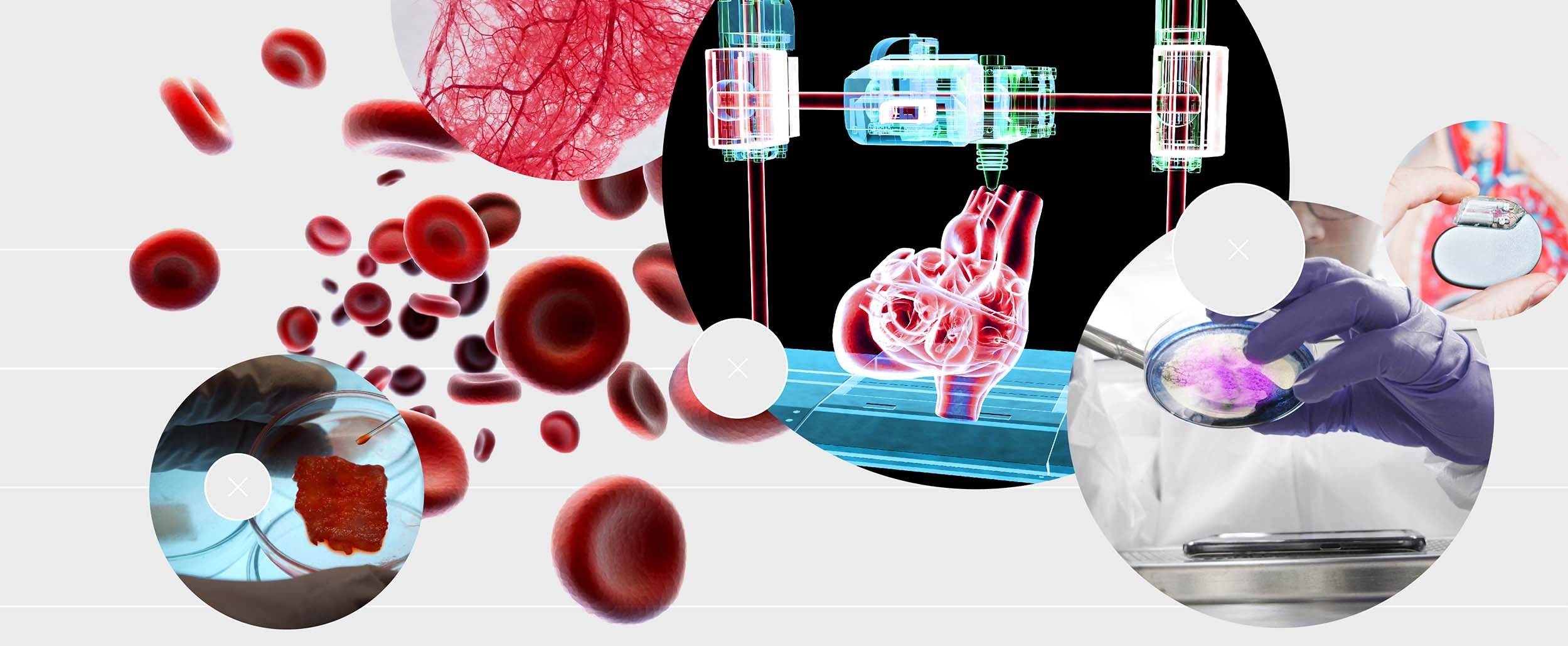 2.5.4Enabling technologiesDemand for organoids has soared. There is a boom in development tools and several companies have emerged as “app stores”... more | 5-year horizonCollaborations ensueMicrofluidic approaches and lessons learnt from organs-on-a-chip begin to converge on standard protocols. Consortia lead to interdisciplinary integration. Novel tissue culture supplies with a stronger physiological basis become more widely deployed. AI improves protocols. | 10-year horizonOrganoid production is scaledThe transition from cell culture to bioreactors allows scalability of complex organoids. Vascularisation begins to become more successful. “Microphysical systems" of cells and bioreactors become standardised and ubiquitous. Solutions are found for storing, managing and sharing the massive volumes of data generated by organoid analysis, from gene expression to electrophysiology. | 25-year horizonAutomation brings industrialisationOrgans can be created automatically and at scale. The food industry will make meat without animals, using lessons learned from large scale bio-manufacturing, at scales large enough to be useful for food production. As a consequence, food (for humans and other species) will become more nutritious, cheaper and can be personalised. |
| 2.6Future Therapeutics | |||
|---|---|---|---|
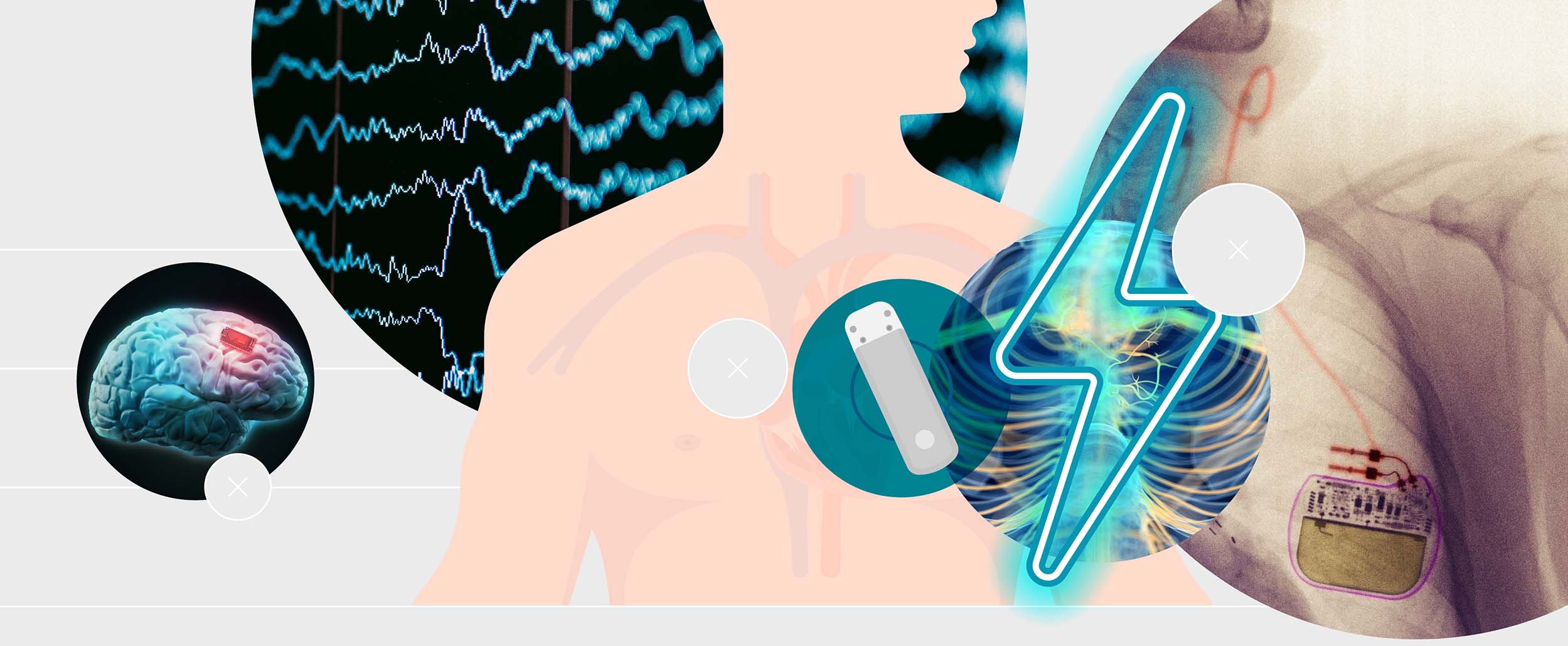 2.6.1Electrical therapiesThe nervous system runs on electrical signals, and these can be manipulated to help with mental health problems, movement disorders,... more | 5-year horizonClosed loop systems and better implantsClosed loop designs help deep brain stimulation devices to give more precise control over brain circuits involved in depression and OCD. The evolution of implant materials continues, with new biocompatible materials entering (and completing) clinical trials for chronic nervous system implantation. Vagus nerve stimulation devices are FDA approved for medical uses, while non-invasive VNS apps, targeted at non-medical needs, are commercialised on the supplement market. | 10-year horizonImplants become ubiquitousNew designs of brain implants which should do less damage when being implanted, such as neurograins and neuropixels, move through more clinical trials. The devices lead to improved understanding of neural pathways. Stentrodes (implantable electrodes) become commercially available. | 25-year horizonThe line between implants and biology is erasedElectrical stimulation is sufficiently parametrised that it is used to provide scarless healing and electrical control of regeneration response in the clinic. Better materials allow biomimetics to exist permanently in the nervous system to regulate its functions. Implants transition from central, single electrodes to nano-sensors and nano-stimulators distributed throughout the body. |
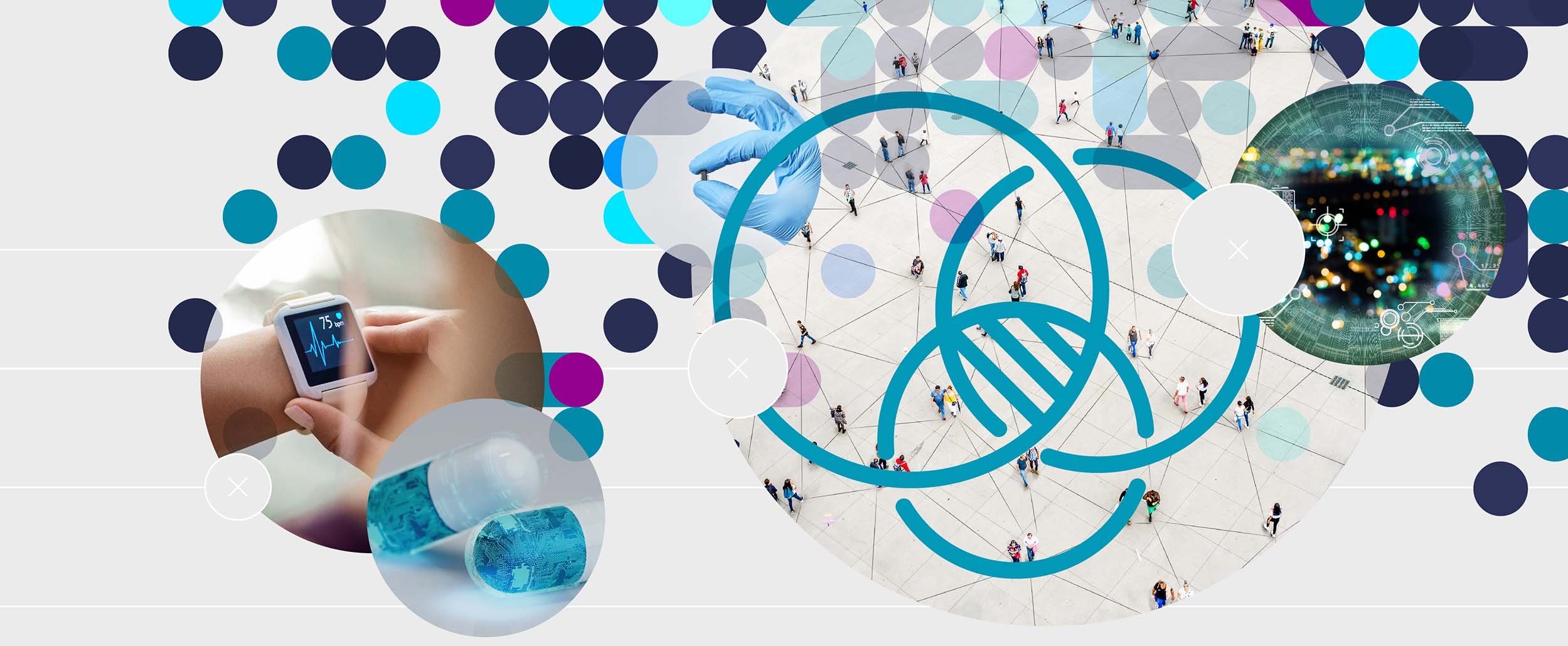 2.6.2Data-led therapiesArtificial intelligence is poised to become a major ally in the fight against disease. Ever-growing volumes of medical data are... more | 5-year horizonDigital therapeutics comes of ageHealth insurance begins to cover more digital therapeutics. Stroke rehabilitation software takes advantage of brain plasticity. VR and AR tools become a mainstay of health apps. Health care AI systems increasingly provide predictive analytics, precision medicine, diagnostic imaging of diseases, and clinical decision support. | 10-year horizonDigiceuticals become mainstreamApp-based digital therapies enjoy further success and ever-wider use. Ingestible or injectable sensors, such as ultrasound systems that are able to detect proteolytic activity (enzymes that are changed by disease), are used alongside the apps. Smart homes tie in with clinics and apps: toilets with integrated sensors, for example, will couple with ingested bioelectronics to transmit basic health data directly to digital apps. The convergence of biomedical data and the ability to analyse, share and reuse it allows AI to comb through multiple databases in order to assist diagnosis, drug discovery and the development of new therapies --- some of which are personalised to take account of likely individual responses to drugs.^20 | 25-year horizonDigital twins assist maintenance of healthData-gathering nanosystems roam the body, detecting and diagnosing multiple disease states ever earlier in the process. Ingested or implanted tools to flag up potentially harmful changes in biology or behaviour are ubiquitous. Digital twins incorporate experimental results. |
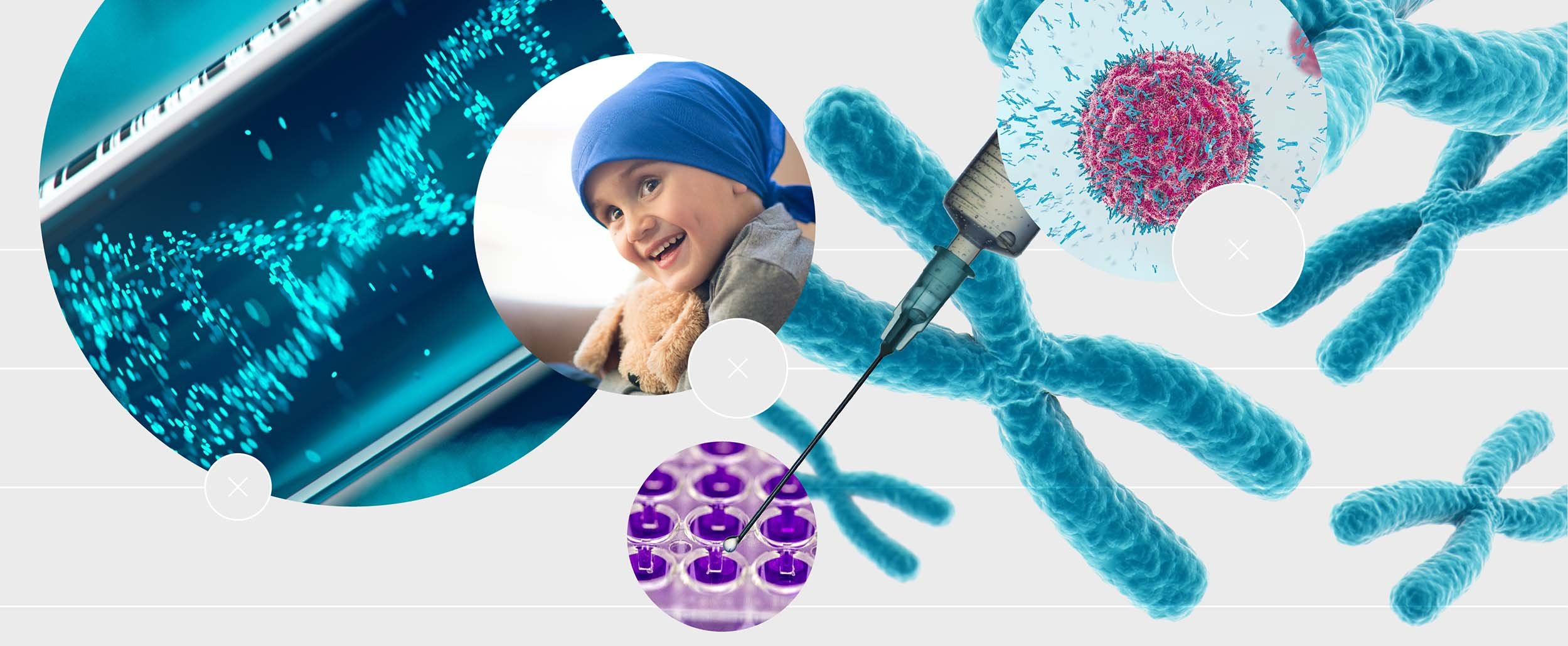 2.6.3Cell, gene, biomimetic and nucleic acid therapiesCell, gene, biomimetic and nucleic acid therapies work with the basic units of the human body to achieve medical results,... more | 5-year horizonNovel therapeutic techniques acquire greater visibilityResearchers develop a better understanding of the wide variety of whole-body responses to drugs, and generate predictions about individual cell responses. Trials of mRNA-based cancer vaccines, currently underway or planned, begin to show consistent results. Researchers develop therapeutic agents that bring about “targeted protein degradation” -- destroying faulty proteins using the cell's own machinery. It becomes possible to generate different cell lines in the field of immunotherapy, and to modify T-cells, and this becomes standard medical practice. Results come in from the first trial of one-shot gene editing treatment for cardiovascular disease. Regenerative medicine approaches such as cell therapies and biomimetic implants are in first clinical trials and begin to appear in clinical use but are not yet standard therapy. | 10-year horizonIncreasing convergence and transparencySmall-molecule therapies, which can be stored and transported more easily than biologics, become generic, making them much cheaper. Smart homes deliver results of automated sampling directly to family physicians, and biocompatible devices replace and/or support biological function. Clinical and research data is drawn from repositories that combine data from a wide cross-section of disciplines; this data, through AI-assisted insight, helps to turn cancer into a chronic disease. Sensors and actuators interrogate cells at the subcellular level, either through direct application or remote sensing. | 25-year horizonHealth care is preventionCell therapy becomes a major topic in immune disorders, regenerative medicine and blood disorders. It becomes possible to restructure the genome to maintain optimal health. Fully living organs are created from autologous cells. Living therapeutics stay in the body permanently, and in vivo sensors comprehensively monitor the entire physiological state of a wound or injury — from gene and protein expression to mechanical properties — to ensure optimal healing. This will work in tandem with regenerative medicine systems that can alter cellular states in injured tissue to make it heal with standard tissue rather than scar tissue. The pivot from reactive to preventive health management is complete. |
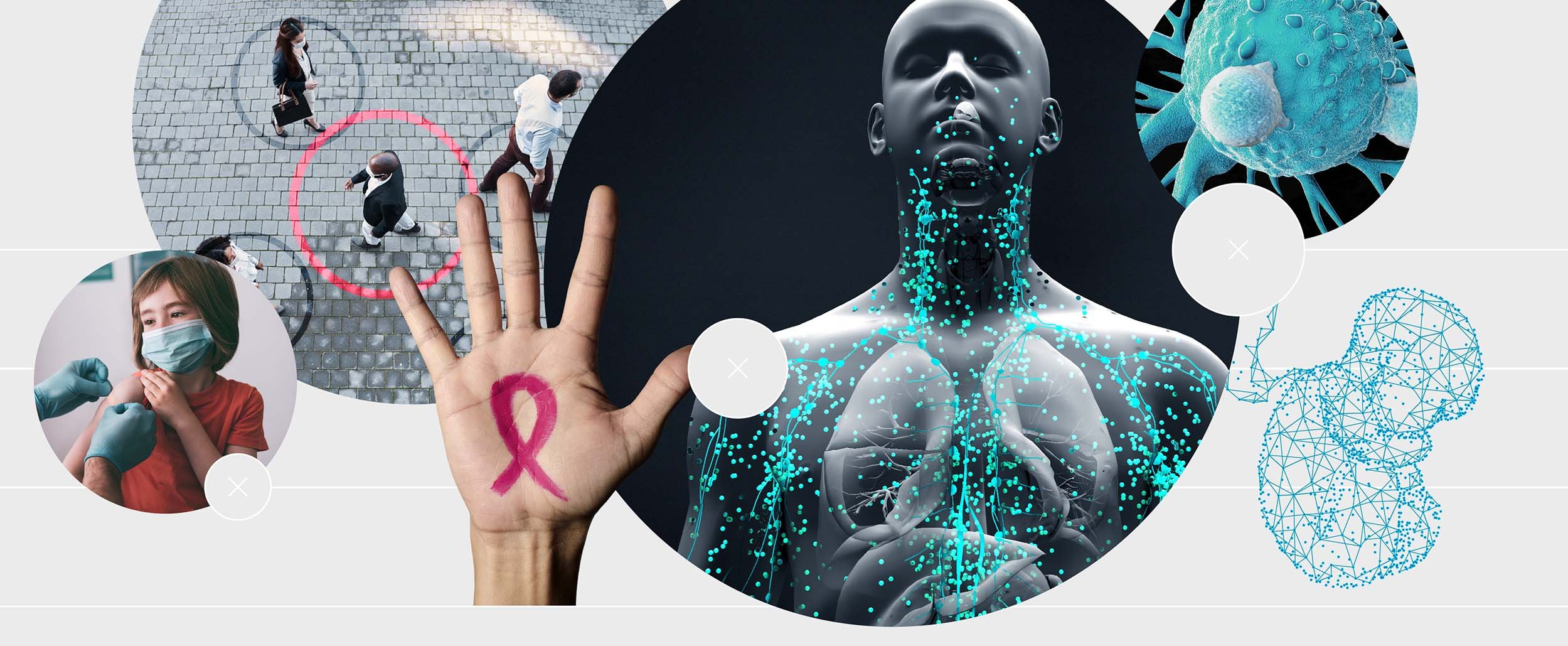 2.6.4Immunome-based therapiesOver the past two decades there has been a dramatic transformation of our understanding of the immune system's relevance to... more | 5-year horizonThe immunome is characterisedEngineers design new biomaterials that can interface with the nervous system without inflammation. New combinations of immune-system modulating drugs enter cancer trials, with greater precision that reduces the problem of drug toxicity. Researchers develop machine learning algorithms to amalgamate data that will help inform initial models of the human immunome. | 10-year horizonManipulating the immune system becomes possibleResearchers begin to unpick the intricacies of how wound healing and regeneration work. Most kinds of cancer become a chronic disease. Preliminary models emerge of the human immune system as the network of genes, proteins and cells that are its components. The first in-silico vaccine and immunotherapy trials take place. AI-assisted longitudinal studies of individual immune systems create new understanding of mechanisms of the immunome. | 25-year horizonThe era of personalised immuno-medicine beginsGranular understanding of the immune system, coupled with the ability to control it, makes it possible to prevent the onset of autoimmune disorders. Deeper understanding of tissue regeneration makes it possible to coax the body to regrow whole organs and limbs. Personalised vaccination programmes or drug delivery tailored on a particular immunome becomes possible, avoiding negative immune responses and enhancing vaccine efficiency. Better understanding of inflammation and immune system activation in pregnancy dramatically reduces the number of babies born prematurely. Immune senescence becomes a treatable condition. |
| 3.1Decarbonisation | |||
|---|---|---|---|
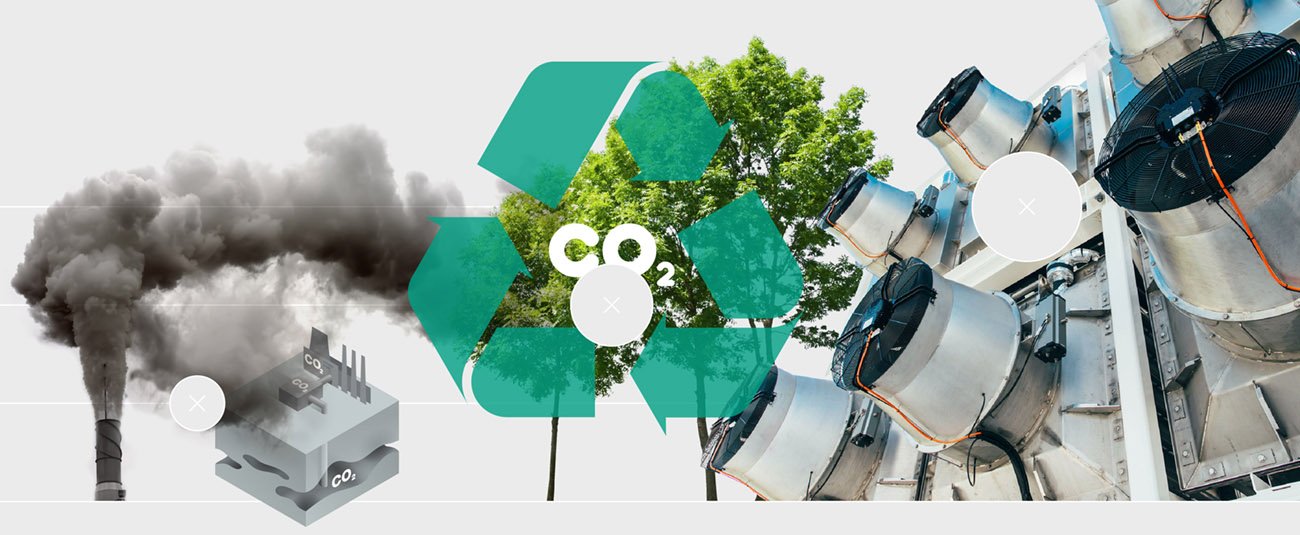 3.1.1Negative emissions technologiesAn important element in the global strategy for decarbonisation is negative emissions technologies (NETs). These are technologies for drawing greenhouse... more | 5-year horizonResearch innovation assists carbon capture and use technologiesInvestment in new direct air capture (DAC) technologies re-invigorates academic research in the field. AI-based chemical innovations begin to find applications for re-purposing captured carbon. | 10-year horizonNETs begin to scaleTesting of ocean liming and iron fertilisation gives indications of whether these projects have potential. Advances in DAC technology, combined with rising carbon pricing, spur further investment in research. The first large scale BECCS (bioenergy with carbon capture and storage) project begins. Construction materials that include captured carbon become commonplace. | 25-year horizonCarbon capture becomes a widely-used technologyDAC is implemented on a large scale. AI helps to find new uses for captured carbon. Long-term storage solutions are agreed and implemented. |
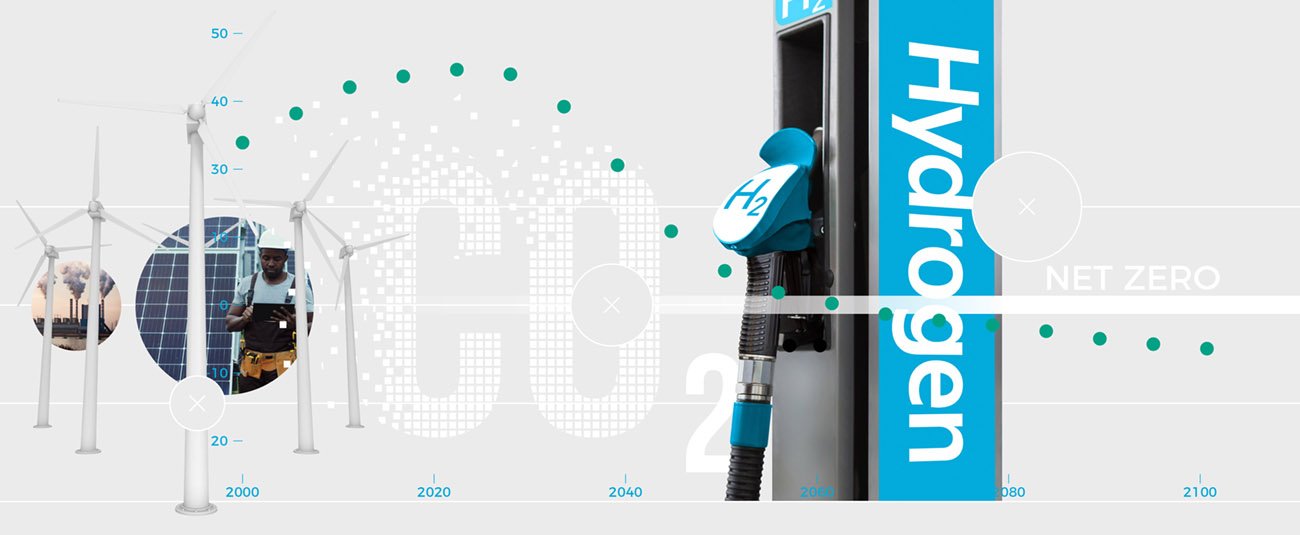 3.1.2Renewable energyAs of 2019, about 11 per cent of our energy came from renewables.12 Renewables make up a larger share of... more | 5-year horizonSolar overtakes coal in electricity productionCost and efficiency improvements mean that solar becomes a larger global source of electricity than coal.20 Improvements in battery technology allow short-term storage of energy from renewables, but intermittency remains a problem. Algorithmic innovations improve control of supply and demand in electricity markets, freeing more renewable energy to create green hydrogen. Small-scale laboratory fusion successes in privately-funded companies stimulate further investment in research. Improved stabilisation enables wind turbines to be built further offshore in deeper waters. | 10-year horizonEnergy storage innovations grow renewable market shareHalf of global electricity comes from renewable sources. Seasonal and long-term energy storage, such as power-to-gas, flow batteries and liquefied hydrogen and air, becomes a commercially viable output of wind and solar energy sources. Shipping begins to decarbonise, using hydrogen and in some cases, experimental sail-based propulsion. Accelerating cost declines, due to factors such as falling steel prices and an increase in offshore wind turbine installations, further decarbonising many countries’ energy production and use.21 | 25-year horizonFusion investments begin to pay offSmall-scale, pilot nuclear fusion plants begin to come online. Electrical grid interconnectors span all of Eurasia. Significant improvements in the energy efficiency of synthetic fuel manufacture enable its use for zero-carbon aviation and shipping. |
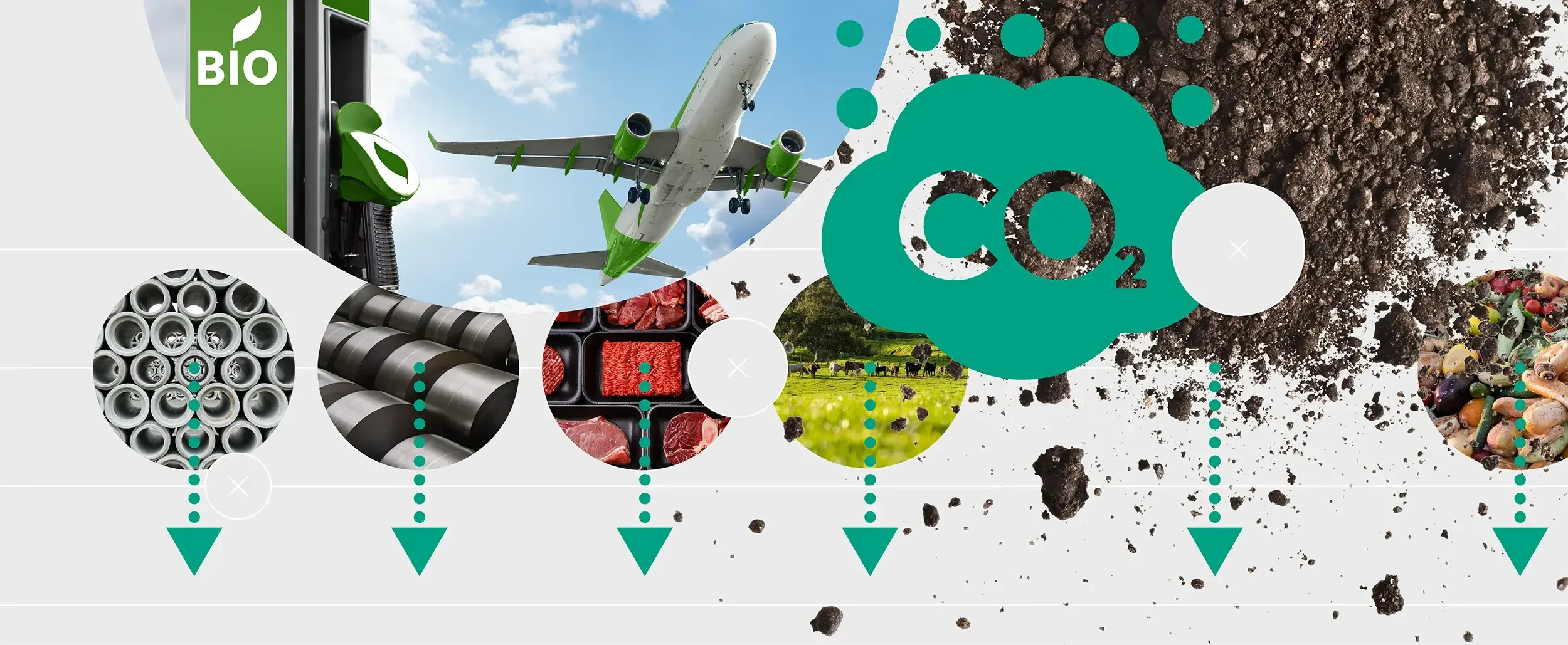 3.1.3Hard-to-abate emissionsSome sectors of the economy are extremely difficult to decarbonise. A significant fraction of our carbon emissions comes from hard-to-abate... more | 5-year horizonInnovation slows the growth of emissionsAn appetite for climate change mitigation in agriculture creates a rapid cycle of innovation that slows the growth of emissions. Government programmes begin to support decarbonisation of heavy industry. | 10-year horizonBioprocessing cuts food waste emissionsInnovations in bioprocessing mean that global emissions from food waste are half those of 2023. Cultivated meat protein becomes widely available, but cannot satisfy the rising global demand for meat. | 25-year horizonIndustrial processes achieve significant carbon emission reductionSteel and cement manufacture are close to carbon neutral, thanks to progress in chemical research that generates cleaner industrial processes. 25 per cent of people adopt vegetarian diets.26 Low- or zero-carbon aviation fuels become available.27 |
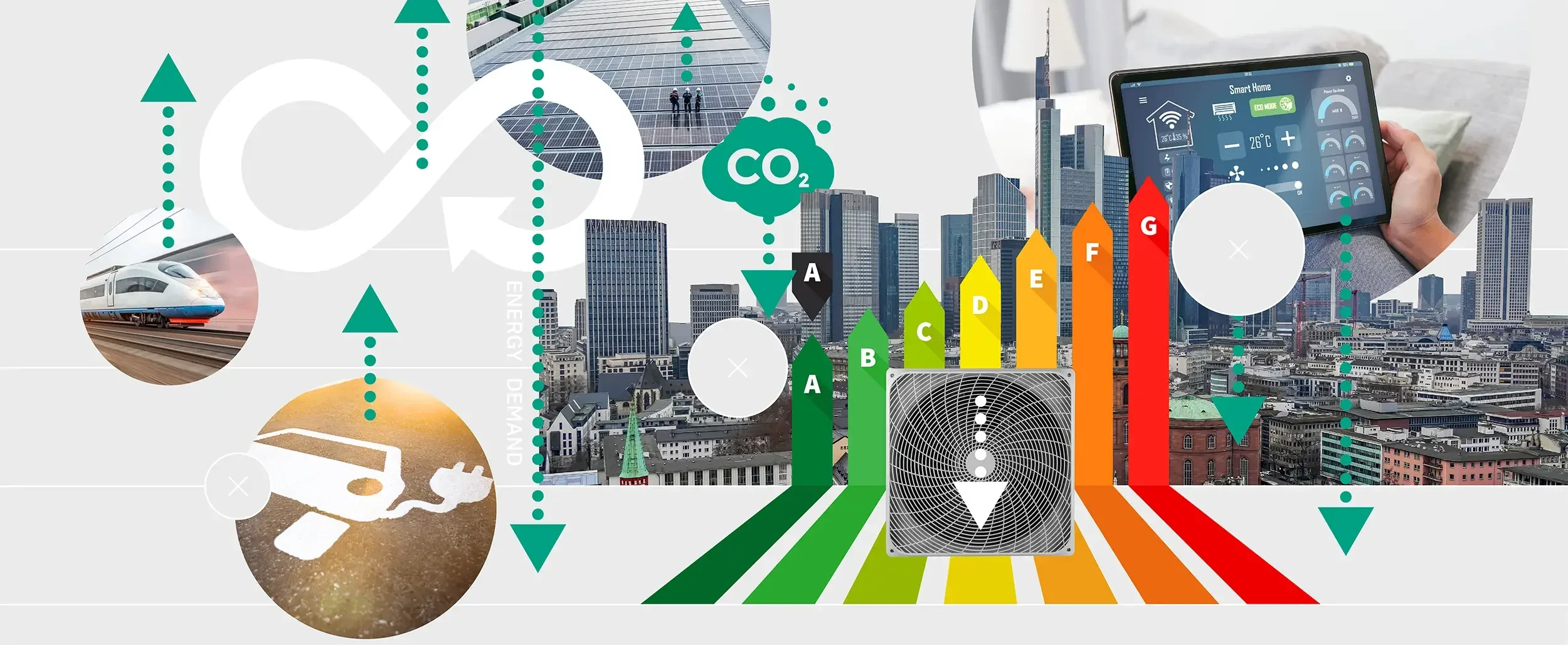 3.1.4Energy DemandReducing demand for energy can have a significant effect on carbon emissions. There is huge scope for demand reduction: for... more | 5-year horizonElectric cars begin to dominate the new car marketElectric cars become cheaper than petrol in most developed countries, and innovations in battery technology make them more practical to use. Developments in grid technology enables stored energy in electric car batteries to be sold into national electricity grids when demand is high. | 10-year horizonBuildings standards assist decarbonisation goalsReforms to building standards and other regulations promote lower energy demand and renewable installation. World steel demand peaks, creating a significant reduction in industrial energy use. | 25-year horizonGlobal energy demand has peakedHeat pump innovations, combined with smart meters and building regulations mean that new buildings in most developed countries use minimal energy and are net suppliers of energy. Massive expansion of high-speed rail reduces demand for cars and aviation. Global energy demand is 8 per cent smaller than today but serving an economy twice the size.32 Electric cars outsell petrol cars globally. New low-temperature industrial processes reduce the energy demand of heavy industries. |
| 3.2Earth Systems Modelling | |||
|---|---|---|---|
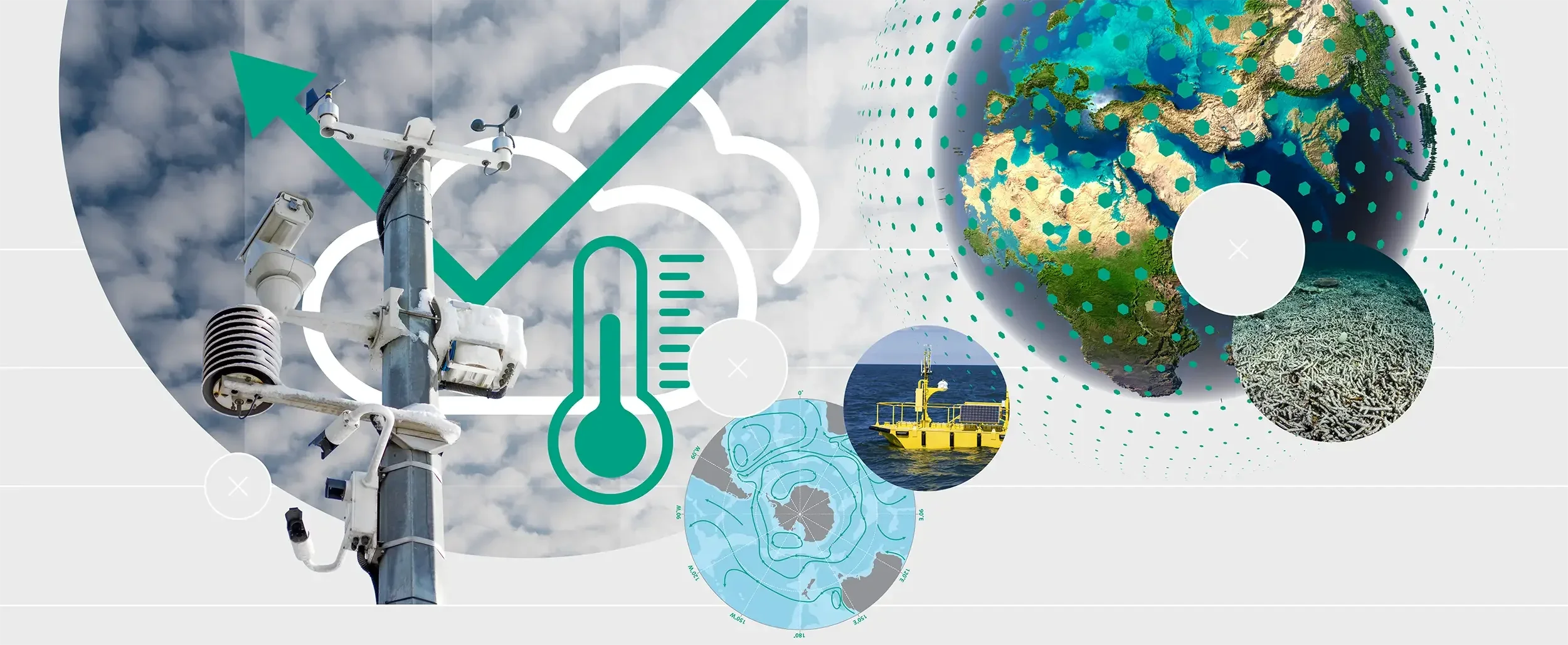 3.2.1Modelling of feedbacks in the Earth systemModelling Earth’s climate with any fidelity requires considering its interacting network of feedback loops. For example, rising temperatures are causing... more | 5-year horizonModels’ uncertainty is reducedImproved climate models, checked against observational data, reduce the range of uncertainty on equilibrium climate sensitivity. We gain a better understanding of impacts of climate change on the* El Niño-Southern Oscillation (ENSO). | 10-year horizonModels include cloud influenceTighter constraints on process-level cloud feedbacks are incorporated into climate models. Researchers gain a better understanding of ENSO predictability. | 25-year horizonHigh resolution modelling and exascale computing improves predictionResearchers achieve more explicit inclusion of complex feedback systems encompassing the biosphere, cryosphere and more highly resolved surface and atmospheric heterogeneity. |
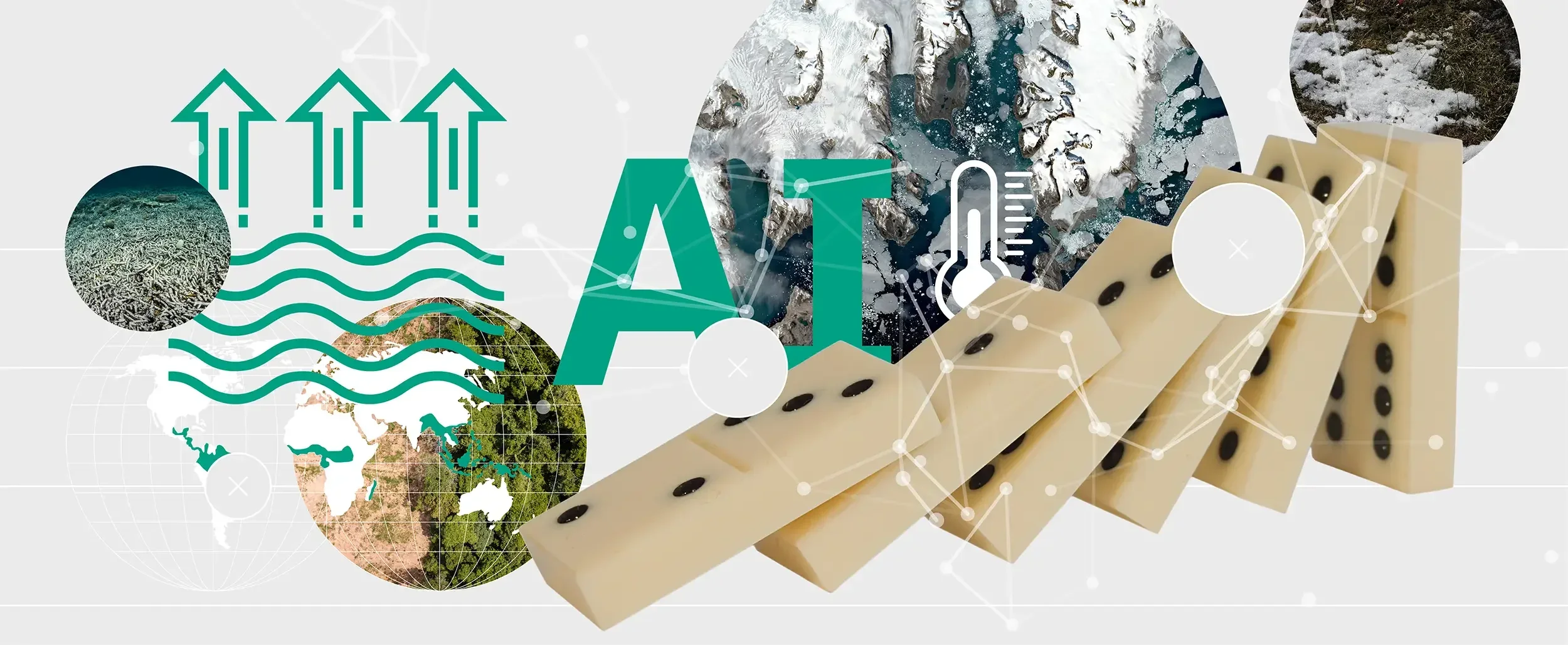 3.2.2Tipping element modelling and forecastingOne of the most important outcomes of Earth Systems modelling in recent years is the demonstration that various “tipping elements”,... more | 5-year horizonPermafrost influence is better understoodResearch in modelling achieves clarification of whether the permafrost is truly a tipping point element or has a linear response. Tipping element theory is refined through better mathematical modelling constrained by observational data, leading to a convergence of viewpoints on their nature and importance. The Atlantic Meridional Overturning Circulation’s history is reconstructed going back several centuries, clarifying whether it is undergoing a slowdown. | 10-year horizonAI assists tipping event analysisScientists using AI-based analysis provide specification of the climatic limits in which the Amazon basin can retain a rainforest. Modelling identifies the West Antarctic Ice Sheet tipping point to a useful degree of precision, allowing it to be explicitly included in climate targets. Physiology studies reveal temperature-humidity limits for key domestic species like crops. | 25-year horizonModel-based monitoring of tipping event warningsEarth Systems models are reliable enough, and sensor networks extensive enough, to use real-world data to check models and to make predictions about imminent ecosystem tipping events. Scientists achieve detailed global analyses and forecasts of species movements and ecosystem shifts. |
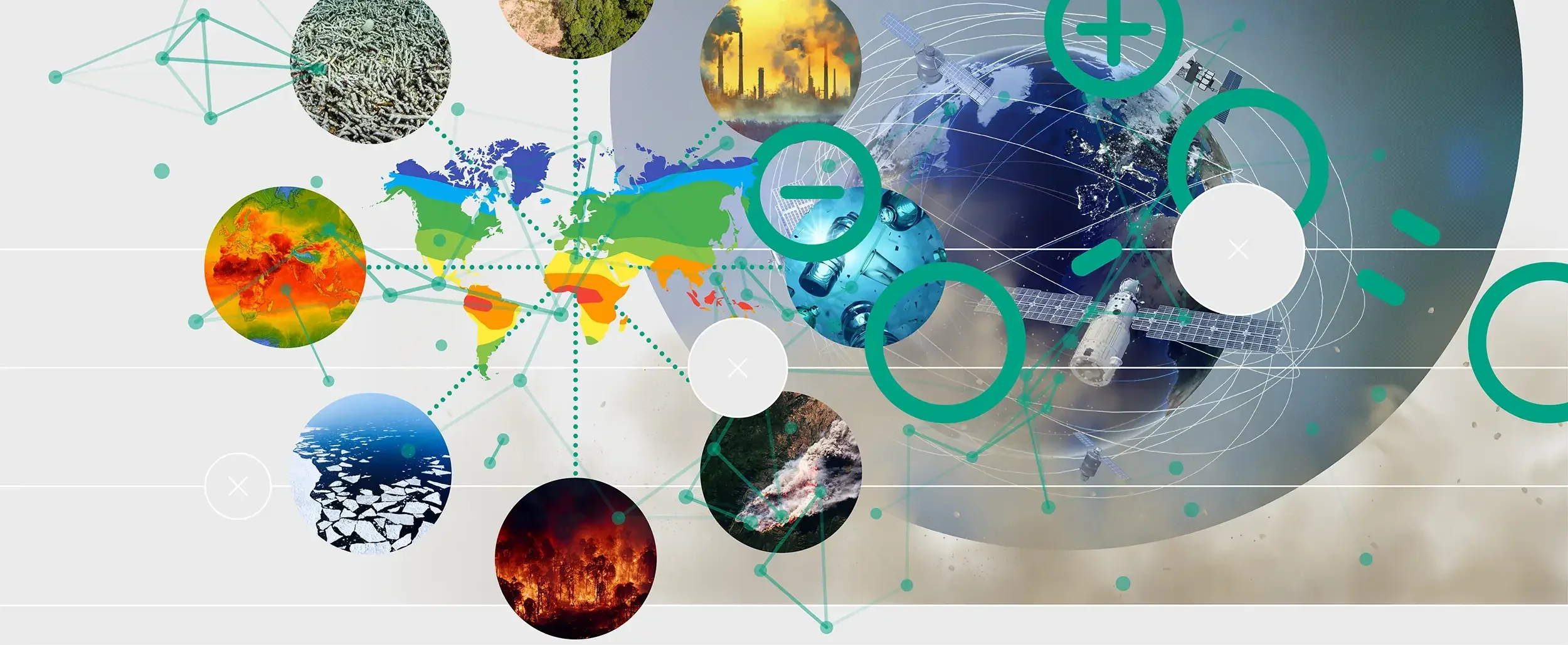 3.2.3Interactions between earth systemsThe various Earth Systems cannot be fully understood in isolation. For example, humanity’s greenhouse gas emissions are heating up Earth’s... more | 5-year horizonPlanetary boundaries are better understoodResearchers gain a clearer understanding of the interdependence between planetary boundaries, and significantly improve estimates of the safe limits for pollution. | 10-year horizonAn array of sensing technologies feed into modelling of system exchangesImprovements in LIDAR, satellite-based sensing and infra-red spectroscopy provide more reliable data on gas exchanges between biosphere and atmosphere, which improves Earth Systems modelling. | 25-year horizonComputing advances improve climate interventionsExascale computing allows data from all Earth Systems (including their interactions) to be integrated into the best sets of models at high resolution. This enables ensemble-based predictions and deeper, more reliable understanding of where interventions will have the greatest impact on climate change. |
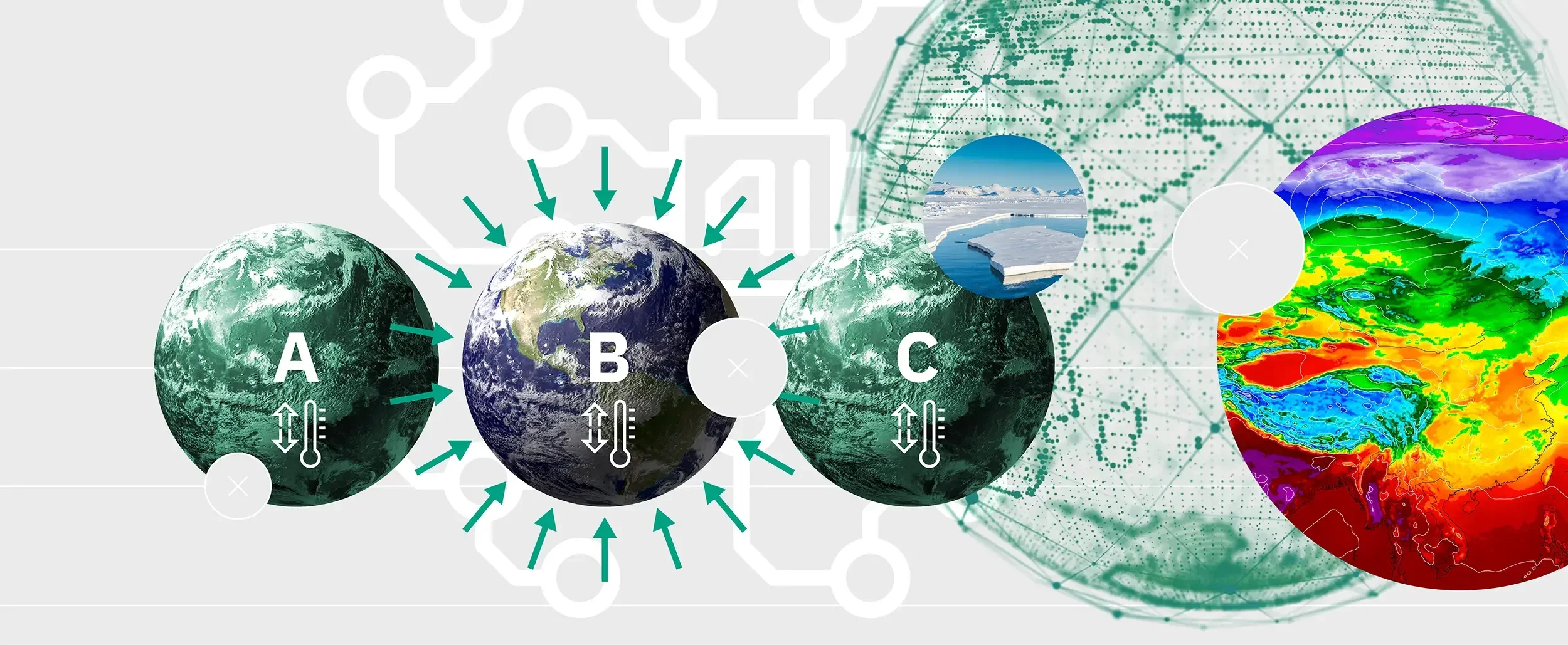 3.2.4Model intercomparisonThere is no single “best” model of how Earth Systems interact to create our environment. All of the various models... more | 5-year horizonLeading models become more integratedInsights into what makes some climate models more accurate than others facilitates the creation of weighted ensembles of models that show marked improvement in performance. | 10-year horizonAI accelerates performance and reliability of models across Earth SystemsResearchers converge on a constructed set of constrained models that work reasonably well across all Earth Systems, capturing uncertainty in a structured way. AI-based model improvements begin to accelerate performance, for example by improving parameterisation of processes too complex to be explicitly modelled. AI is also used to estimate outcomes of scenarios for the Earth system, without the need for full simulations. | 25-year horizonModel uncertainties are significantly reducedGrowing alignment between models’ predictions gives a clear indication of climate instabilities and tipping elements. |
| 3.3Future Food Systems | |||
|---|---|---|---|
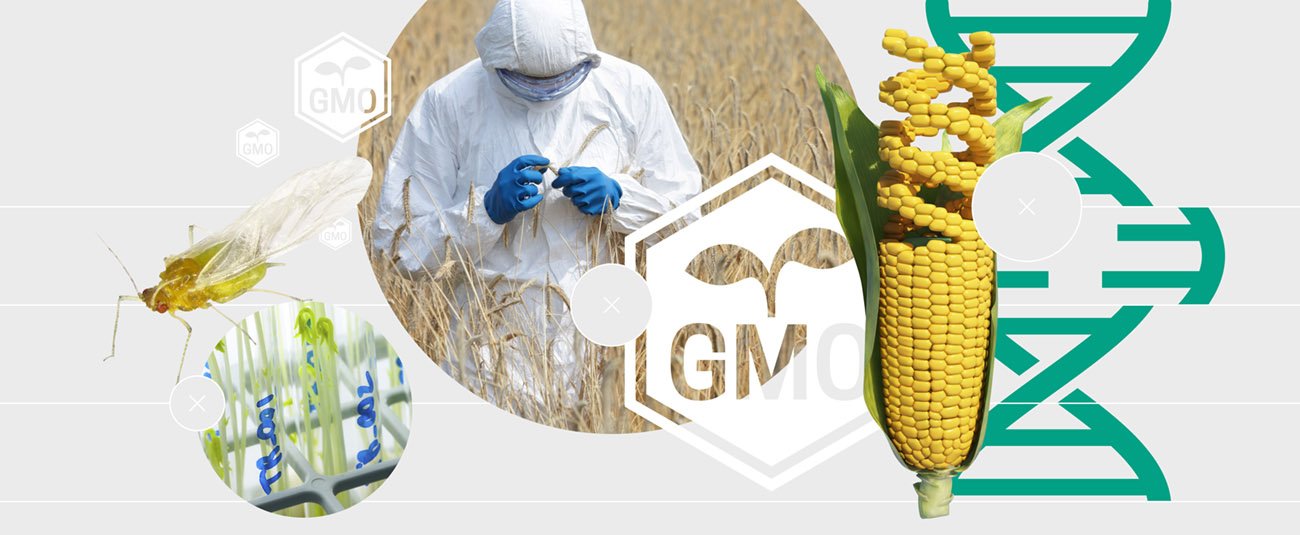 3.3.1Ecosystem-level Genetic ModificationEcosystem-level genetic modification is about using gene editing and manipulation technologies not only to enhance crops and plants but also... more | 5-year horizonGenetic modification remains controversialDebates continue over what genetic modification (GM) methods and products are, or should be, acceptable in markets around the world. Technological capability grows steadily, with scientific advances continuing to outstrip the public debate. | 10-year horizonCrops begin to receive viral boostsAgricultural crop performance is boosted by transient genetic reprogramming of plants, for example by using RNA sprays that virally alter crop traits without requiring the genetic modification of the plant’s genome.8 This makes them somewhat more palatable to wary consumers and regulators. Different genetic traits will be promoted, depending on the cultivation method: salt resistance and drought resistance will be important for outdoor cultivation, for instance; nutritional content and shortened growth cycle for indoor cultivation. Molecular sensors in plants become more widely used. | 25-year horizonThe GM toolbox maturesA wide range of GM approaches become available, including novel, genetically active pesticides, gene-drive organisms and genetic engineering of crop plants accelerated by machine learning algorithms. Deployment of GM organisms and technology is differentially constrained around the world, depending on national and international regulations and agribusiness interests. |
 3.3.2Alternative ProteinsAlthough protein is almost never the sole source of nutrients in a diet, the impact of farming non-sustainable and ethically... more | 5-year horizonAlternative proteins become ubiquitousAlternative proteins are grown more efficiently and become more enticing to consumers as taste profiles are refined. Concerns are increasingly raised about emerging monopolies in cultured meat. Nutritional value and sustainability impacts of alternative proteins are better understood. Hybrid products — a mix of cellular agriculture and plant-based produces — begin to bridge the price-point gap. | 10-year horizonMarkets respond to price-point crossoverAlternative protein, which continues to improve rapidly in quality, falls below $5 per kilogram, becoming cheaper than meat. It now commands 5-10 per cent of the global meat market by volume, compared with less than 1 per cent in 2021. Some specific ingredients, such as milk proteins for dairy-based products, are produced through fermentation, which provides a more acceptable sustainability footprint. | 25-year horizonHigh meat consumption is considered antisocialAfter decades, the message that tackling dangerous climate warming is virtually impossible without a large drop in meat consumption begins to make meat-eating a morally questionable practice in many richer societies. Novel food categories are well-established, replacing many of the traditional food items. |
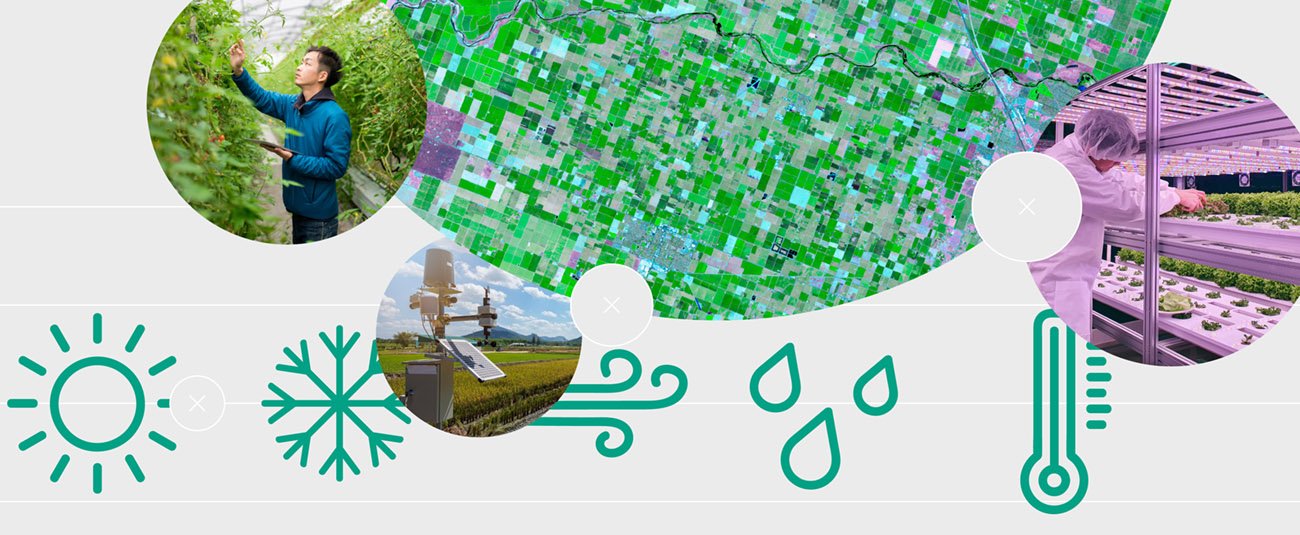 3.3.3Resilient FarmingIf we are to boost crop yields in sustainable ways, alter the geography of our food growing and distribution networks... more | 5-year horizonPrecision farming begins to change industry economicsPrecision farming systems exploit information and communications technology to evaluate the key aspects of the farming environment and crop characteristics. With these in place, farmers use automated systems to maximise yields. | 10-year horizonNew techniques are deployed in the urbanising worldAdvances in agricultural sciences allow use of intensive, efficient vertical farming methods to grow staple crops in urban environments, with up to 30 per cent of the food required for an urban population being produced in the urban environment. The resulting minimal food miles significantly reduce spoilage, transportation and packaging. | 25-year horizonSoils become a critical issueDespite warnings from agronomists across the globe, a significant proportion of Earth’s soils are critically degraded: far more than the 2021 figures of 33 per cent — when 50 per cent less food was required. Soil degradation may yet be reversed through the widespread embracing of the principles and practices of agroecology — sustainable farming that works in closer harmony with nature.14 |
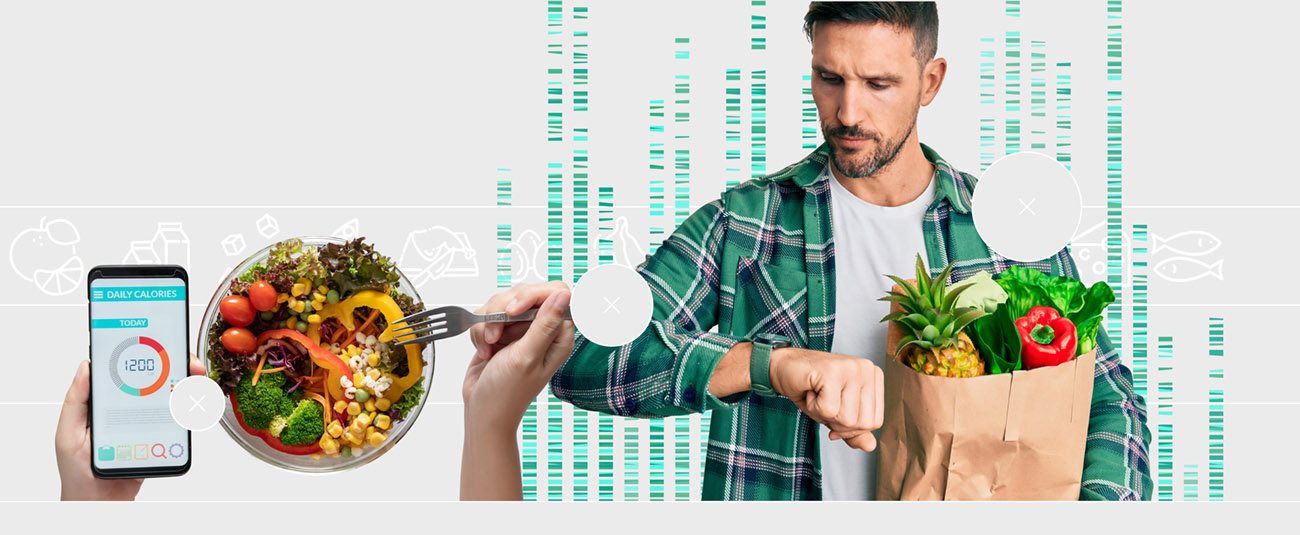 3.3.4Personalised NutritionAn individual’s genetic code affects how their body reacts to and metabolises specific food types. By aligning their nutritional intake... more | 5-year horizonAI provides insights into diet-related healthNutrition for Precision Health, a $156 million, 5-year study by the US National Institutes of Health, concludes, providing powerful new insights into links between diet, genes and behaviour. The research also delivers AI algorithms to predict individual responses to foods and dietary patterns, and better understanding and management of diet-responsive noncommunicable diseases such as obesity and diabetes. | 10-year horizonWearable technology assists food choicesWearable and non-invasive electrochemical sensors, able to track the physiological changes that occur when the wearer consumes food or supplements, become mainstream.17 Links between these real-time data sources and cloud computing brings personalised nutrition into wider reach in the smartphone era. Prevention of noncommunicable diseases through control of food and nutrition accounts for extensive savings in healthcare spending in developed and developing countries. | 25-year horizonThe era of high-fidelity precision nutrition beginsPeople living in economically prosperous nations begin to use AI-enabled, high-fidelity precision nutrition, where implanted, wireless sensors inform consumers in real time what happens to their physiology when they eat particular foods, enabling a shift to more intelligent consumption decisions. |
| 3.4Space Resources | |||
|---|---|---|---|
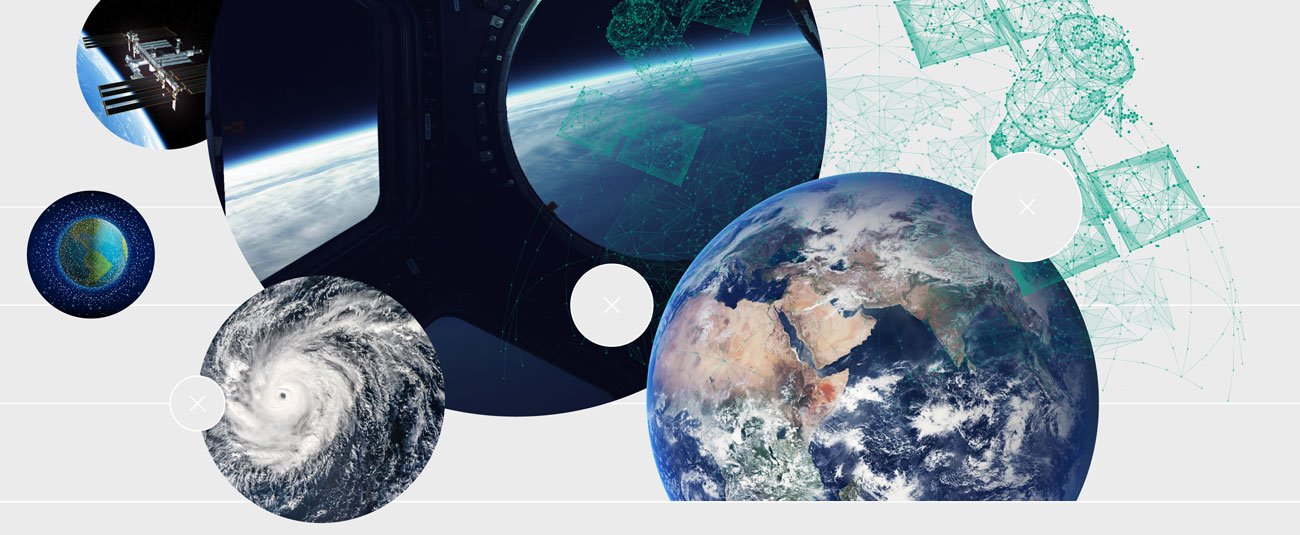 3.4.1Earth OrbitFrom low-Earth orbit, the space above an altitude of 160 km, out to geostationary orbit just less than 36,000 km... more | 5-year horizonBig dataA new generation of remote sensing satellites provide autonomous, real-time monitoring of Earth’s polar regions in unprecedented detail leading to significantly improved climate models. Big data from remote sensing Copernicus Sentinel satellites begin to offer a fine-grained understanding of how our oceans, winds and biosphere are changing.18 Private communications constellations provide broadband capability across the world, allowing more widespread and capable observation across the planet. The dramatic increase in low-Earth orbit satellite constellations provides momentum for international agreement on standards for managing orbital behaviour. The growth of space tourism accelerates the formation of international forums in which clear legal frameworks for this activity are discussed. | 10-year horizonSpace debrisVast numbers of satellites launched in the 2020s are now defunct, while new fleets are launched continuously. Communication, navigation, surveillance, research and exploration, and indeed the entire global digital economy, is threatened by increasing prevalence of collisions in Earth orbit. Efforts are made towards a collaborative and international approach to space, however self-interest and short-term, profit-driven decision making abounds. The need for international agreement on standards for managing orbital behaviour is urgent. | 25-year horizonCommercial versus environmentalMassive data streams from orbiting constellations provide real-time tracking of weather, traffic and emissions along with continuous observations of the amount of energy the Earth absorbs from the Sun versus how much it radiates. Real-time tracking makes many international activities transparent, providing important ground truth data for climate change negotiations, for carbon trading and for circular economics. China begins building zero carbon, solar energy-harvesting stations in low-Earth orbit.19 These stations use microwaves to beam the sun’s energy to the ground, but the move creates international outrage because the microwave beams can also be used as weapons. The vagaries of intentional space law regarding weapons come under intense scrutiny. However, all low-Earth orbit activities could be at risk. If today’s operational practises remain unchanged, with almost no space objects performing end-of-life manoeuvres and with explosions continuing to occur, this leads to a progressive, uncontrolled increase of object numbers, with collisions becoming the primary debris source within less than 50 years.20 The Kessler effect21 is a theoretical scenario in which the density of space debris in low-Earth orbit is high enough that collisions between objects cause collision cascades, rendering space activities and the use of satellites in specific orbits near impossible for generations to come. |
 3.4.2The MoonHuman presence in space is currently limited to low-Earth orbit, but plans are afoot to send crews back to the... more | 5-year horizonHumans return to the MoonNASA may achieve its stated goal of landing the first woman and the first person of colour on the moon.26 These become iconic and inspirational role models for the diverse future of space travel. Increasing numbers of public and private organisations announce plans for crewed and uncrewed missions to the Moon. Private crewed Moon flyby missions accelerate the formation of international forums in which clear legal frameworks for lunar tourism are discussed. The Chinese Chang’e-7 south pole lander finds water ice, a significant potential resource for the lunar base it plans with Russia. | 10-year horizonThe Moon economyBy 2030, the increase in Earth's population to 8.6 billion and increasing rates of urbanisation will have implications for the demand for resources27. Environmental, social and governance factors28, along with depletion in terms of diminishing economic returns29, results in shortages in metal and mineral supplies, disrupting technology supply chains on Earth. There is a surge in private companies heading to the Moon to extract resources for terrestrial use. | 25-year horizonReconsidering Moon miningMultiple landings and launches from the lunar surface over the years create clouds of rocket exhaust and lunar dust that only slowly disperse30, raising the possibility of irreversible alteration of the Moon’s environment and tighter restrictions for lunar missions.31,32 |
 3.4.3Asteroid BeltWhile asteroid resources including minerals, metals and water will be useful for off-world activities, whether for space manufacturing, to sustain... more | 5-year horizonSolar System sampling missions arrive homeSuccessful sample-return missions from the asteroid 101955 Bennu (NASA’s OSIRIS-Rex), from the Moon (China’s Chang’e 6) and from the Martian moon Phobos (Japan’s MMX) spark more ambitious studies of asteroids as potential sources of precious metals and in-orbit supplies. | 10-year horizonAsteroid prospectorsWith continued reduction in costs of launch, as well as shortages in metal and mineral supplies that could emerge as early as ten years’ time43, there’s an increase in the number of organisations involved in local characterisation of asteroids, either by flyby or contact.44,45 | 25-year horizonPlanetary protection becomes importantPlanetary Protection Policy46 reflects both the unknown nature of the space environment and the desire of the scientific community to preserve the pristine nature of celestial bodies for future investigations, particularly the search for life. Mass species extinction on Earth and irreversible disruption of the Moon environment are both attributed to rampant commercialisation. The Policy is extended to restrict commercial resource extraction on planets and moons. Asteroid resources are utilisable within Policy guidelines. The abundance of metals, minerals and water in the asteroid belt means that the creation of technologies and communities anywhere in the Solar System is possible. The eradication of scarcity and poverty is conceivable when we are not confined to Earth’s limited resource base. |
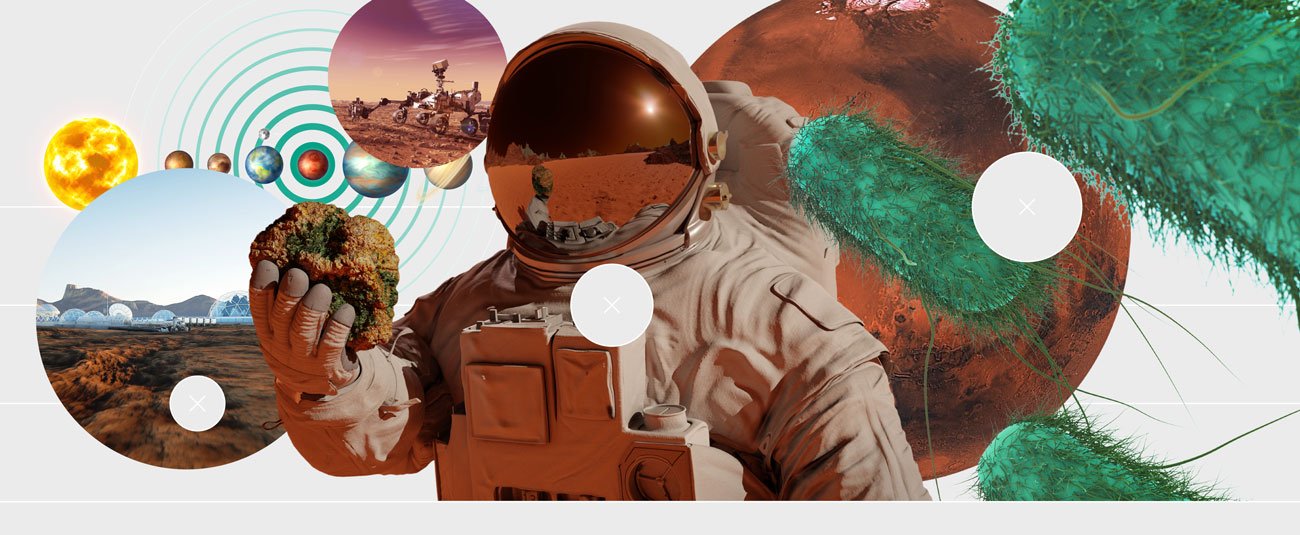 3.4.4MarsSince the 1960s, humanity has launched dozens of missions to Mars to learn more about the planet next door. Mars... more | 5-year horizonMars missions become routineMore organisations send technology missions to Mars, which feels ever closer with all the high definition footage of the surface that we are able to interact with online, and increasingly also in virtual reality. | 10-year horizonMars mission plans raise ethical concernsSpaceX sends the first crews to Mars on the Starship. Base infrastructure construction begins. National and private missions are made to Mars with ambitious timelines race to overcome significant technical challenges, such as protecting the crew from radiation during the journey. While SpaceX’s Starship is a reusable vehicle for return trips, some organisations plan one-way missions to reduce cost and complexity, triggering widespread debate about the ethics of space exploration. Chinese and NASA/ESA missions separately collect samples from Mars and return them to Earth. | 25-year horizonHuman presence on MarsHuman population exceeds 9.5 billion and the destabilisation of Earth’s life-support system continues. The pursuit of continued economic growth results in further disruption of habitats, eradication of species and pollution of water, soil and air. Plans to expand a range of permanent bases (including those of China, the US and also private infrastructure) for more people to live and work on the surface of Mars. Unless major shifts in our current trajectory are made, humans headed to Mars on the 25 year horizon may be less motivated by exploration than by desperation, as with many intercontinental migrations on Earth in the past millennium. |
| 3.5Ocean Stewardship | |||
|---|---|---|---|
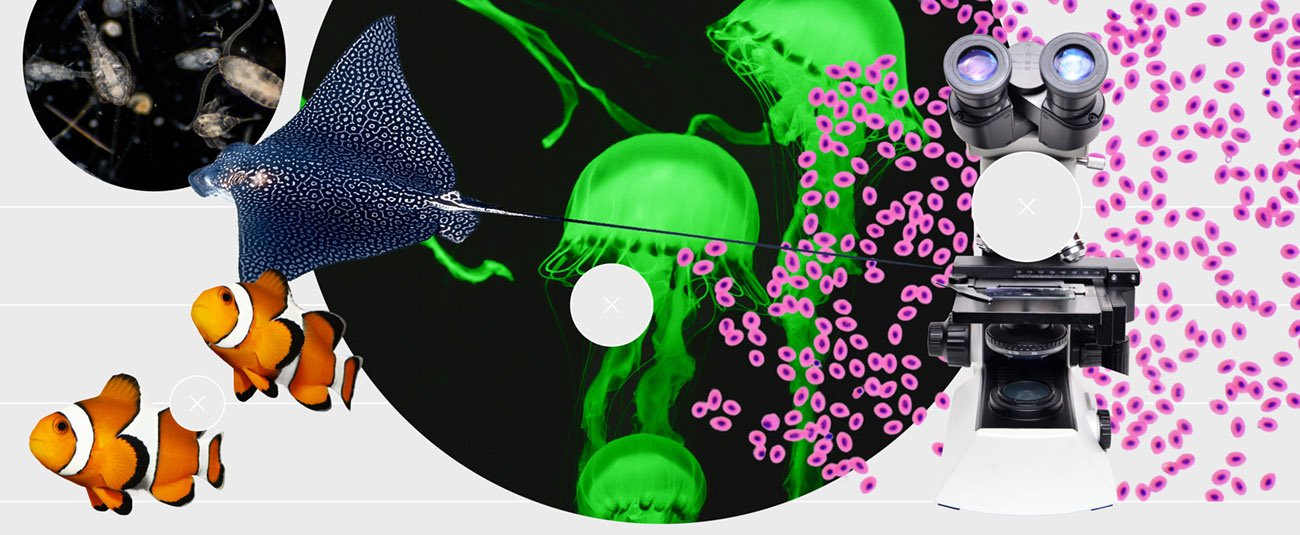 3.5.1Harnessing Ocean BiodiversityMarine biodiversity is an enormous and largely untapped trove of biological riches. This is particularly true with respect to drug... more | 5-year horizonGenetic resources continue to show their worthIncreasing use of open-source tools and open-access data maximises the inclusivity, transparency and value of MGR research. Platforms such as the Ocean Biodiversity Information System (OBIS) — the global open-access platform for science, conservation and sustainable development around marine biodiversity — offer a template for future progress. | 10-year horizonOcean-derived commercial products flourishMedical, industrial and other products derived from MGR become ubiquitous. Machine learning systems speed up MGR-related discoveries across multiple fields, including pharmaceuticals, synthetic biology and biotech more broadly. | 25-year horizonDeep-sea observatories gather ocean dataDevelopments in automation allow data gathering and sample processing to occur in situ, at autonomous deep-sea observatories, allowing scientific exploration of the ocean genome in regions in which physical sample return is not practical. |
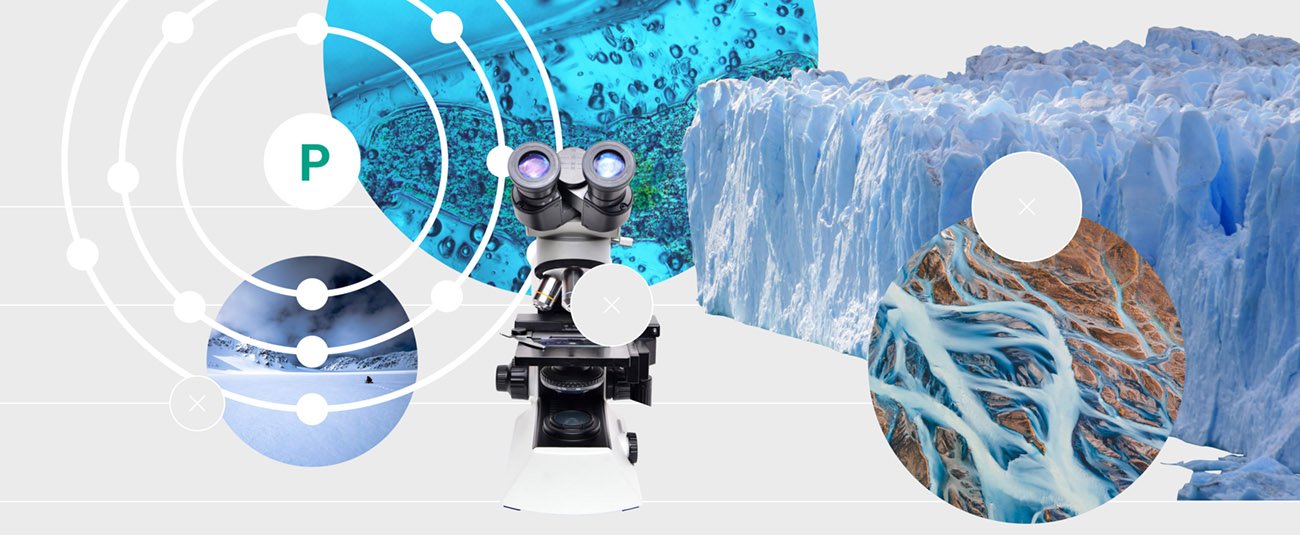 3.5.2Transition EcosystemsOne of the world’s key transition ecosystems is the interface between the cryosphere and the hydrosphere, where glaciers melt into... more | 5-year horizonStorage and study of cold-adapted organisms beginsScientists around the world collect samples of the cold-adapted biodiversity that exists in these frontier ecosystems. The beginnings of an international repository to store and preserve such microorganisms, fashioned after Svalbard Global Seed Vault, is initiated, with genetic sequences of these microorganisms shared to an open-access database. Cold-adapted enzymes, discovered from bioprospected organisms in glacial zones, generate significant and low-waste bio-activity at low temperatures. These exquisitely tuned biological catalysts are now in widespread use, making industrial, medical and many other processes more efficient and environmentally friendlier.13 | 10-year horizonTransition ecosystems inform Earth modellingThe integration of biodiversity models of these transition ecosystem into larger-scale Earth-system simulations helps to produce predictions of the effects of glacier loss. | 25-year horizonGlacial bioprospecting pays offMetagenomic analysis of the world’s glacial transition ecosystems results in a comprehensive public repository of genetic information about these rapidly disappearing environments. |
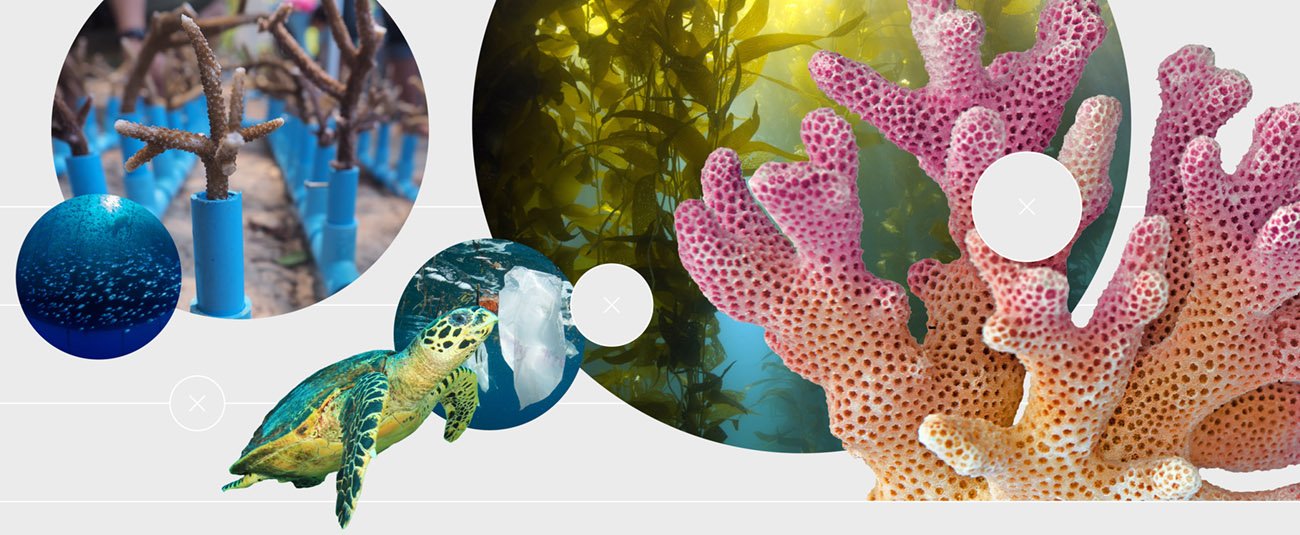 3.5.3Repairing the OceanWith ocean ecosystems under increasing strain, a two-fold strategy of ensuring precautionary approaches and sustainable management and a simultaneous significant... more | 5-year horizonData-gathering improves understandingIncreasing democratisation of the access to technology will increase global participation in data gathering, to help us answer questions such as how ocean ecosystems respond to human disturbance. Machine learning tools will start to improve the monitoring of some of the ocean’s most vulnerable ecosystems such as blue carbon ecosystems (coral reefs, seagrass beds and salt marshes), aiding in the development and implementation of improved management plans.19 | 10-year horizonLarge-scale coral interventions beginImproved monitoring, use of genomic technologies and other innovations result in a step-change in scientific understanding of ocean habitats and basins and their connectivity, which helps to explain the relationship between human activity and what happens in our deepest waters, informing policy-making. Ecosystem-based management of the ocean becomes a norm around the world, leading to rapid progress in stemming the loss of biodiversity and meeting conservation targets. Iconic ecosystems of disproportionate importance for ocean health, like coral reefs and seagrass beds, are conserved and restored based on the successful implementation of tailored interventions developed in fully inclusive and participatory processes. These will rely on multidisciplinary collaboration and use of automation tools to deliver on the required scales.20 | 25-year horizonCarbon pricing evolves to protect oceansTraditional carbon-emissions pricing and “blue carbon” pricing, which puts a monetary value on coastal ecosystems such as tidal marshes and seagrass meadows that lock up large amounts of carbon, evolves into an all-encompassing “nature pricing” approach encompassing ocean stewardship. |
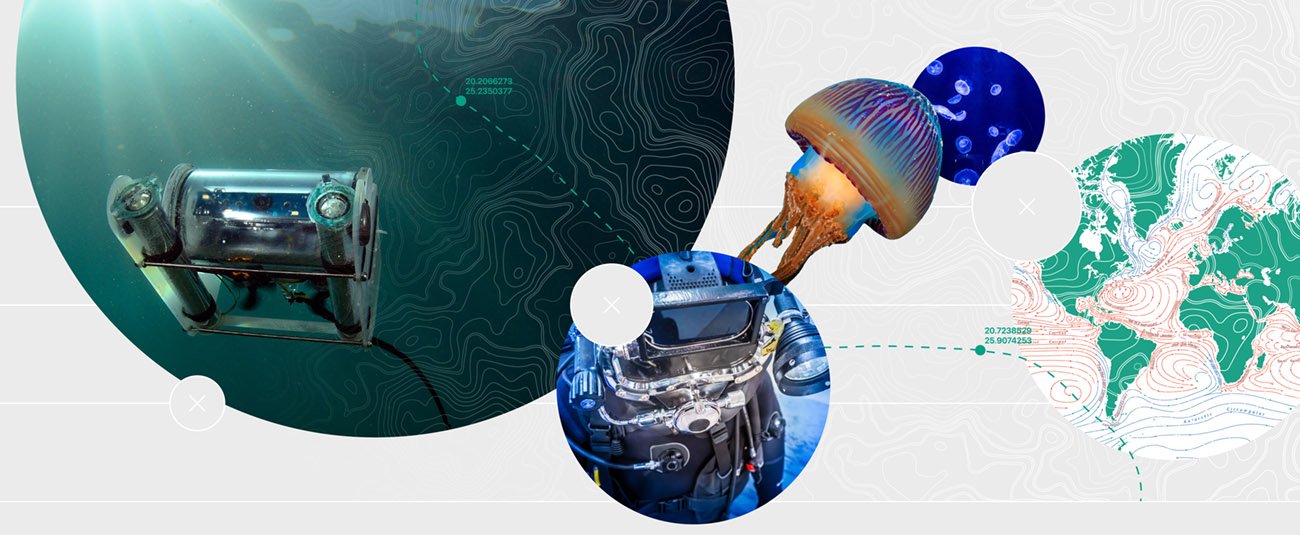 3.5.4Improved Ocean ObservationObserving how ocean temperatures, currents, oxygenation, sea life, and ocean plastic are changing through the water column over time and... more | 5-year horizonWidespread monitoring becomes possibleThe increasing availability of inexpensive sensors and related technology for use in the ocean will make widespread ocean monitoring more viable. | 10-year horizonRobots begin to gather ocean dataDeployment of autonomous research craft and robots closes the gap between the rapid changes occurring in the ocean and our limited gathering of fundamental marine data, becoming a key driver in the development of deep-sea science and modelling.22,23 | 25-year horizonGlobal hydrosphere models inform policymakingAdvanced machine learning models, combined with huge amounts of incoming data, allow the entire planet’s hydrosphere to be dynamically modelled rather than its various aspects being dealt with in research silos. This enables enlightened policymaking through accurate predictions of future ocean scenarios. |
| 3.6Solar Radiation Modification | |||
|---|---|---|---|
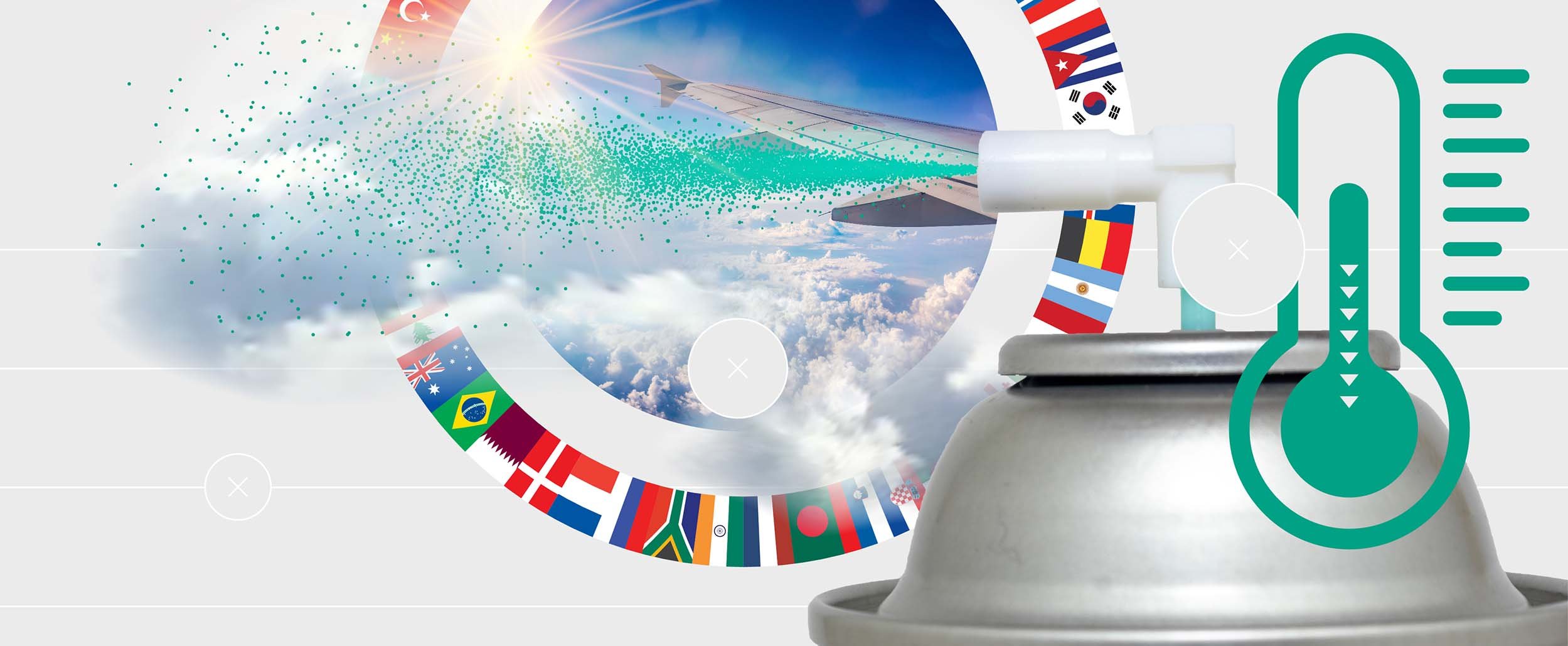 3.6.1Stratospheric aerosol injectionThe most prominent and most studied approach to SRM is stratospheric aerosol injection (SAI). This entails injecting chemicals into the... more | 5-year horizonSAI conversations beginWe may have gained a renewed sense of climate urgency after the report of the Global Overshoot Commission, COP28's Global Stocktake, UNEA 6 and UN General Assembly considerations, and a special report on SRM of the IPCC. These allow informed global conversations about SAI to begin. Moreover, they encourage internationally coordinated outdoor SRM research programmes to take place, and to better understand the risks, benefits and governance challenges of SRM. | 10-year horizonModelling informs decision-makingContinued indoor modelling research, as well as outdoor field experiments, result in sufficient information to begin to allow evidence-based decision-making on whether or not to consider SAI as a supplemental option to mitigate and to adapt to climate change. Governance frameworks that had been put in place to guide international coordinated research on SAI, as well as further research on governance needs of SAI and the available evidence base, result in beginning work toward an international treaty for the long-term governance of SAI. | 25-year horizonGovernance of SAI deployment beginsAdvances in high resolution modelling capabilities give better understanding of SAI's impacts at local and regional scale. A global treaty provides a binding framework for long-term governance of SAI deployment as one of many climate change mitigation techniques. Its provisions also provide for a global authority to implement SAI on behalf of the global community. |
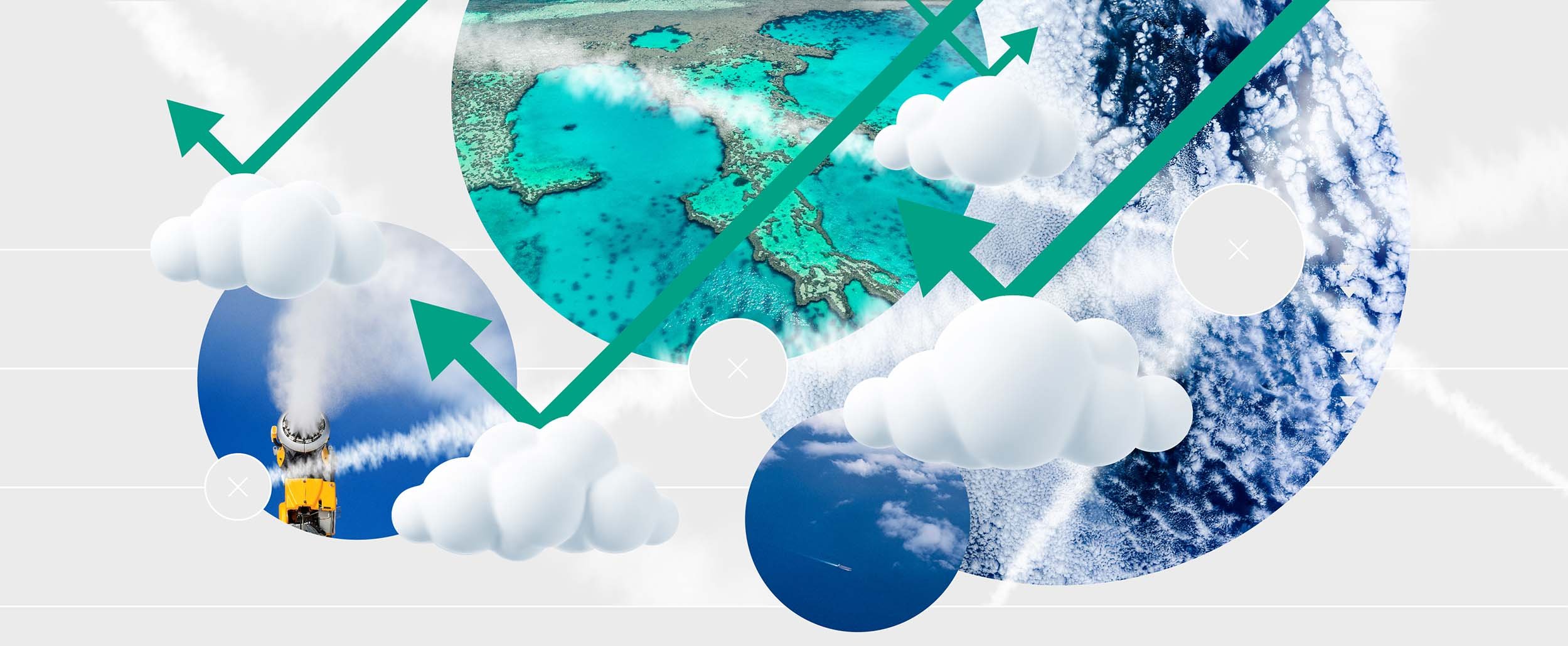 3.6.2Cloud engineeringA number of SRM technologies involve altering the properties of clouds, causing the clouds to reflect more solar radiation back... more | 5-year horizonMCB experiments are promisingThe Australian MCB experiments yield encouraging results, and result in the launch of 10-year programme to apply MCB to contribute to the protection of the Great Barrier Reef. | 10-year horizonSmall-scale MCB beginsWe have the first prototypes of automated ships that can spray seawater for MCB. The first official small-scale use of marine cloud brightening is undertaken over endangered corals. Real-world testing of cirrus modification begins. | 25-year horizonMCB in regular useMCB is in regular use over corals and other heat-sensitive ecosystems during heatwaves. |
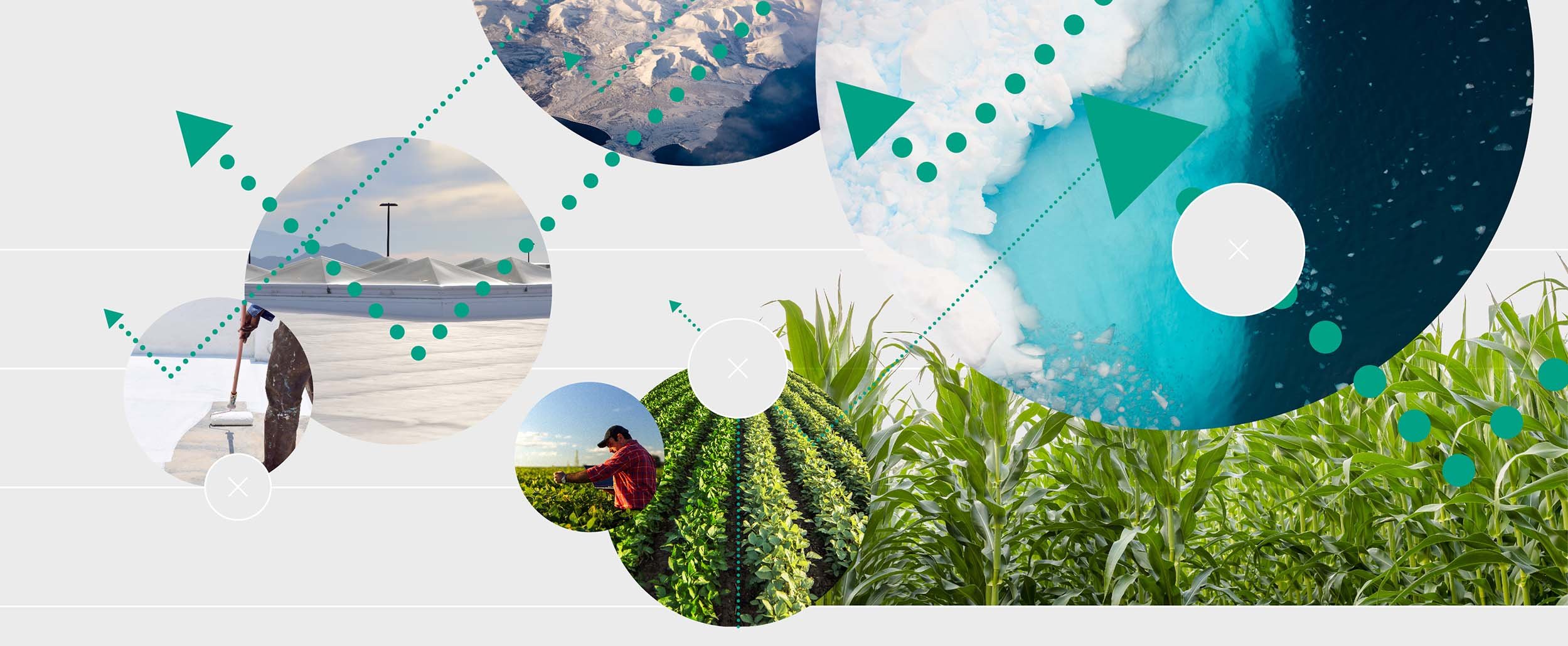 3.6.3Terrestrial solar radiation modificationChanging the colour of parts of the Earth's surface can affect local heating. This is because dark surfaces absorb more... more | 5-year horizonUrgency spurs international researchFollowing the COP28 Global Stock Take, the UN Environment Assembly and the Arctic Council agree that refreezing the Arctic is an urgent priority to avoid a major global tipping point. This spurs major international research efforts to find effective solutions. Small effects of albedo brightening encourage local governments to experiment further. | 10-year horizonBuilding codes embrace albedo brighteningAlbedo brightening is written into legal requirements for new buildings. | 25-year horizonCrops assist albedo brighteningCrops engineered for higher albedo become widely available to farmers. |
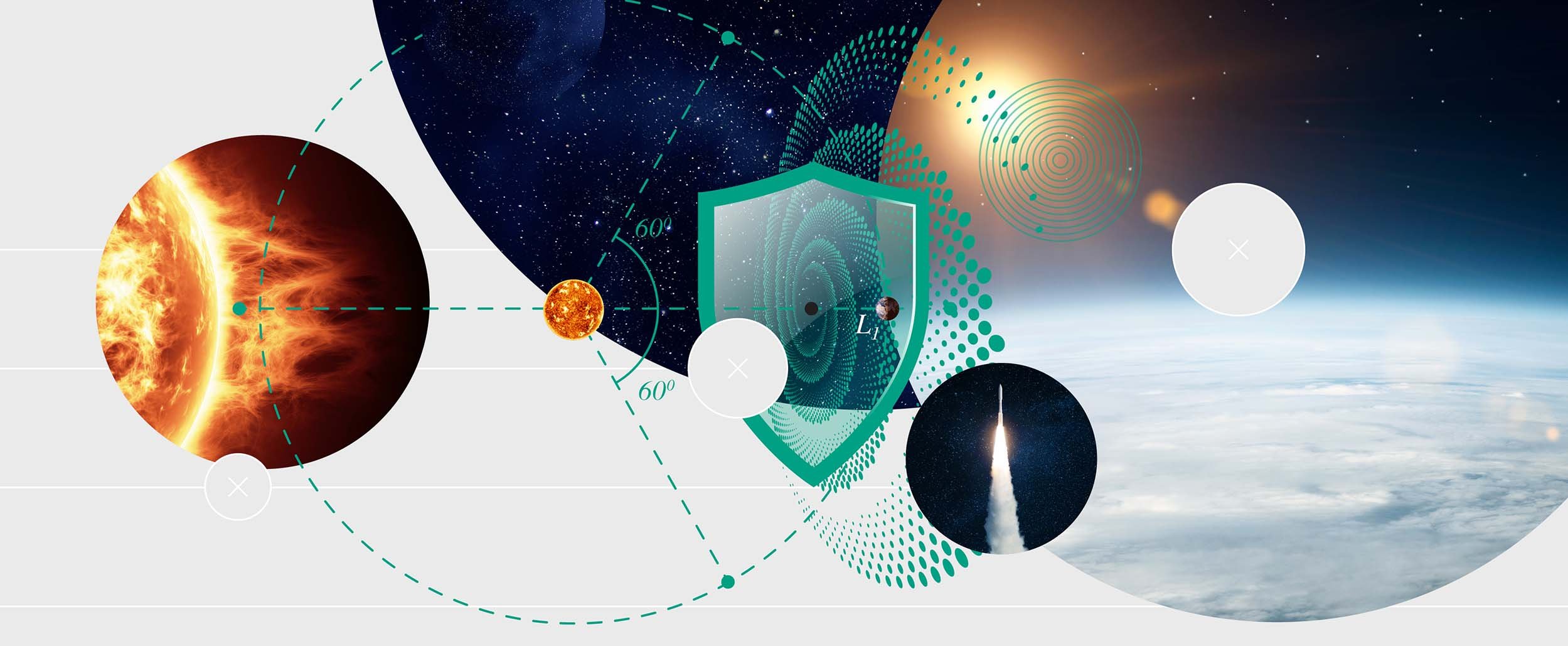 3.6.4Space-based solar radiation modificationThere are a number of proposals for space-based technologies that could mitigate climate warming. In all cases, the technologies would... more | 5-year horizonSpace-based SRM remains a conversation topicRenewed interest in spaceflight and space colonisation ensures that conversations about space-based SRM continue. | 10-year horizonFalling costs spur interestSpeculative planning by interested parties shows that once-prohibitive costs have been reduced through advances in spaceflight technology. Consortia of wealthy individuals begin to talk openly about temporarily alleviating climate issues through space-based means. | 25-year horizonFeasibility studies beginGovernments commission preliminary feasibility studies for space-based SRM. Small-scale, low-orbit tests of solar reflector technology begin. |
| 3.7Infectious Diseases | |||
|---|---|---|---|
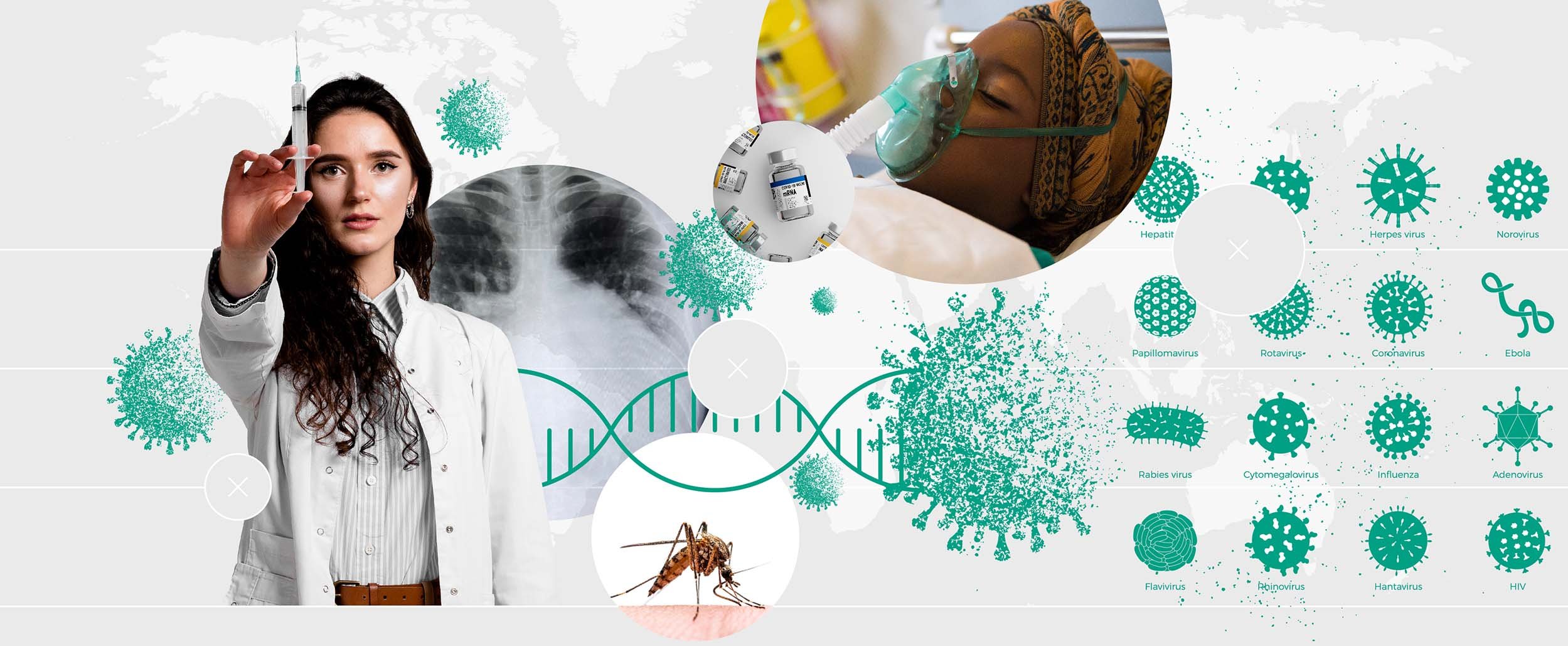 3.7.1Pathogen biologyGreat progress has been made in our understanding of fundamental pathogen biology. However, while some pathogens are extremely well studied,... more | 5-year horizonVaccine production improvementsVaccines can be rolled out within 100 days of the emergence of new pathogens. Research and commercial development puts mRNA vaccines into widespread use for multiple infectious diseases. | 10-year horizonExposome developmentSystematic studies allow the compilation of a full list of pathogens and other compromising agents that the average person is exposed to during their lifetime — their “exposomes”. Effective treatments exist for post-infection conditions like long COVID and ME/CFS. | 25-year horizonPathogen index createdA systematic global understanding of potentially dangerous pathogens in nature is compiled. |
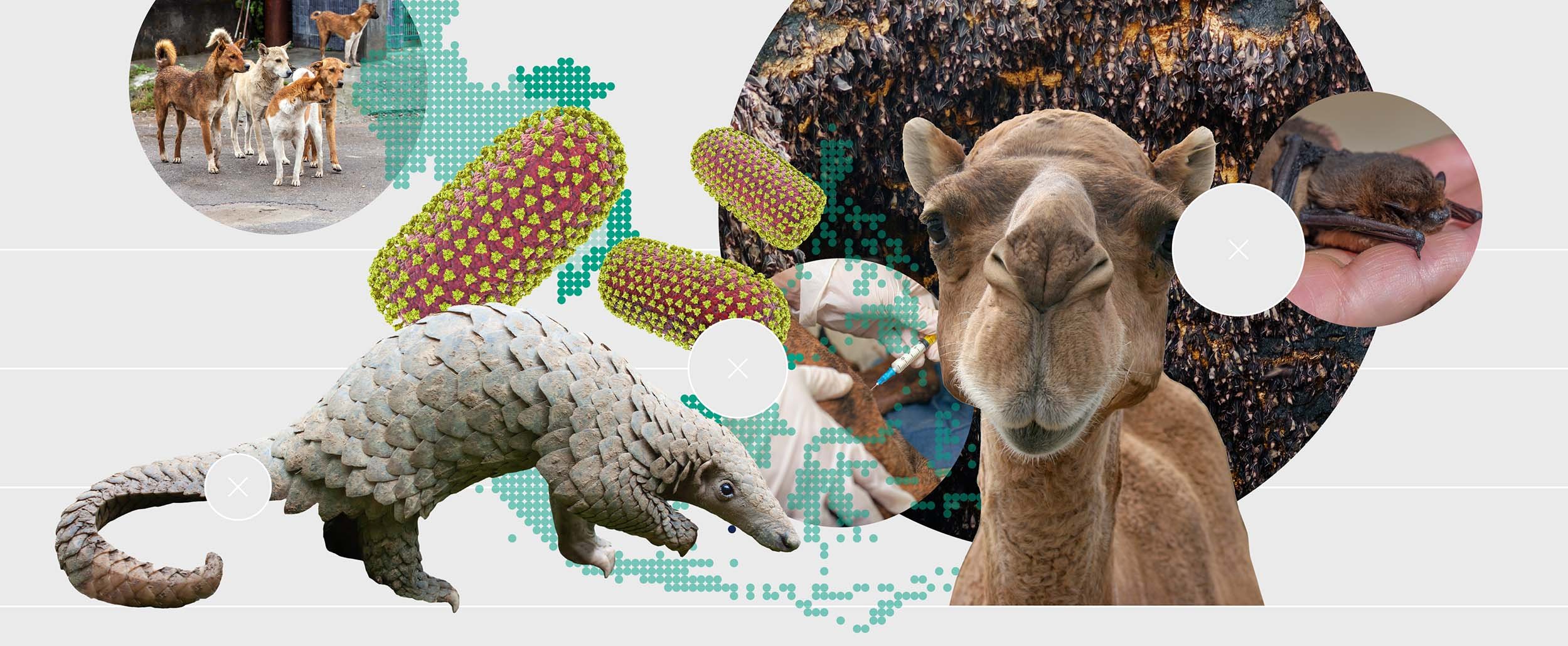 3.7.2Zoonotic diseaseThe COVID-19 pandemic has demonstrated once again the risk from zoonoses: diseases that move from animals to humans. More zoonotic... more | 5-year horizonOne Health comes closerData demonstrates the benefit of treating human and animal health together via vaccination and other tools that address the drivers of spillover events. | 10-year horizonRisk maps developedFine-grained risk maps of pathogen prevalence are developed, illustrating which regions have the greatest potential for zoonotic crossover. | 25-year horizonRabies eliminatedRabies is eliminated in Africa through a mass vaccination programme. Integrated One Health surveillance of diseases and drivers of spillover becomes standard practice. |
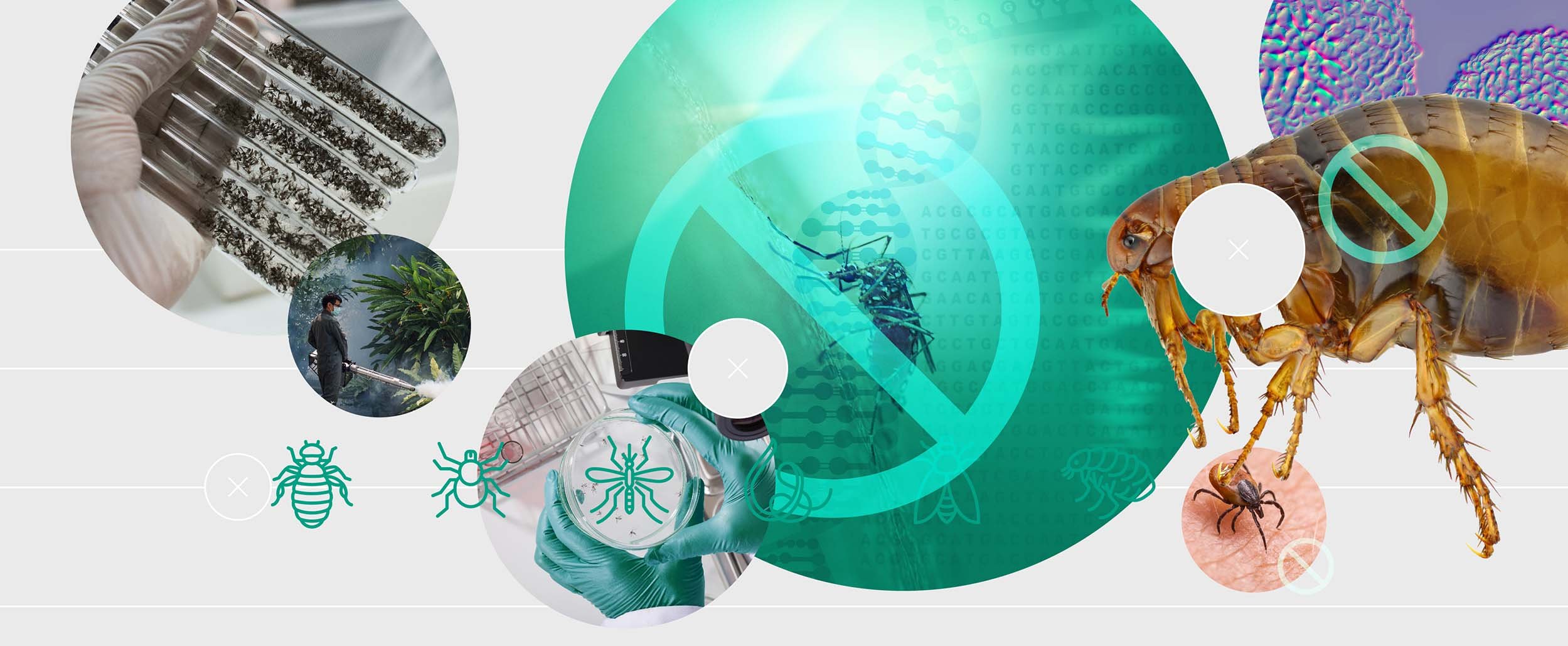 3.7.3Vector controlAround 80 per cent of the world's population is at risk from infection by viruses or parasites transmitted by vector... more | 5-year horizonSuccess in mosquito controlField experiments demonstrate that mosquito populations can be controlled by releasing individuals that are genetically or otherwise modified. Biologically modified vectors reduce mosquitoes transmitting diseases such as dengue fever. | 10-year horizonSynthetic biology harnessedThese methods are validated on other insect-borne diseases such as Zika and Chikungunya. The tools of synthetic biology, including genetics, are in widespread use to control vector organisms. | 25-year horizonVector microbiomes put to workAffected countries experience drastic cuts in annual cases of vector-borne diseases, while climate change moves outbreaks northward. Researchers learn how to disable or destroy vector organisms through action on the microbiome. |
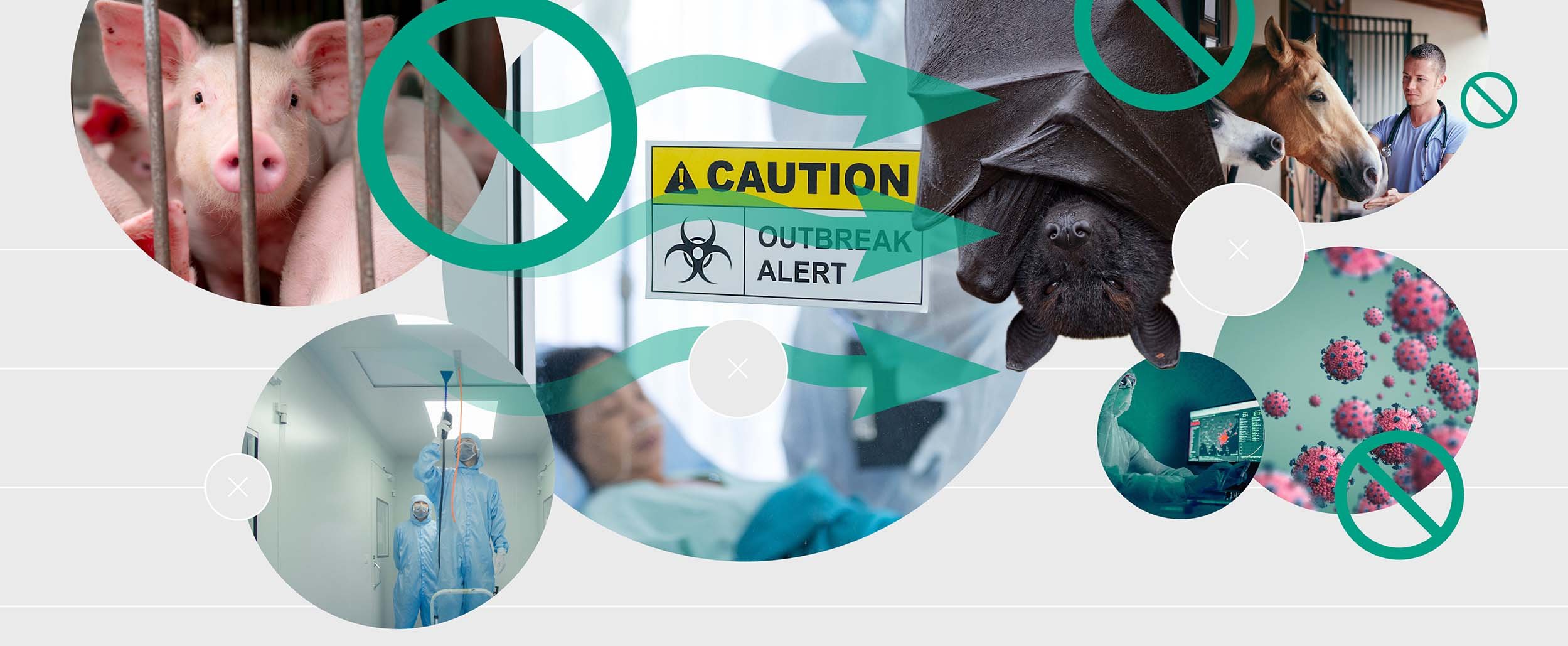 3.7.4Outbreak preventionThe best way to deal with a pandemic is to stop it happening in the first place.23 Preventing major outbreaks... more | 5-year horizonDrivers of disease emergence are tamedState agencies roll out improved ventilation and air filtration systems in key risk areas such as hospitals and animal markets. Large-scale genomic testing of pathogens enables the tracing of outbreak sources. There is global reform of animal markets and other human-animal contact sites to reduce drivers of disease emergence. | 10-year horizonPublic health systems strengthenedAware of previous shortcomings, governments build greater capacity and resilience into public health systems. One Health approaches are integrated into mainstream medicine and public health. | 25-year horizonEarly warning system establishedWe establish an integrated global pandemic early warning system based on a combination of disease surveillance in both humans and animals, ecosystem monitoring (including land use change and biodiversity), and tracking of human-animal contacts. |
| 4.1Science-based Diplomacy | |||
|---|---|---|---|
 4.1.1Computational DiplomacyThe world of diplomacy is rich in data. The United Nations and other international forums have detailed records of debates,... more | 5-year horizonHigher education establishments broaden skill sets for scientists and diplomatsEfforts to build capacity for computational diplomacy bear fruit in the form of an increased range of courses and training programmes. | 10-year horizonText mining shows its worth on the global stageIn helping to finalise the language in several major agreements and in helping to prevent “forum shopping” by several state actors, text mining shows its potential and is set to become a standard tool in international negotiations. | 25-year horizonComputational diplomacy reshapes international relations as a scienceThe successes with text mining and other data-driven applications allow experts to create a robust theory of diplomacy that makes testable predictions and creates useful frameworks for diplomatic interactions. |
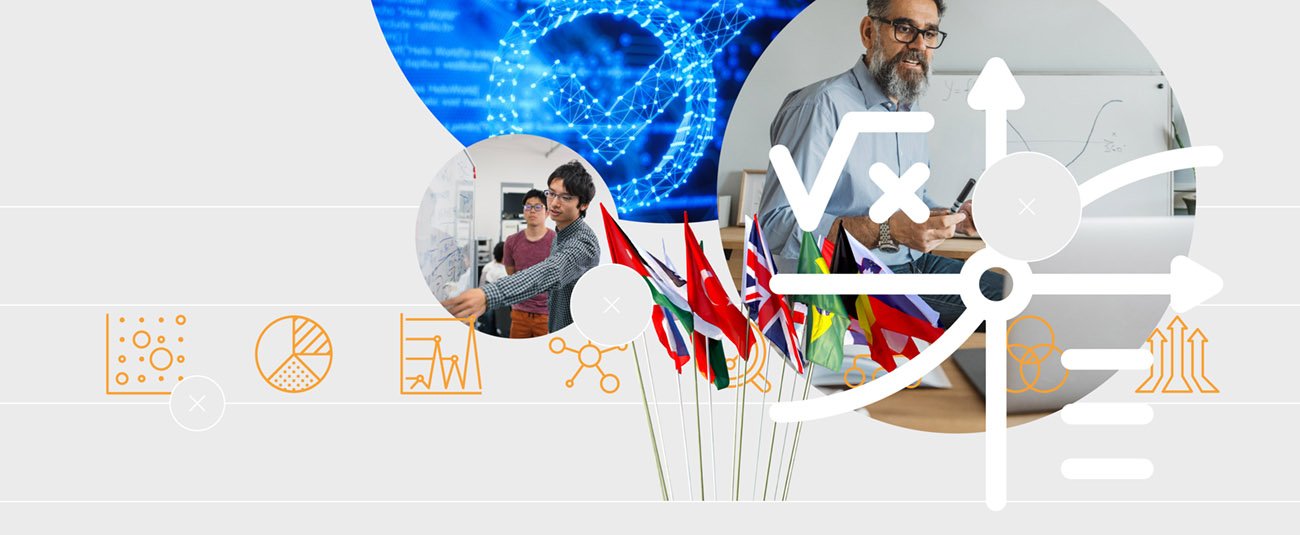 4.1.2Negotiation EngineeringNegotiation Engineering uses quantitative methods in a heuristic way to find an adequate solution to a set of complex negotiation... more | 5-year horizonCapacity-building accelerates Negotiation EngineeringThe success of online courses in Negotiation Engineering during Covid stimulates the evolution of this discipline, significantly building capacity in this field. | 10-year horizonMathematical thinking focuses international discussionsAn increasingly wide variety of international actors apply mathematical methods to their negotiation problems to help focus discussions and to make potential outcomes more logically accurate. | 25-year horizonNegotiating standards increase thanks to mathematical approachesMathematical skills are common in positions of influence allowing Negotiation Engineering to become a standard tool in many negotiations. |
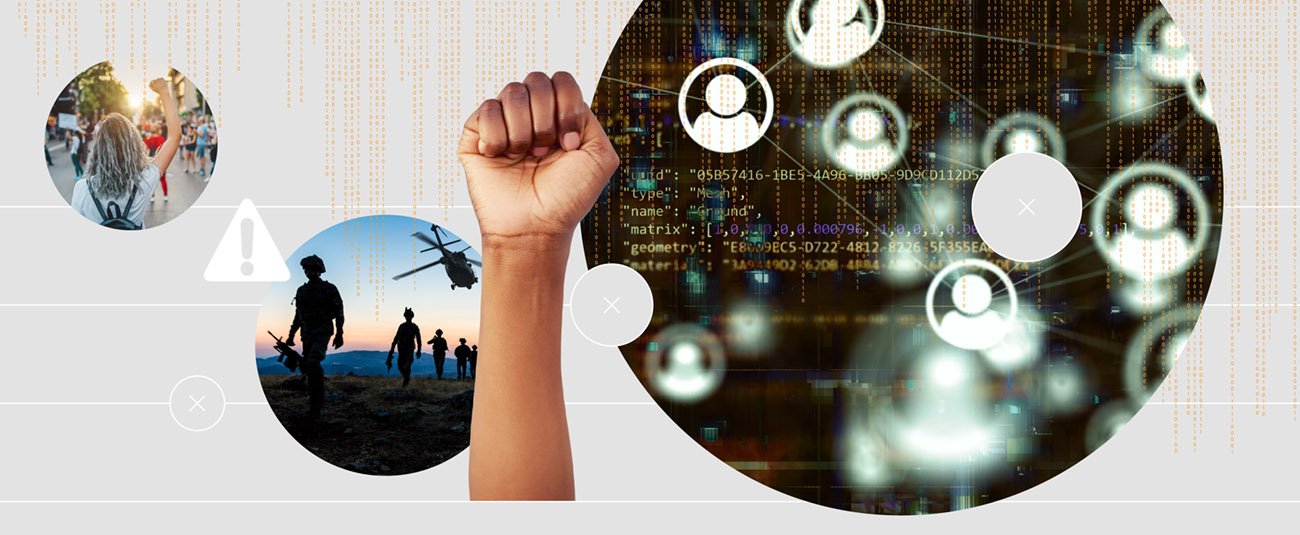 4.1.3Predictive PeacekeepingPredictive Peacekeeping uses technologies related to machine learning, big data and computational modelling to better understand conflict, to predict where... more | 5-year horizonComputer models map potential outcomesAdvanced models of areas of conflict allow stakeholders to map out and discuss potential futures before deciding on a course of action. | 10-year horizonMass-data gathering creates peacekeeping tools but raises issues of privacy and exclusionResearchers begin to use a wider range of data, such as anonymised mobile phone data, to study the potential for conflict. They lobby for accountability for social networking companies, who can now explicitly see when activity on their sites is fuelling unrest. The real-time nature of some data gathering exercises raises issues of privacy, and exclusion of those without a digital voice, that need to be addressed. | 25-year horizonClimate change and conflict increases use of peace modellingAs pressures from climate change increase and civil unrest becomes common in some parts of the world, the use of predictive peacekeeping models becomes a default response. |
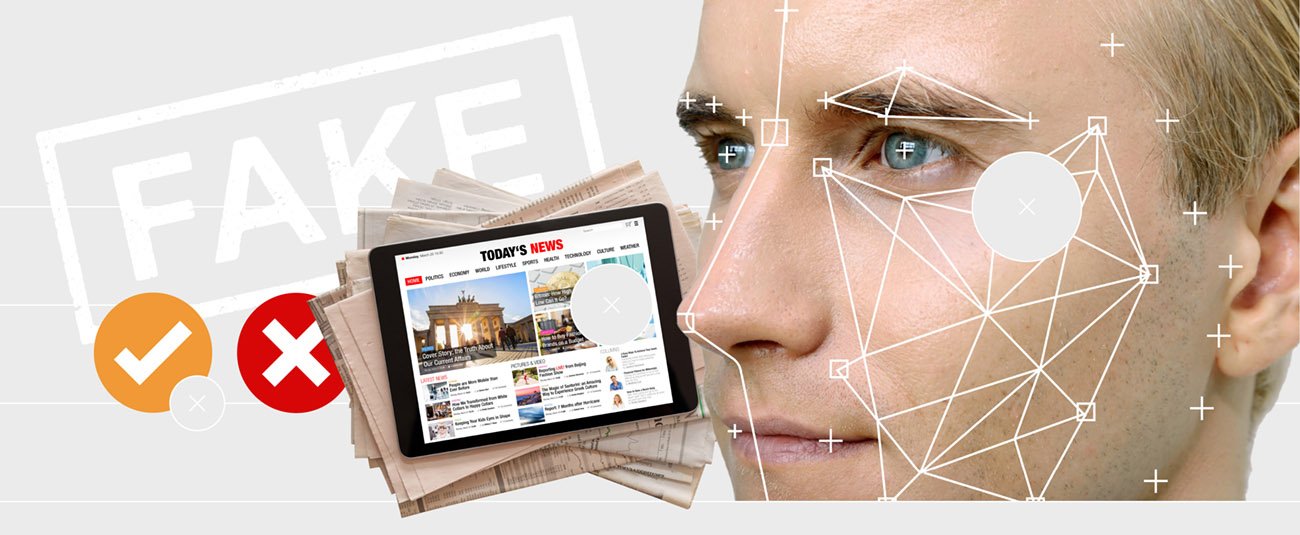 4.1.4Trust and Co-operation ModellingComputer scientists have begun to create systems in which autonomous agents have to find ways to co-operate by distinguishing good... more | 5-year horizonData veracity becomes a global research issueThe increased importance of data-gathering and analysis places a greater focus on data sources and their veracity. This leads to increased research in data verification research. | 10-year horizonStakeholders battle over reputation and trustReputation-building and trust become key factors for stakeholders in a wide range of data gathering disciplines ranging from news organisations, to scientific institutions to national and multinational organisations. Managing trust and reputation are potential battle grounds for some actors. | 25-year horizonAI oversees data veracityMachine vision and artificial intelligence become important arbitrators of trust in data, news and images. However, an insidious cat-and-mouse game continues between malicious actors and those attempting to shut them down. |
| 4.2Advances in Science Diplomacy | |||
|---|---|---|---|
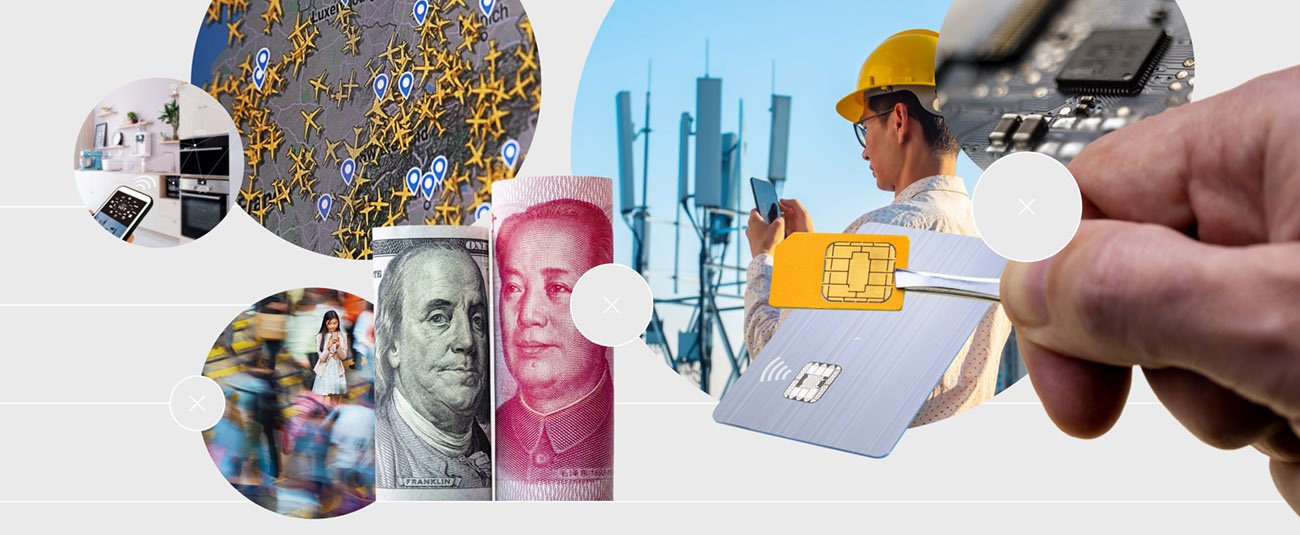 4.2.1Science diplomacy for effective multilateralismA key goal for science diplomacy is to find ways to balance competition against strategic cooperation. Science diplomacy has traditionally... more | 5-year horizonNational bodies call for action over resources held in commonAs nations seek to shorten supply lines and strengthen trade links, new regional interest blocs emerge. This changes balances of geopolitical power and how international science projects are established, as science resource sharing and collaborations mirror economic patterns. Studies of large parts of oceans protected from exploitation — Marine Protection Areas — provide evidence that international action can bring about significant beneficial change to global commons. Tensions between the US, Russia and China over Arctic resources grow more intense and prove rich territory for science diplomacy to prove its worth. | 10-year horizonLunar exploration brings science diplomacy challengesThe US, India, China, Europe, Japan, Israel and others launch missions that include exploration and exploitation of lunar resources. These missions increase the profile of the Moon in public debate and highlight the necessity and importance of science diplomacy to tackle the issues these activities raise. The importance of regional interest blocs increases, with numerous developing economies — especially in Africa and Latin America — playing significant roles in global science diplomacy. Non-governmental actors develop greater influence on national strategies and become a significant factor in science diplomacy. IPCC-like bodies emerge for a variety of scientific areas such as biodiversity, space exploration and infectious disease control. | 25-year horizonTrained experts in science diplomacy begin to steer policyScience and diplomacy-savvy professionals begin to reach positions of influence in their respective careers, fields and countries. The task of balancing national interests against multilateral interests remains challenging. |
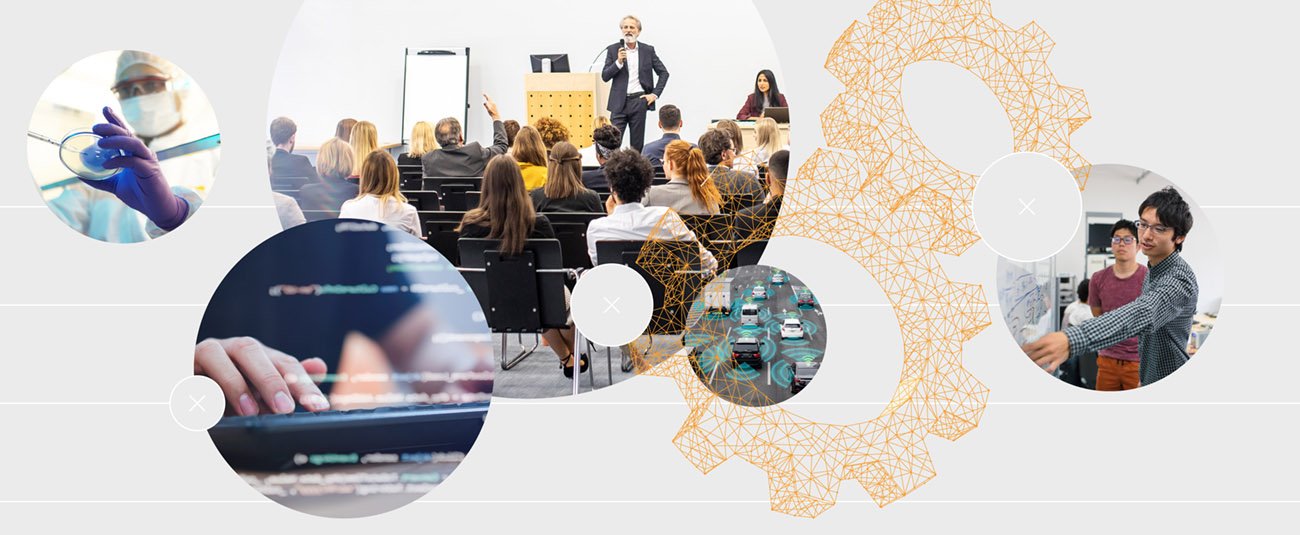 4.2.2Technology Diplomacy and the role of non-state actorsToday, it is well-known and widely accepted that transnational companies, and industry associations have significant diplomatic influence on policy, pushing... more | 5-year horizonScience diplomacy and technology platforms shape each otherThe industrial and societal sector begins to influence science diplomacy in areas such as access to space and with respect to the lunar environment. Technology firms invest further in “ambassadors” who exist to seek ever-greater influence in transnational organisations such as the UN. Research in technology diplomacy achieves deeper elucidation of the issues where national security clashes with corporate freedoms. | 10-year horizonMulti-stakeholder science diplomacy becomes the normScience diplomacy efforts involve actors from city, state and regional governance as well as multinational companies, global science organisations and civic groups. IPCC-like organisations with transnational responsibilities and influence are significant powers in the science diplomacy arena. | 25-year horizonPrivate sector actors are integrated in governanceNew ways of achieving governance and agreement on exploitation of deep-sea, orbital and mineral resources for manufacturing are pioneered by private sector actors. City and regional planners and policymakers routinely seek advice from private company representatives and researchers working outside of academia. |
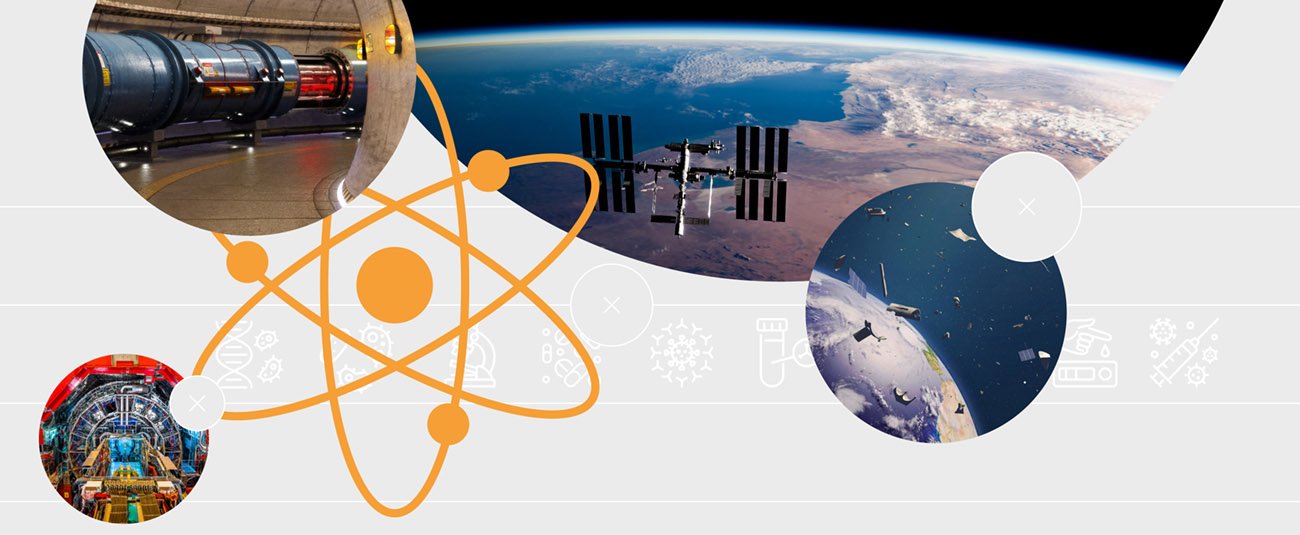 4.2.3Science Diplomacy and emerging economiesScience diplomacy has long played a part in maintaining good relations between economic world powers. In recent years, CERN has... more | 5-year horizonEmerging economies invest in science diplomacy trainingUniversities and institutes work with emerging economy nations to train numerous science diplomacy practitioners in these countries. The emerging generation of science diplomats has increased focus on social justice and its consequences. Innovative immersive pairing schemes between politicians, engineers and scientists foster the mutual transfer of skill sets in a broad range of countries, establish science diplomacy as a regional endeavour and give a greater role to indigenous peoples. | 10-year horizonTrained science diplomats are spread through relevant organisationsThe scale of global challenges linked to technology and involving a wide range of actors from around the globe, beg require greater global focus and cooperation. Graduates from science diplomacy-focused training courses, skilled in the languages of science and diplomacy, become increasingly influential actors in state and non-state organisations, and amongst leaders in science. The reciprocal benefits of research between disciplines, nations and peoples becomes an increasingly important part of science, and funding becomes dependent on establishing such mutual gains. | 25-year horizonEmerging economies gain increasing influence over Big ScienceThe slowly-growing influence of science diplomacy results in improved transparency and openness of international road maps, and scientists and science leaders who acknowledge their influence and obligations, and engage with science diplomacy efforts. Large-scale science projects that involve co-operation between countries of different economic status are established thanks to complex, multi-layered negotiations between many state and non-state actors. Much of the progress is thanks to training initiatives where key groups of experts, from a diverse range of nations, are encouraged to develop skills spanning diplomacy and science. |
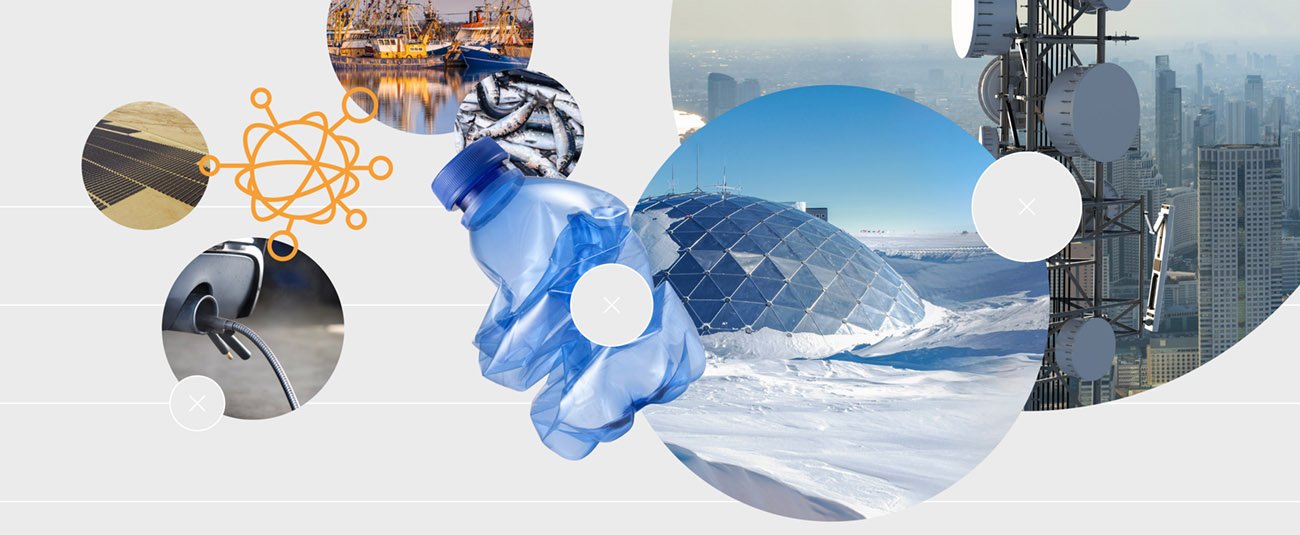 4.2.4Science diplomacy as a response to conflict- and inequality-driven tensionsOne of the significant opportunities for those in the science diplomacy sphere is the role they can play in areas... more | 5-year horizonScience diplomacy assists in re-establishing research in conflict-affected regionsResearchers dispersed by conflict are brought on board with projects at their temporary location, establishing international professional links that will help create future collaborations. The scientific diaspora will play a key role in these reconnections. Science diplomacy helps create projects and plans that contribute to peacekeeping efforts, inter-group negotiations and maintenance of stability. | 10-year horizonScience facilities opened up to scientists displaced by conflictResearchers working in former conflict zones (particularly in developing economies) are given access to Big Science facilities, virtually and in-person, as a result of science diplomacy work to re-establish countries’ peacetime activities. With increased training, individual scientists become more aware of their role in science diplomacy. | 25-year horizonScience diplomacy becomes a “hard tool” for international relationsScience diplomacy is a recognised path for avoiding conflict and establishing peaceful, collaborative and equitable futures. But scientists continue to feel pressure to align with their national government’s policies and ideologies. |
| 4.3Foresight, Prediction and Futures Literacy | |||
|---|---|---|---|
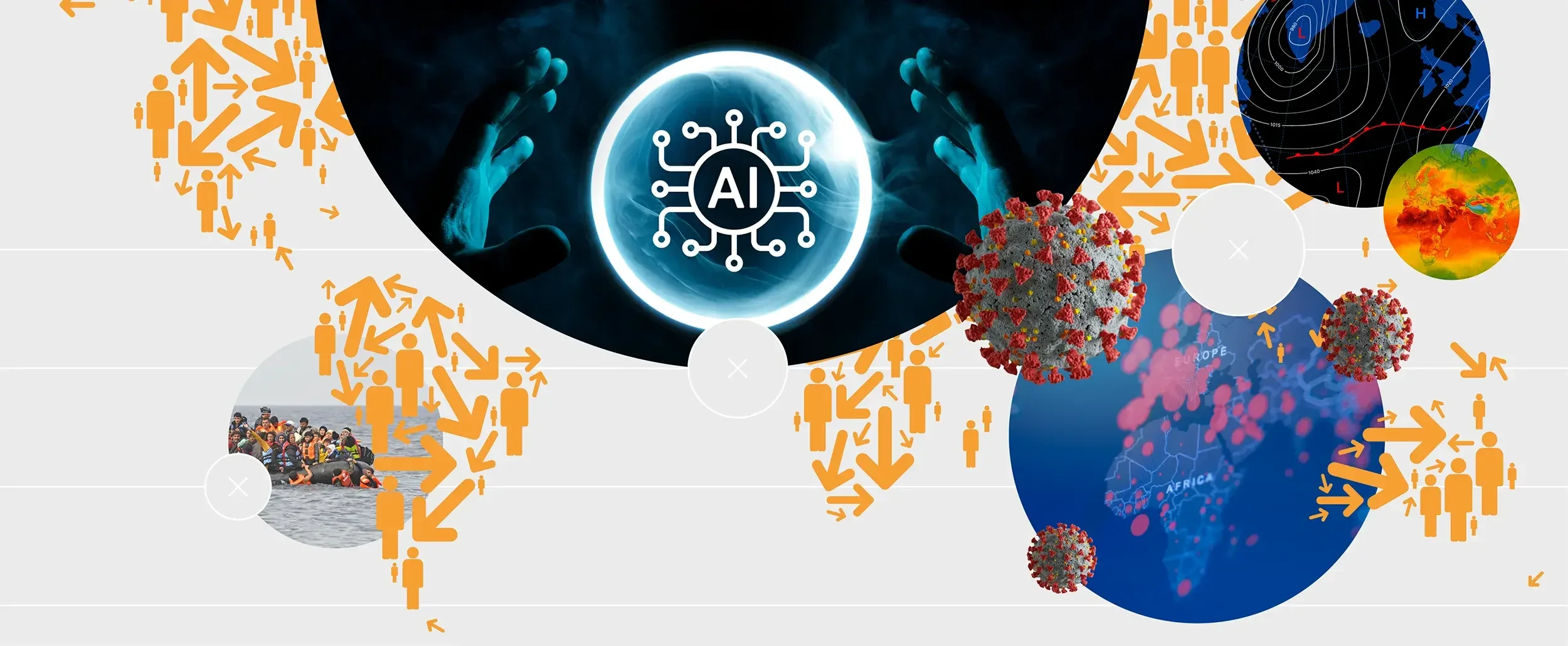 4.3.1Superforecasting and prediction marketsEvidence has mounted in recent years that some individuals are capable of predicting geopolitical events with a success rate that... more | 5-year horizonSuperforecasting training becomes routineThe key cognitive processes underpinning superforecasting are identified, and training people to develop their superforecasting abilities becomes routine. Standardised designs for prediction markets and tournaments emerge. Expert knowledge is productively integrated with superforecasting techniques, with artificial intelligence also becoming used. | 10-year horizonPredictions are increasingly citedRobust evidence emerges for the real-world accuracy forecasters and prediction markets, and their predictions are routinely cited by journalists and policymakers. Work continues to integrate expert evidence and incorporate predictions about extreme risks which break markedly from prevailing trends but lead to major disruption. | 25-year horizonAI assists prediction marketsSuperforecasters, prediction markets and artificial intelligence work together to create forecasts for systems that cannot easily be modelled, over a range of timescales. This approach is as well-established for the political and economic domains as weather forecasting or climate modelling, and used at the highest levels of decision support. |
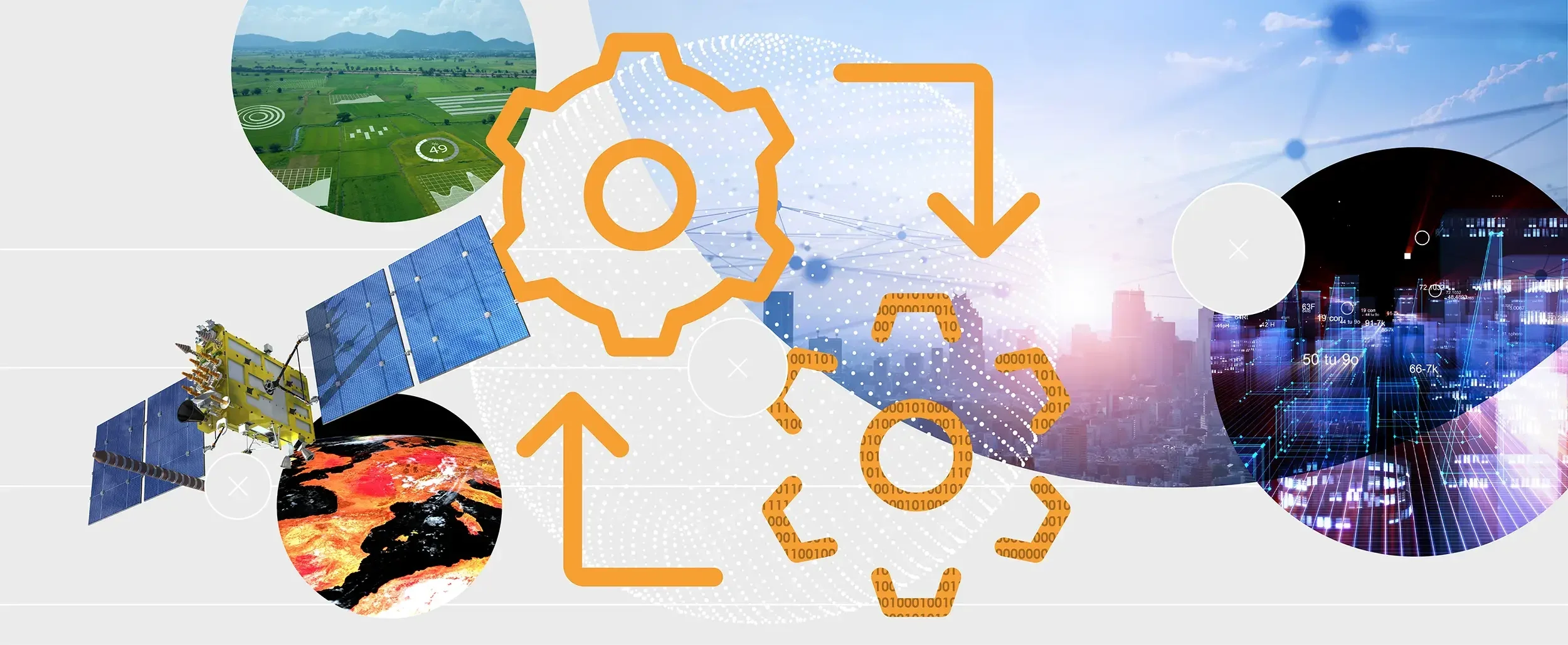 4.3.2 Modelling and simulationHuman societies are embedded in complex “social-ecological systems” (SESs) that are composed of interconnected physical, biological, and socio-economic processes, cycles... more | 5-year horizonModelling techniques become widely usedGreater use is made of digital modelling techniques to assess individual development and infrastructure projects, as well as greater integration with decision-making processes. Research continues into how immersive models can best allow stakeholders to more intuitively yet rigorously understand the context for decision-making, and low-cost, low-risk simulation of different solutions to development and environmental challenges. | 10-year horizonComputational power assists high-resolution modellingHigh-resolution models for physical processes, initially demonstrated for select locations, become both more accurate and more widely available, thanks to increases in computational power and well-categorised and contextualised data. Integrated models of the built environment are created for some urban environments and coupled social-ecological avatars are created for especially tractable and well-studied locales, such as oceanic islands. | 25-year horizonLocal and regional become interconnectedLocal digital twins and avatars that allow predictive management and decision-making at city and island scales join up with regional and global avatars, such as physical climate models that increasingly include biological and social feedbacks. They become interconnected at nested scales, creating a global “intelligent fabric” that can be utilised in politics and diplomacy. |
 4.3.3Scenarios and foresightThere are many domains in which there may be multiple possible outcomes, presenting very different opportunities and risks. These cases... more | 5-year horizonCognitive neuroscience and interaction design inform scenario creationResearch continues into ways to more effectively generate scenarios and communicate their implications and consequences, making greater use of insights from cognitive neuroscience and tools from interaction design. | 10-year horizonSynthetic data assists governance foresightMachine learning and synthetic data are routinely used in governance contexts to create scenarios that challenge the expectations of human participants while also being grounded in real-world evidence. Foresight work remains a largely exploratory exercise. | 25-year horizonMixed reality technology brings scenarios to lifeScenarios are brought to life “on demand” through the use of generative gaming engines and mixed reality, allowing participants to experience different outcomes more intuitively. Foresight work is intended to allow decision-makers to better appreciate the potential consequences of their work. |
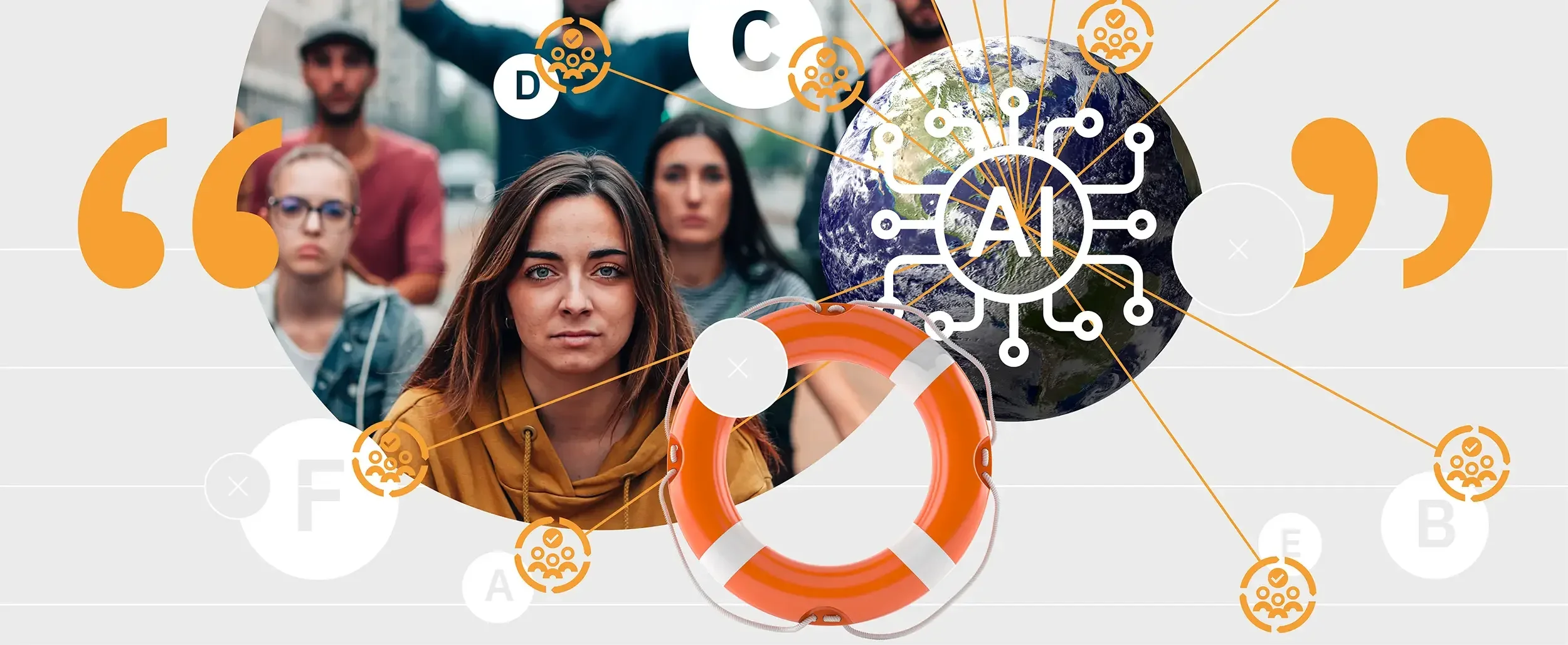 4.3.4Participatory futures and futures literacyTo date, prediction and foresight has typically been commissioned and practiced by states, multinational agencies and large companies, who naturally... more | 5-year horizonCitizens gain futures literacyFutures literacy becomes a core tenet of citizen empowerment, alongside the appointment of policy-makers charged with safeguarding the interests of future generations. | 10-year horizonParticipatory futures activities become routineSystems are developed which allow mass engagement with participatory futures activity to be conducted routinely, rather as opinion polls are today | 25-year horizonConstitutions mandate participatory futures activityThe results of participatory futures activity becomes legally binding in certain jurisdictions, being written into constitutional procedures for decision-making |
| 4.4Democracy-Affirming Technologies | |||
|---|---|---|---|
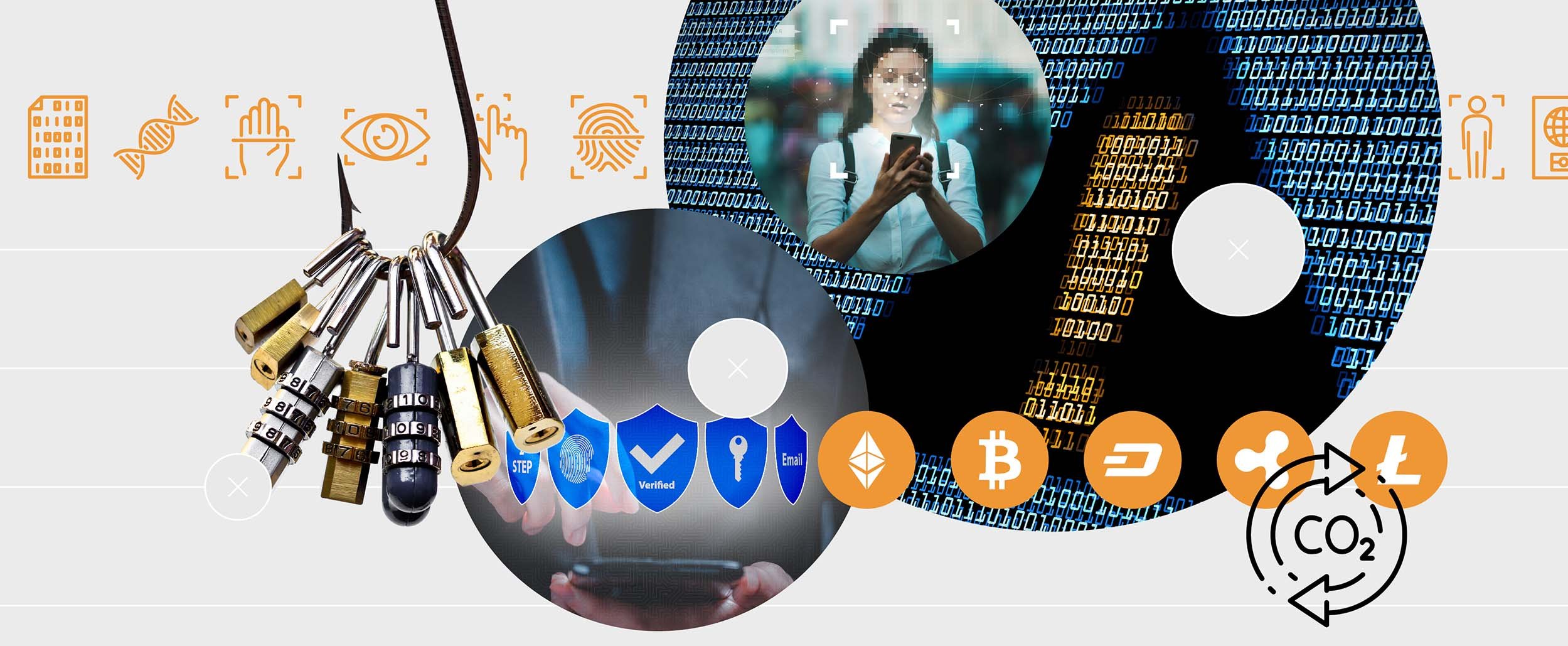 4.4.1Verification technologiesThe difference between information from trusted sources and malicious actors is becoming increasingly difficult to spot. This is due, in... more | 5-year horizonDigital trust remains elusiveBlockchain is increasingly incorporated into institutional structures to certify provenance of information and to monitor and control access. However, high profile attacks and vulnerabilities in nation-state digital identity systems continue to undermine trust in these systems. Biometric data is increasingly secured with post-quantum cryptographic techniques to protect it against sophisticated attacks from quantum computers. | 10-year horizonSecure systems flourishOpen digital economies and well-secured digital healthcare systems evolve into fully fledged digital worlds in both democratic and autocratic societies. Data leakage from improperly secured digital identity systems undermines public confidence in biometric security in some parts of the world. Knock-on effects include a drop in international visitors to these countries for fear that tourists' biometric data will leak. Concerns over data security, data privacy and digital human rights becomes a key battleground for campaigners. | 25-year horizonCryptocurrencies become mainstreamCarbon neutral blockchain technologies allow cryptocurrencies to gain broad support and state backing in some parts of the world. The ability of AI systems to mimic real humans, down to the level of biometric detail, raises important questions about the nature of digital identity and how it can be verified in future. |
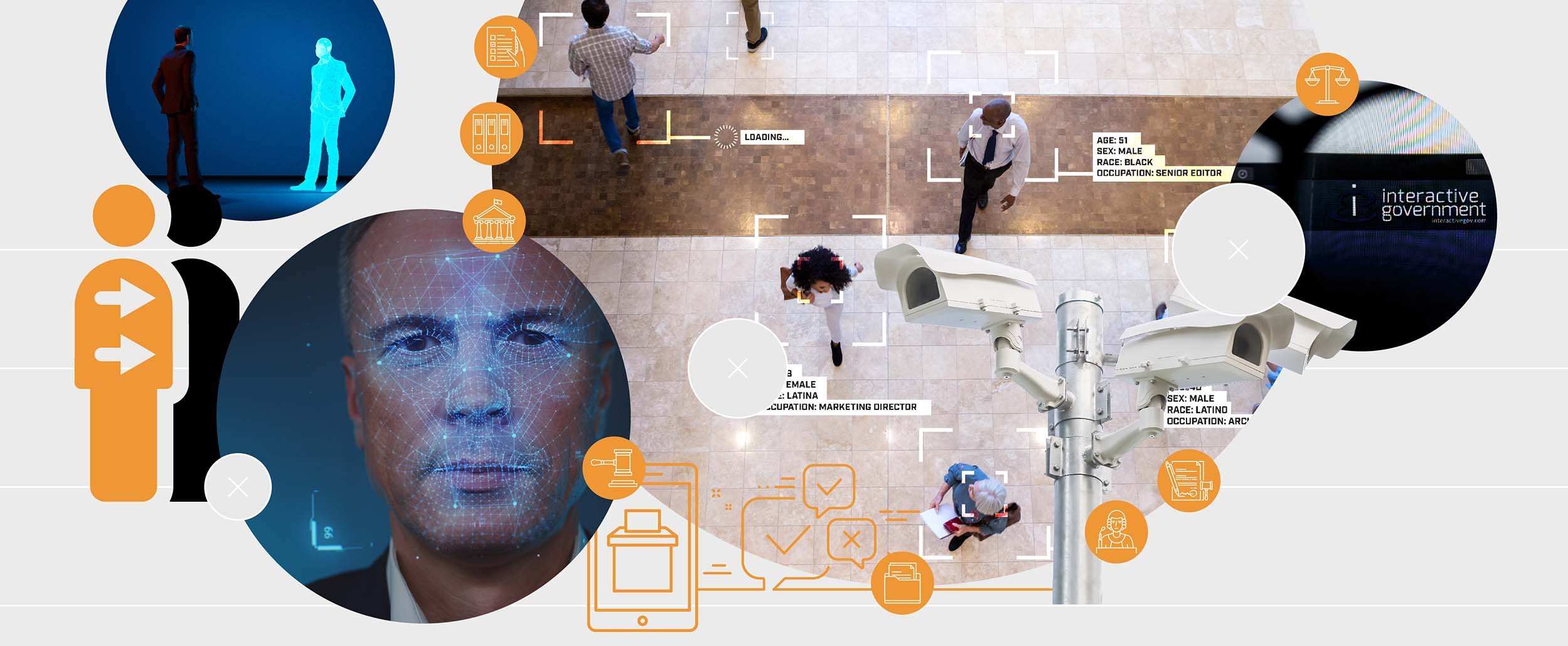 4.4.2Digital identity and trustAs people's lives move increasingly online, they become more concerned with the nature of their digital identities. Among the central... more | 5-year horizonDigital identity issues come to the foreThe demands for transparency and accountability on digital identity platforms ensure that the issue of digital identity becomes a central issue in many countries. | 10-year horizonAccess to blockchain divides regionsWhere secured by blockchain technologies, digital identities begin to strengthen many democratic institutions, pushing public trust to an all-time high. However, many regions rely on less secure technology which undermines public trust and enables autocratic regimes to flourish. | 25-year horizonIdentity thieves target AI-enhanced humansHumans augmented with AI capabilities become a powerful sector of society, leading to a growth in attempts to steal or clone their identities. |
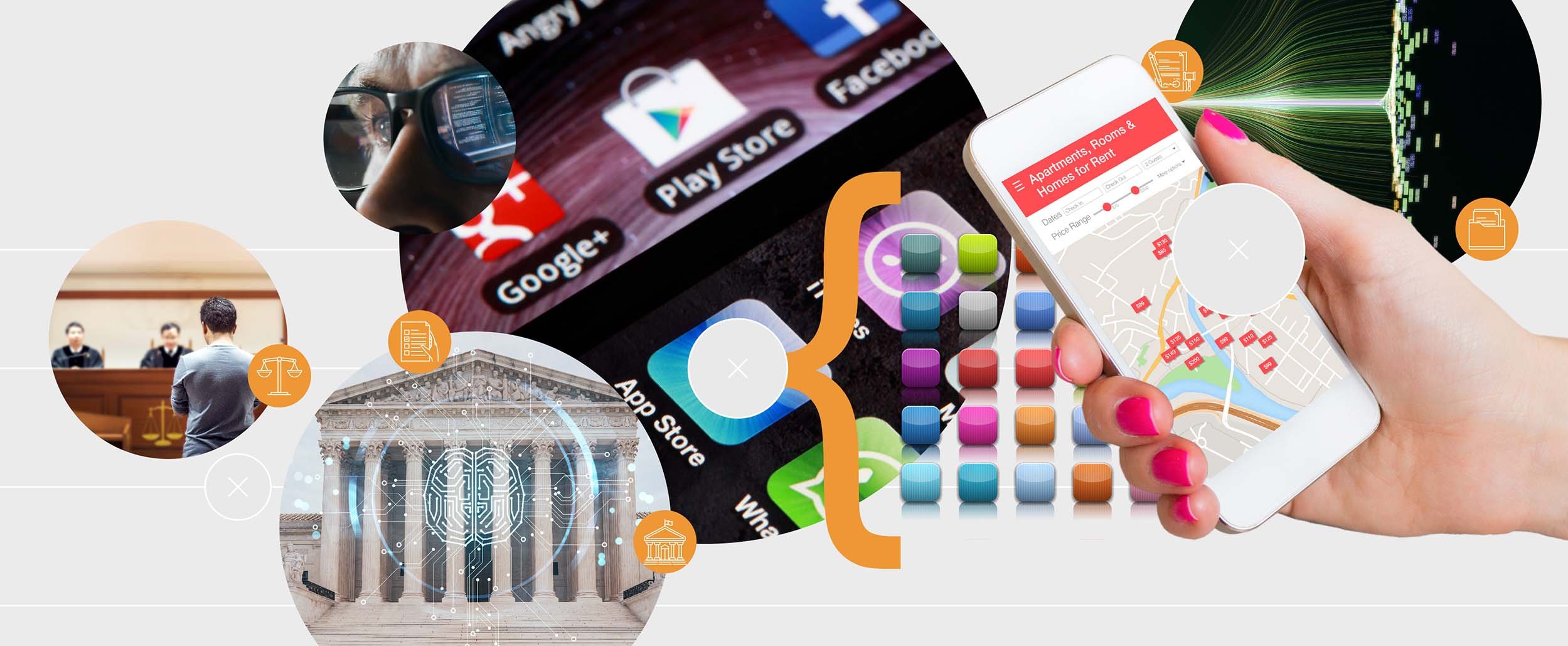 4.4.3Privatisation of governanceAs private sector actors play a larger role in society, their modes of operation are having a bigger impact on... more | 5-year horizonConcerns for democracy growPublic disquiet forces law-makers to examine the role of private sector actors in regulating aspects of society, and how to make this situation more democratic. | 10-year horizonAI becomes standard legal toolAI systems become standard tools in the legal system as a number of high-profile legal cases make their advantages clear. Defendants in complex cases begin to successfully defend themselves using AI counsellors for advice. | 25-year horizonDemocratic systems make use of AIAI becomes an indispensable tool for local government and civil servants, who use it to optimise the distribution of scarce resources in their communities, making it a vital and influential tool for effective democracy. |
 4.4.4Censorship circumvention and content moderationDigital communication technologies have allowed unprecedented innovation and development in communication, information access and content creation. more | 5-year horizonPost-quantum encryption rolls outAs quantum computers threaten to become powerful enough to break conventional encryption approaches, post-quantum encryption techniques become more widely used, securing public trust in communication systems and commerce/finance platforms. | 10-year horizonPrivacy tools evolveAttacks by autocratic regimes against anonymous communications networks such as Tor become significantly more sophisticated as a combination of other surveillance techniques are used to discover when and where Tor is being used. | 25-year horizonTechnology enables authoritarianismThe way surveillance technology, combined with AI techniques, has moved the whole world in an authoritarian direction becomes increasingly clear. This triggers a widespread backlash and demand for greater openness and better oversight on how this technology is used. |
| 5.1Complex Systems Science | |||
|---|---|---|---|
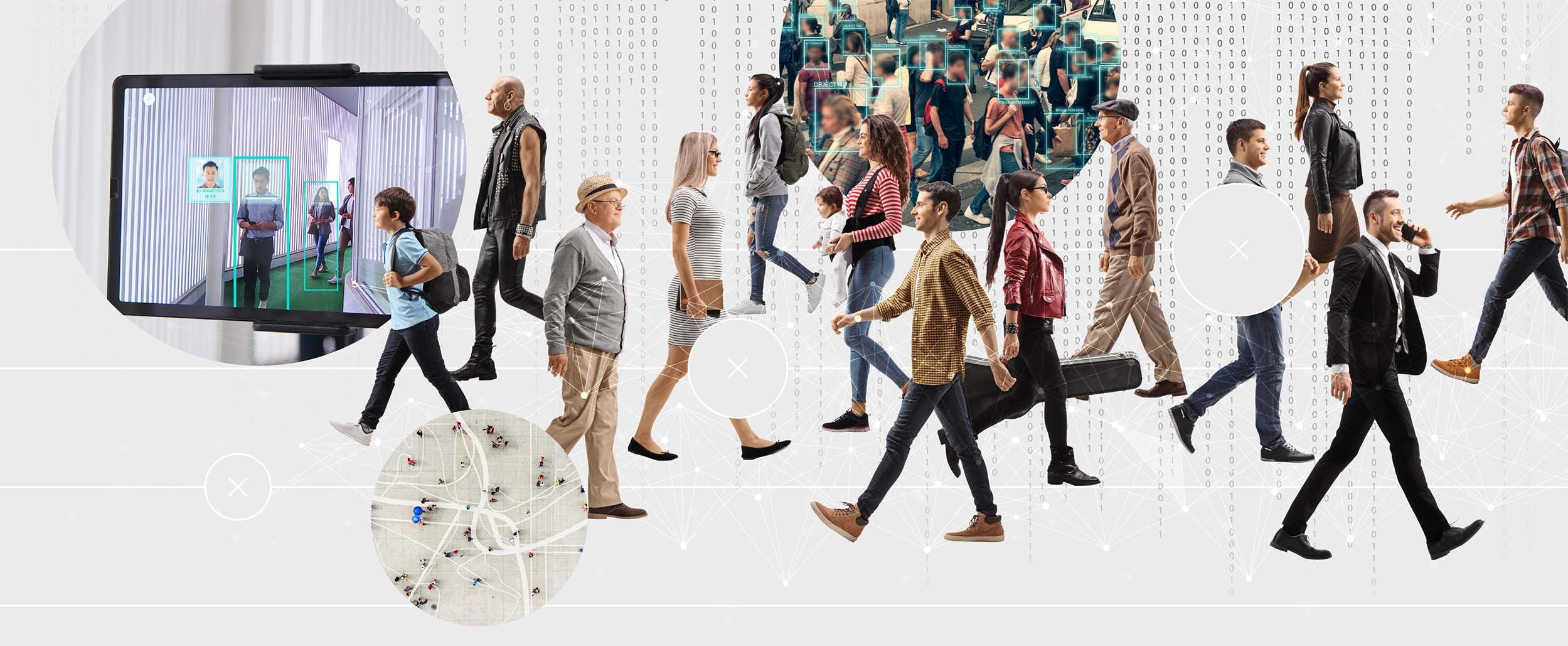 5.1.1Computational Social ScienceSocial science explores the relationships among individuals within societies and the forces that influence them. For this reason, it has... more | 5-year horizonData-collection protocols are agreedThe creation of an international forum for computational social science leads to broad agreement between academia, industry and government on the ethics of data collection and data use. This leads to greater collaboration. Grass roots data privacy organisations play a key role in these discussions. | 10-year horizonModelling finds increasing successModels of certain classes of techno-socio-economic-environmental phenomena become increasingly used by diverse stakeholders and civil society initiatives to explore potential outcomes of a large variety of applications. | 25-year horizonTested outcomes guide social interventionsComputational models of complex techno-socio-economic-environmental systems that simulate networks and interactions become progressively more capable. These models lead to a number of innovative approaches to manage complex dynamical systems that prove the power of the suggested approach, e.g. to improve sustainability and resilience or mitigate the spread and impact of diseases. |
 5.1.2Digital DemocracyOne of the challenges for democracy is to engage the widest range of people in its practice and activity. Digital... more | 5-year horizonDigital tools become commonplace tools in local community projectsSmall-scale institutions such as town councils and community associations increasingly rely on digital tools that gather data from and about communities to decide how to allocate resources, such as for maintaining roads, funding schools and reducing crime. Concerns about late-adopters of digital technologies are given proper consideration. | 10-year horizonDigital-aware politicians gain an advantageMachine learning algorithms trained on the output of digitally-gathered data provide new insights into community priorities. Politicians engaging with these priorities grow in popularity, thereby reinforcing the importance of digital inputs and participatory frameworks. | 25-year horizonAlgorithms become vital tools in the democratic processAdvances in the science of complex systems are combined with digitally-gathered data and increased access to machine learning algorithms. The result is a mechanism that prompts politicians and policymakers towards solving real-world problems collaboratively and measuring the success of actions taken. |
 5.1.3Collaborative behaviourTechnology that enhances collective behaviour clearly has an important role to play in bringing people together, in supporting their collective... more | 5-year horizonModelling of complex systems seeds responsive urban infrastructureCertain areas in global cities become “smart”: they monitor citizen behaviour in a privacy-respecting way and adapt accordingly, such as increasing phone and data capacity for large gatherings, adapting transport timetables and re-deploying resources for street-cleaning. | 10-year horizonFrameworks for ethical research into collective intelligence are agreedAn international forum allows researchers to reach an agreement on a comprehensive set of ethical rules that will govern future large-scale social and collective intelligence experiments. | 25-year horizonComputer models assist transnational collaborationOnline collaborative tools build trust in a way that allows small businesses to span the globe with individuals working towards common goals with others they have not met. |
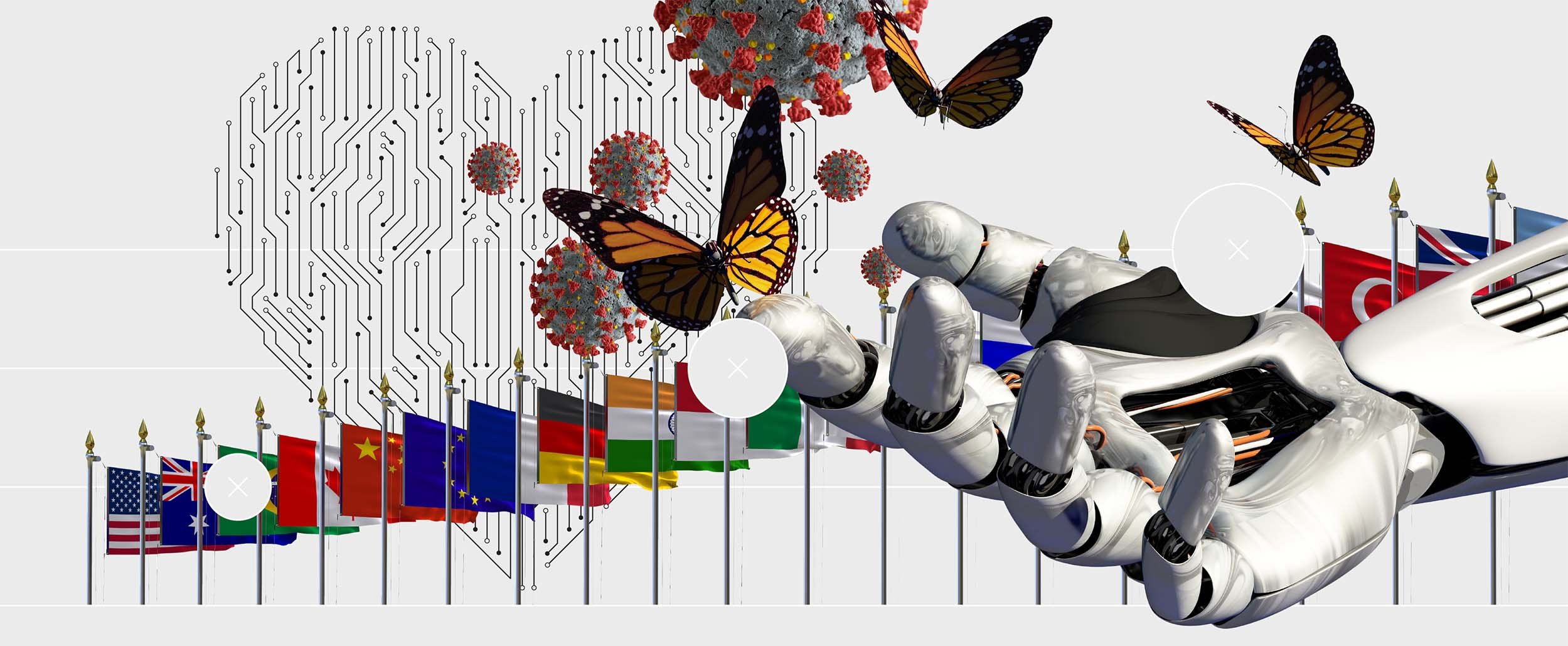 5.1.4Design for ValuesThe design-for-values movement is based on the idea that technology can promote certain values and discourage others.9,10 Desirable values include,... more | 5-year horizonInternational design-for-values efforts demonstrate first successesInternational forums such as the IEEE see their agreed design-for-values standards increasingly adopted by developers of products and services.11 Discussions on the future of artificial intelligence begin to see progress towards designing for values in AI systems. | 10-year horizonAwareness campaigns amplify the interest in design for valuesGrass roots organisations highlight negative issues associated with poorly-designed intelligent machines, such as the development of inappropriate relationships with nature and humans, and between them, including poor quality of information sharing. This drives greater interest in the design-for-values approach. Major institutions of higher education provide courses on design for values, complex dynamical systems and global systems science. | 25-year horizonPolicymakers require design for values as a mandatory part of technology developmentPositive results from various high-profile demonstrations of successful technological design-for-values solutions lead to the formation of a global forum aiming to extend the approach to all intelligent machinery. |
| 5.2Future of Education | |||
|---|---|---|---|
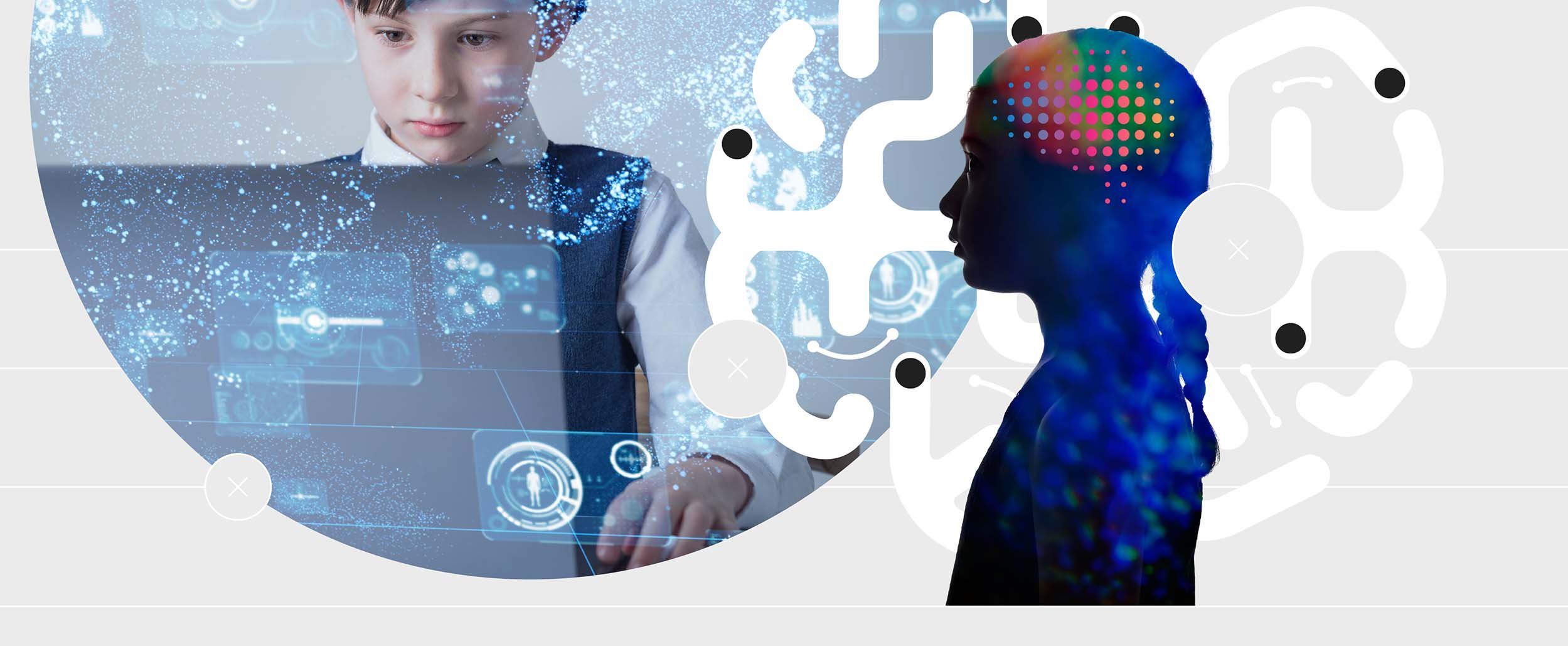 5.2.1Learning AnalyticsIn an age of big data, more use can and should be made of the digital information that is gathered... more | 5-year horizonData-gathering becomes normalisedEducational institutions begin to see the results from data analysis and realise the benefits of increasing their data gathering and analysis. Analysis software becomes affordable and ubiquitous. Open data sharing and analysis platforms democratise the gains made through learning analytics. Digital platforms for teacher-to-teacher collaboration begin to emerge. The availability of data on which to test theories gives teachers the ability to perform “action research”, running their own experiments in their classrooms. | 10-year horizonAnalytics help shape optimal careersStudents leave education with a digital portfolio of their learning journey, equipping them to make insightful next-step choices, and for employers to check aptitudes, skills and cognitive abilities without reliance on a few results from snapshot high-stakes tests. | 25-year horizonSmart tech optimises educational engagementMachine learning algorithms with access to education datasets create and optimise personalised curricula and collaborative practices during progress through education to maximise engagement with and usefulness of educational opportunities. |
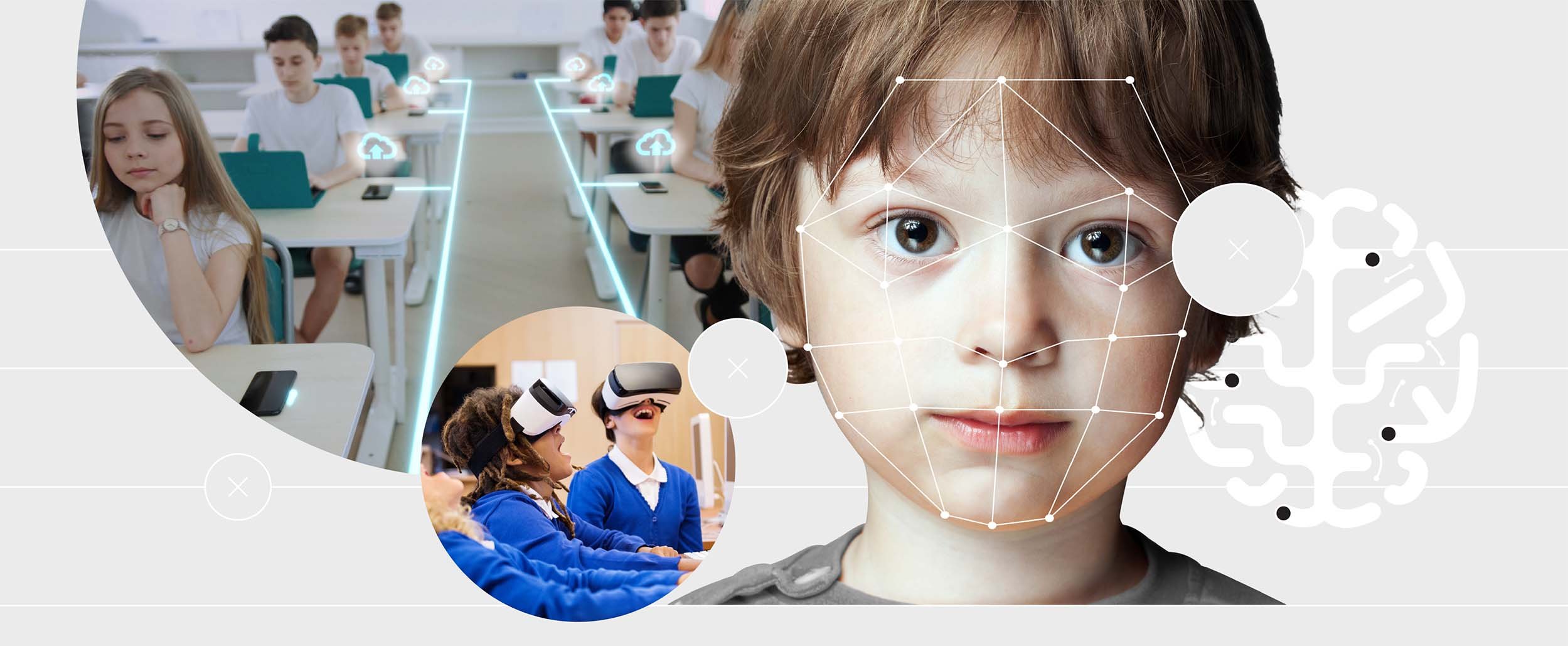 5.2.2Educational SensingWe can now observe and examine learning practices using digital technologies. By gathering and analysing anonymised data using computer-based vision... more | 5-year horizonFrameworks for sensing are establishedData-protection, privacy and ethics standards for sharing data are agreed. New metrics are developed to better understand how best to use information gathered in classrooms. Outcomes of classroom-based research begins to feed into teacher-training programs. Dashboards for students, parents/guardians and teachers lead to better understanding and deeper engagement. | 10-year horizonSensing technology goes mainstreamClassrooms are routinely equipped with sensing technology to observe learning, while AI processes data in real time to offer suggestions for enhanced learning. Behavioural data from body and eye trackers will help fine tune teaching methods and help better understand learner characteristics such as executive function. New sensor technologies emerge that diversify from purely visual and audio input allow greater study of collaboration skills and how they can be learned. | 25-year horizonAI and wearables change the learning experienceWearable technology enables teachers and students to receive real-time feedback, direction and assistance during learning. Machine learning algorithms process learning data and provide tailored learning journeys. |
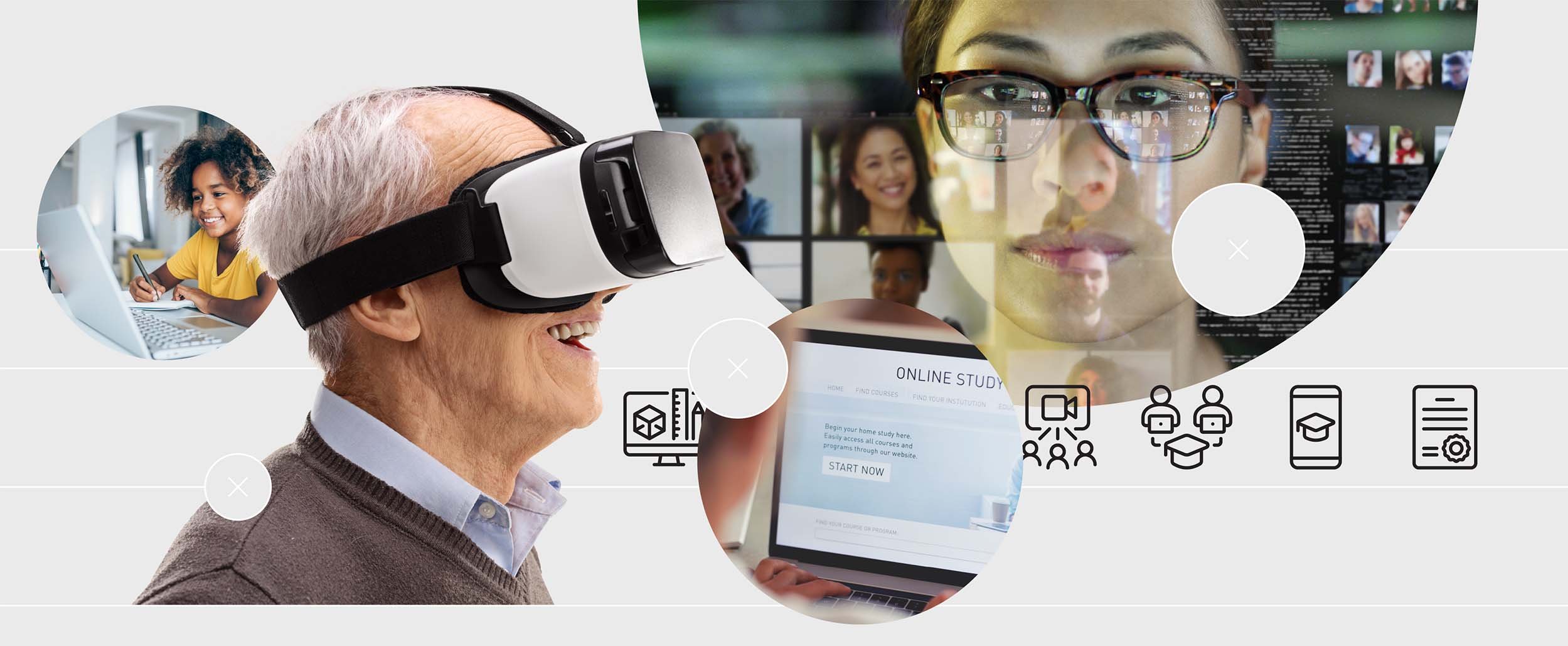 5.2.3Out-of-school LearningTechnological developments have opened new opportunities for lifelong learning, novel learning environments and self-directed education, but it is not yet... more | 5-year horizonOnline education fills Covid gapsEducational establishments, some in partnership with corporations, seek to up-skill and accelerate progress of future students, many of whom have suffered disrupted education due to Covid, by offering free online catch-up/accelerator courses. | 10-year horizonEducational technology becomes a business offeringThe first trillion-dollar teaching technology platform, which includes resources for out-of-school learning, highlights the potential for investors and creates a better environment for EdTech investment generally. Digital twins of schools provide ways to experiment with education strategies. | 25-year horizonInformal learning provides a certified education in some regionsPassing AI-enabled online courses becomes a certified educational achievement. People around the world, especially from disrupted or low-infrastructure nations, begin to achieve degree-level education without formal schooling. |
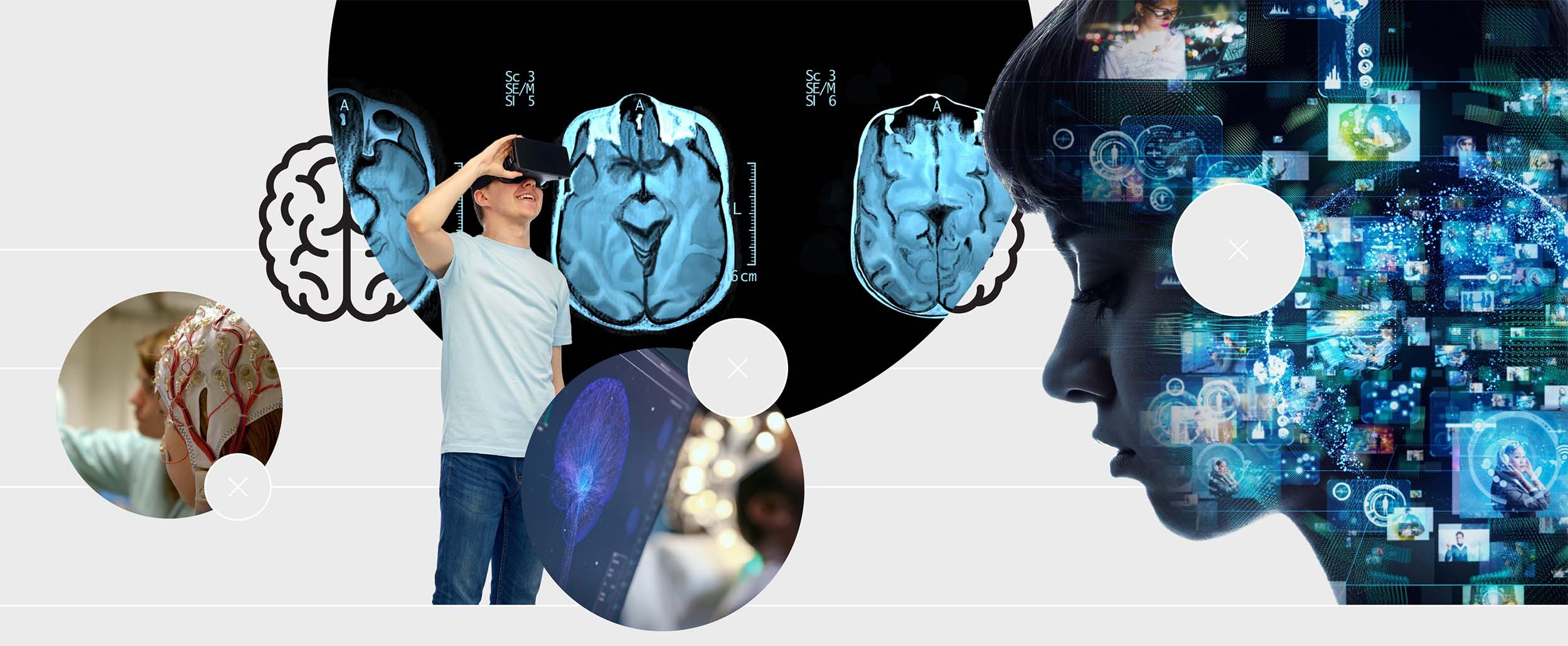 5.2.4Neuroscientific Aspects of LearningAlthough investigations of neuroscience as applied to learning have yet to deliver significant tangible breakthroughs in educational philosophy or practice15,... more | 5-year horizonProgress in basic neuro-learning researchNeuroscientific research begins to tease out the physiological and environmental conditions necessary for optimal learning. | 10-year horizonBrain tech comes of ageImproved brain-sensing and stimulation technologies begin to have a positive impact on establishing focus for learning. | 25-year horizonAugmented reality accelerates educationEnhancement technologies such as brain stimulators, AR and VR headsets, and collaborative virtual environments combine with access to AI-enabled teaching software to accelerate the process of learning. |
| 5.3Future Economics, Trade and Globalisation | |||
|---|---|---|---|
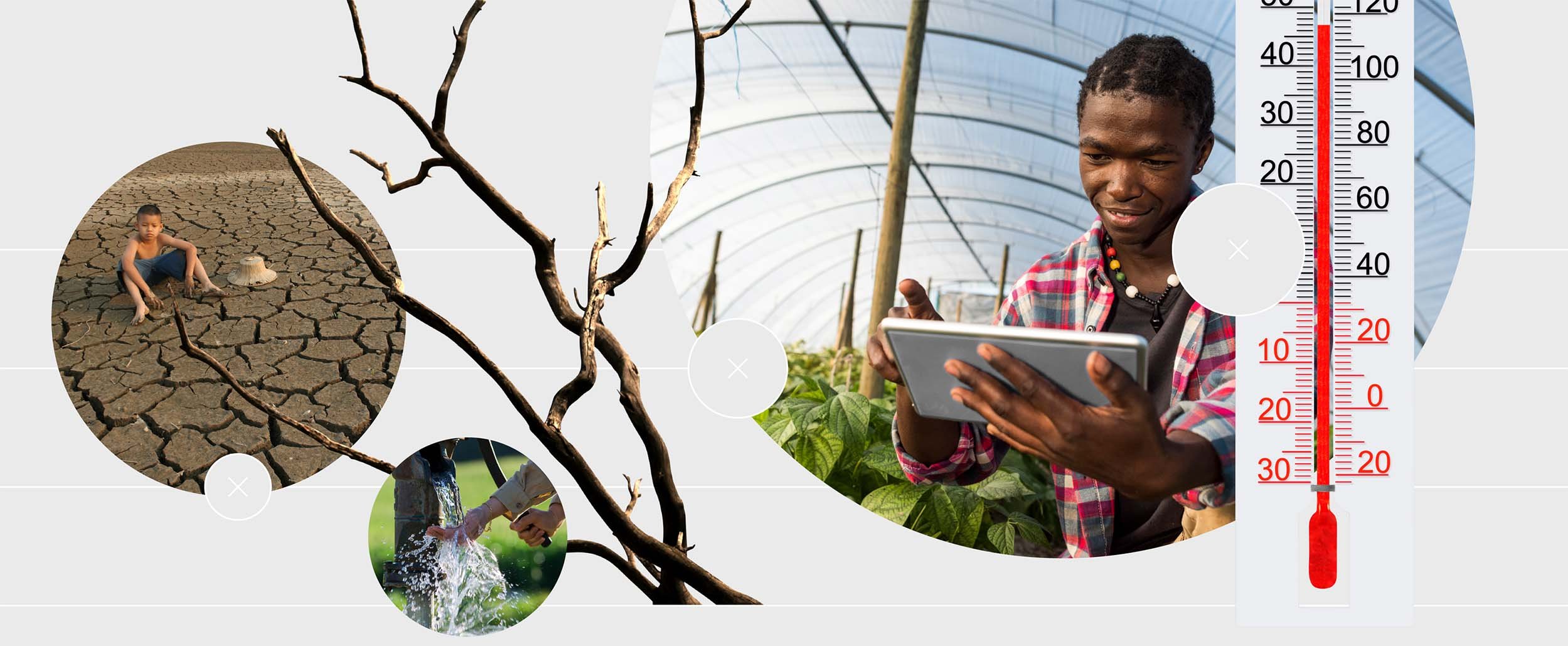 5.3.1Managing Climate ExternalitiesTraditional economic models have already created substantial challenges. Atmospheric levels of carbon dioxide have been rising steadily since the industrial... more | 5-year horizonAn era of progressMedia coverage and public pressure forces governments to accelerate efforts to get to zero emissions before 2050. A growing awareness and experience of the negative consequences of climate change lead to implementation of a global CO2 tax. Circular economy strategies continue to be implemented on key issues such as plastics and waste, if only at a local level. | 10-year horizonFarming requires interventionSome parts of Africa become too hot and too dry to support traditional crops, while efforts to commercialise heat resistant crops have stalled over intellectual property rights and the limited potential for recouping costs. Nevertheless, the success of some genetically modified crops in extreme conditions provides momentum for a global research effort to develop other heat resistant crops. After the success of COVID-19 vaccine development, this work is funded by governments rather than by commercial profit. | 25-year horizonCrisis is avoided through forward thinkingThe global effort to develop heat resistant crops largely prevents mass starvation, migration and civil unrest in countries whose traditional crops have failed due to climate change. The retraining of workers in these economies, funded through global cooperation, means that most families can afford imported food. Despite the increased mortality due to high temperatures, fears of mass migration recede. We are heading towards living within sustainable limits and are on track towards zero carbon emissions in 2050, meeting the Paris agreement. |
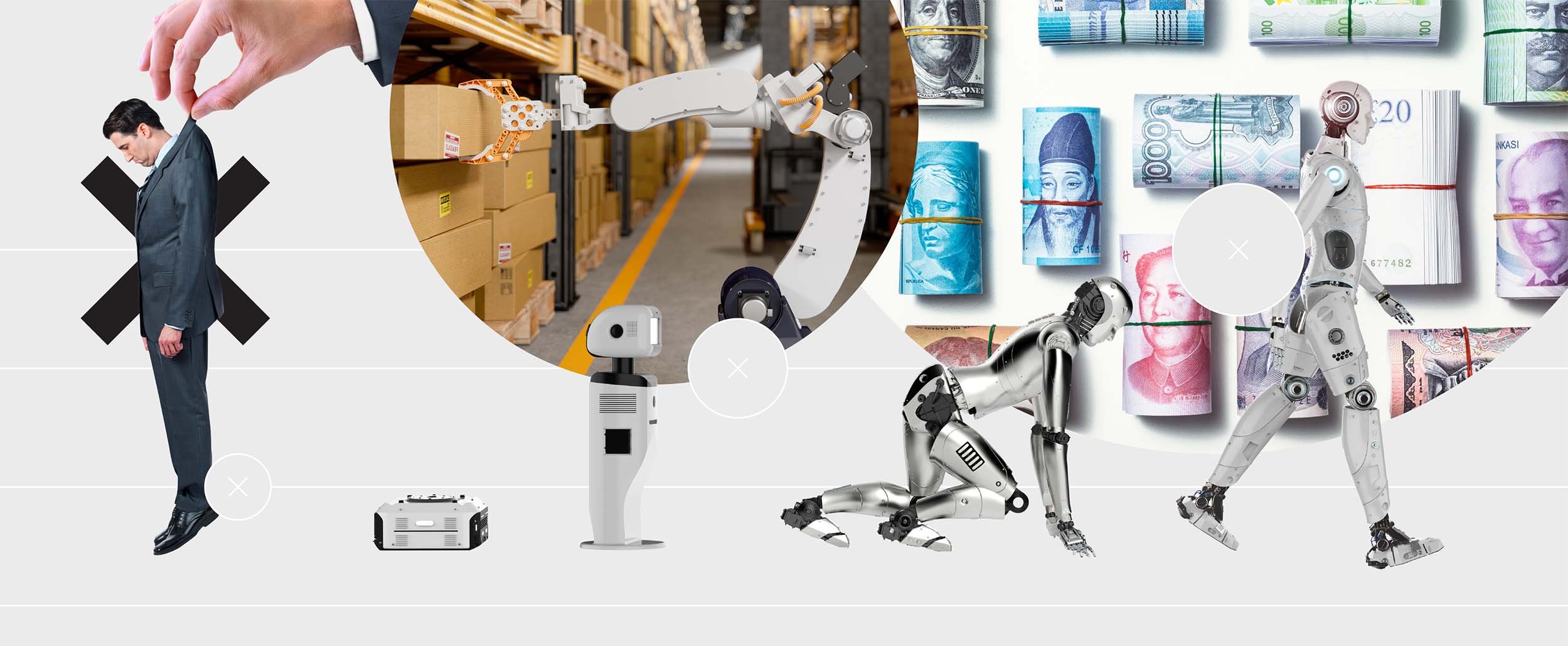 5.3.2Automation and WorkWhen ChatGPT launched in November 2022, 100 million people signed up to use it within two months. Since then, this... more | 5-year horizonMachines perform low-skill workGenerative AI services such as Bard, ChatGPT, Midjourney and others, become routine tools in the workflows of most industries, thanks to their rapid deployment via the globalised companies, such as Microsoft, Google and Facebook. Some human jobs quickly become obsolete but new classes of job also emerge. Nevertheless, the rapid rate of change causes governments to put policies in place that incentivise the employment of human labour and innovation with labour-augmenting technologies. This is supported by a change in taxation in favour of human labour and against capital, which smooths the transition. | 10-year horizonGovernments tax automationThere is significant displacement of jobs because of the coupling of artificial intelligence and robots. Governments implement policies that ensure human capital is not wasted: education and retraining is common, preparing workers and rising generations for a changing workplace. A wide range of economies begin trialling universal basic income paid for by the taxation of capital and automation. | 25-year horizonMachines alter the human experienceThe workplace has changed substantially, with new jobs and tasks in place. People are working significantly less, thanks to the productiveness of machines. Universal basic income allows retraining or support of displaced workers, and allows governments to incentivise the development of technology that enhances human performance rather than replacing it where appropriate. Policy measures place greater emphasis on the social obligations of companies towards their workers and the communities in which they operate to ensure relatively high levels of employment and to avoid growth of social and economic inequalities. |
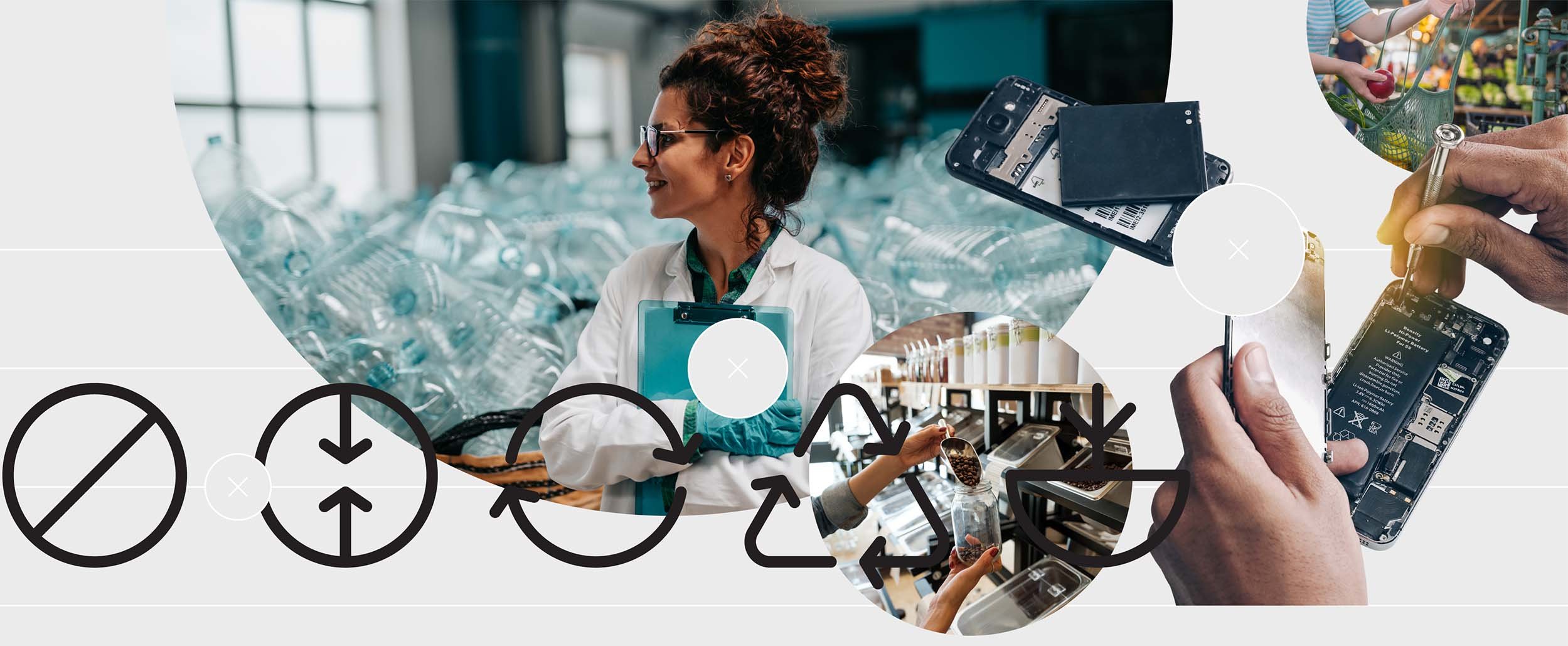 5.3.3Bootstrapping Circular EconomiesA circular economy overcomes the “take, make, waste” of traditional linear economies by attaching costs to the creation of waste... more | 5-year horizonCircularity efforts gain momentum on local scalesCity programmes to increase circularity gain powerful grass roots followings. The right-to-repair movement forces legislation that makes most products repairable, creating a new cottage industry focused in DIY repair. Artificial intelligence helps to identify and react to eventualities that might cause crises or unsustainable practices in the global supply chain. | 10-year horizonThe first entirely closed-loop economic processes appearInternational agreement on material pricing creates the financial incentives that make complete circular economies more viable. The first of these begin to bear fruit. | 25-year horizonCircular economies become more widespreadTruly circular economies appear in some industries on national and regional scales. However, pricing issues still incentivise many linear practices and significant global regulation is needed to bootstrap more circularity. |
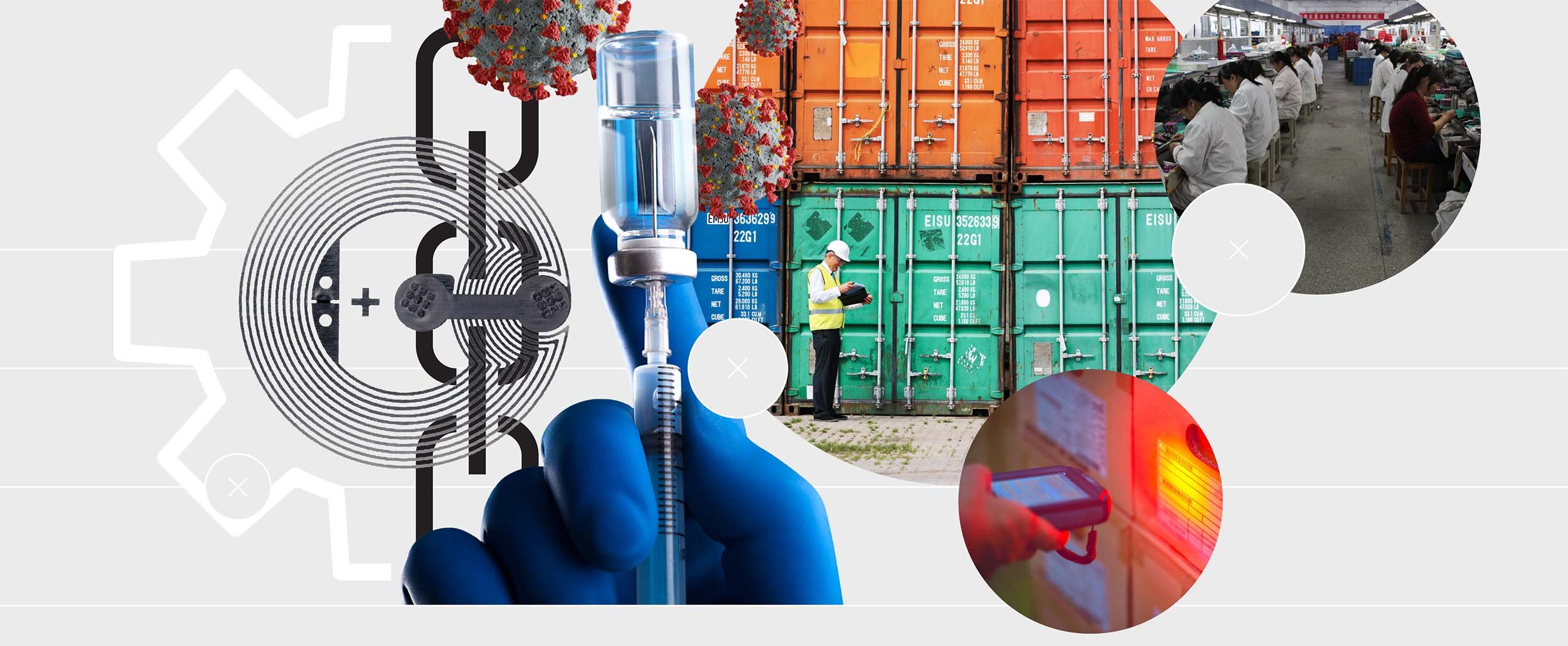 5.3.4Sustainable Global TradeGlobalisation has dramatically changed the nature of trade in the last 25 years. Ensuring this trade is sustainable and resilient... more | 5-year horizonA race for sustainable technologyUS investment in its green economy triggers intense global competition for sustainable technology and increased economic tension. US subsidies for electric cars leads to copycat moves in Europe, China and beyond and the competition accelerates moves towards net-zero. This competition leads to important innovation but also high-profile failures. | 10-year horizonGlobal agreement leads to supply chain stress testsTo ensure continuity of supply in emergencies, an international standard is agreed that measures the resilience of supply chains in a wide variety of simulated disasters. Investment in electric technologies reduce fossil fuel use. | 25-year horizonThe technology of resilience makes supply chains more sustainableThe combination of green industry investment, AI technologies and sustainable supply chains allows numerous countires to achieve net zero. The technology of resilience makes supply chains more sustainable. The tracking technologies for monitoring resilience provide a powerful tool for measuring environmental impacts. This allows the sustainability of supply chains to be assessed reliably on a global scale. They are now powered by renewable energy for both manufacturing and transportation. |
| 5.4The Science of the Origins of Life | |||
|---|---|---|---|
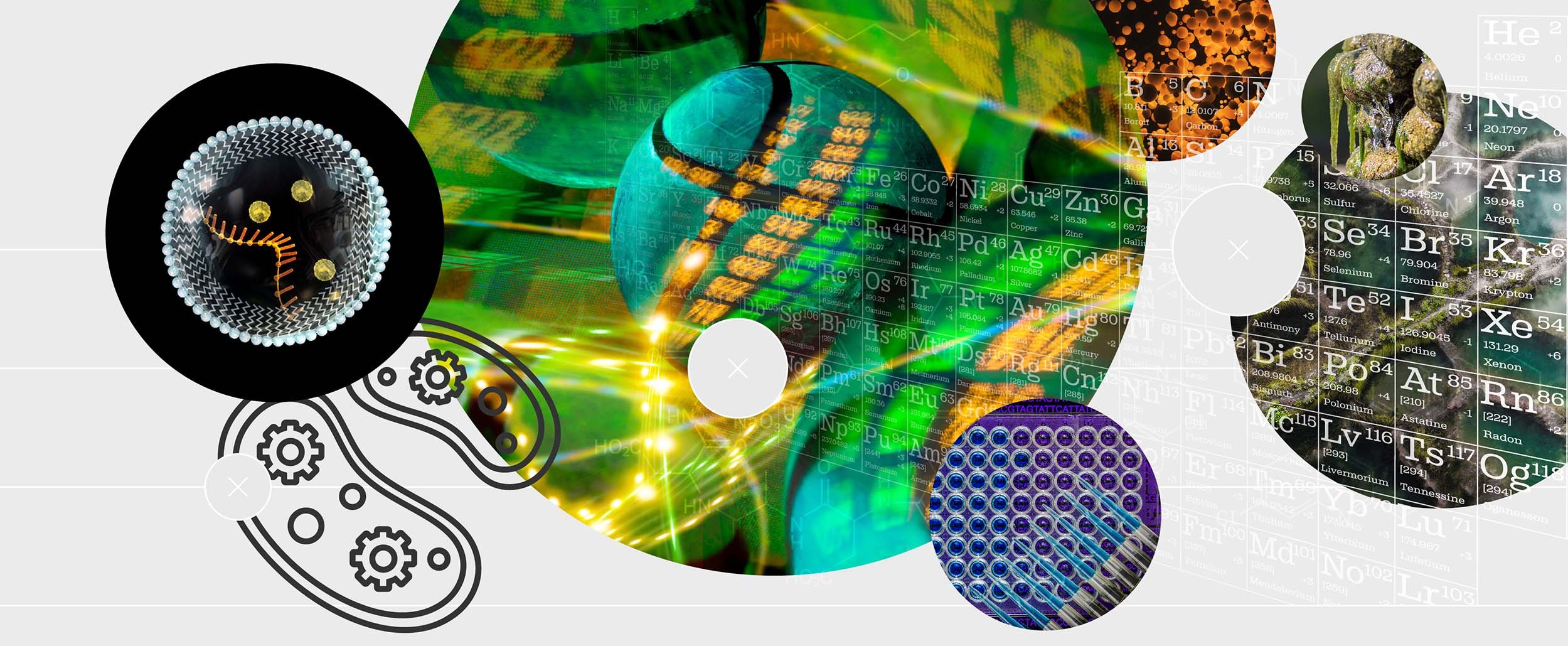 5.4.1Prebiotic chemistryThis field of research aims to make the chemical building blocks of life in a way that is “prebiotically plausible”,... more | 5-year horizonAutomation begins to pay offChemical systems have been developed that display open-ended evolution, i.e. avoiding equilibrium. Increased use of automation and AI allows us to conduct high-throughput experiments. | 10-year horizonChemical computation becomes possible“Protocells” with self-replicating nucleic acid driven by metabolic reaction(s) are created. Laboratory experiments utilising a small array of reactive compounds have the topology and kinetics necessary to carry out basic computational processes via chemical reactions. Network-level descriptions of both living and non-living chemical systems will be used to distil a small number of correlative factors implicated with the expression of “life-like attributes” in those systems. | 25-year horizonPredictions of life-like chemistry becomes possibleWe have systematic comparisons of the prebiotic chemical potential of different geological settings. Naturally-occurring reactive compounds are shown to have the necessary topology and kinetics to permit emergent information processing systems to form as predecessors to living systems. Systems-level descriptions of living entities are sufficiently sophisticated to permit direct predictions of the frequency of occurrence of chemical systems with life-like behaviours, which can in turn be used to infer the probability of life arising spontaneously under generic prescribed conditions. |
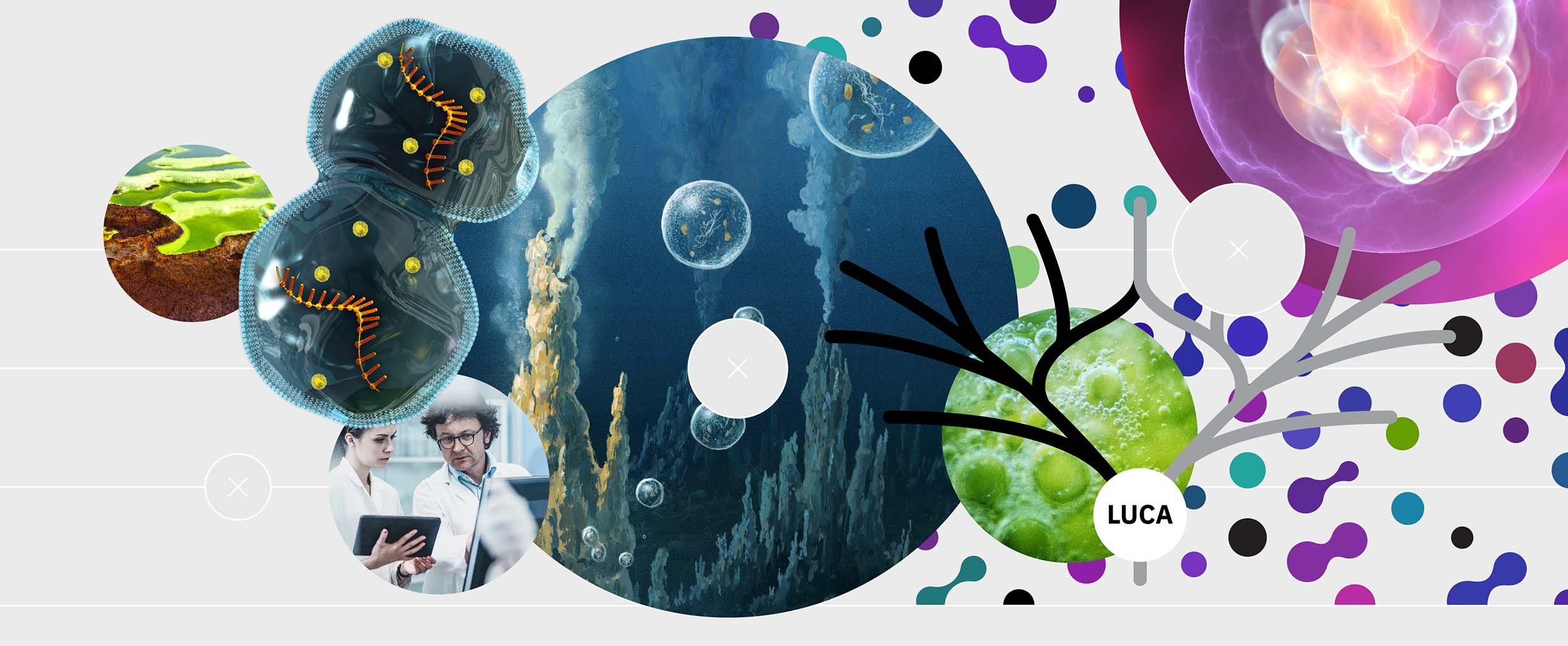 5.4.2Systems biologyThe great challenge of explaining how life originated is to conceive and create simplified versions of living systems that are... more | 5-year horizonEvidence of primordial metabolic processes arisesWe accumulate experimental evidence that metabolic processes could have sprung up on the primordial Earth, in the form of non-enzymatic versions of all major metabolic cycles known to be evolutionarily ancient. | 10-year horizonExtinct biomolecules are reconstructedPalaeoenzymology uses the tools of synthetic biology and phylogenetics to reconstruct “extinct” biomolecules. | 25-year horizonModel of LUCA brings benefitsA model of the Last Universal Common Ancestor (LUCA) based on synthetic biology, phylogenetics and palaeontology, provides useful understanding of life's history. |
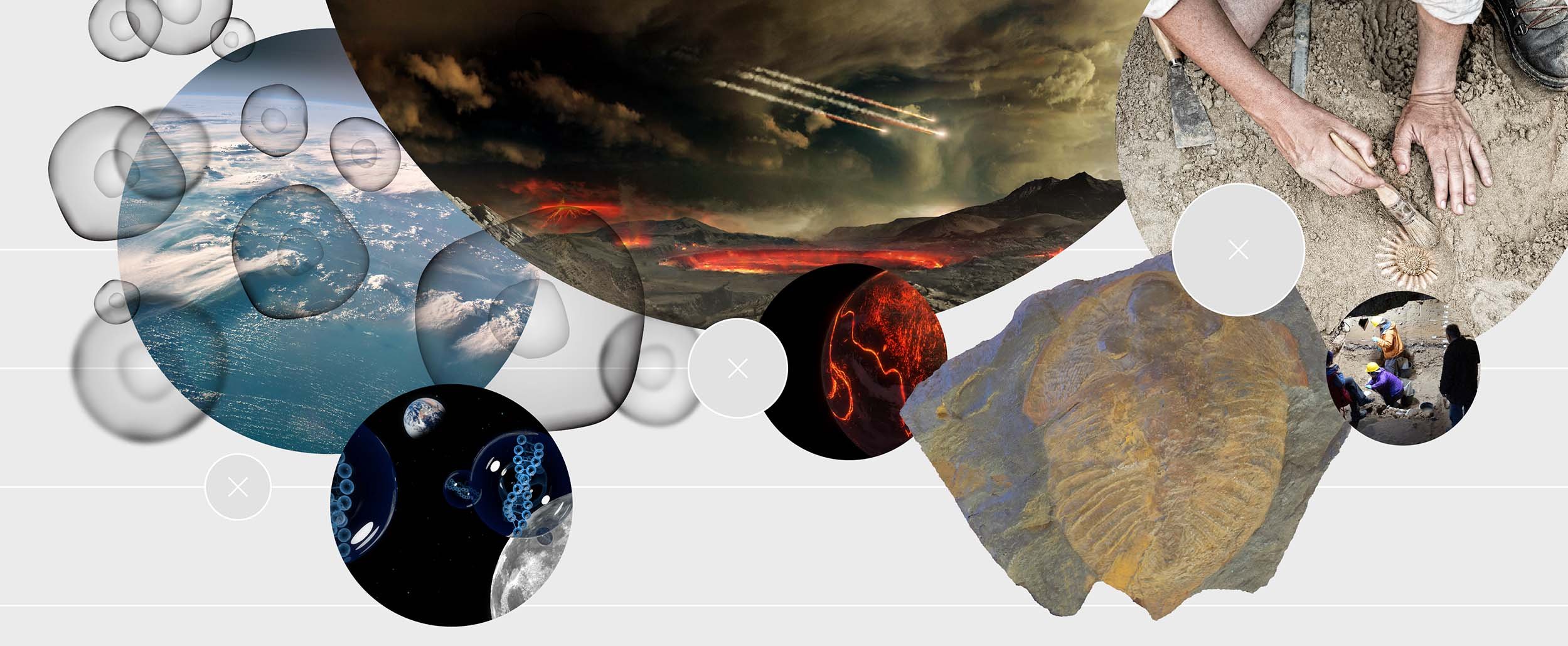 5.4.3The geological recordOur knowledge of the early Earth is a key constraint on hypotheses for the origin of life. The Earth is... more | 5-year horizonCriteria for assessment of evidence for life developedExplicit criteria are developed for the assessment of purported evidence for early life on Earth. | 10-year horizonEarth's formation is better understoodWe have an improved understanding of Earth's formation via study of exoplanets. | 25-year horizonOrigin of Earth's water clarifiedGreater clarity is achieved on the origin of Earth's water and the initial development of oceans and land. |
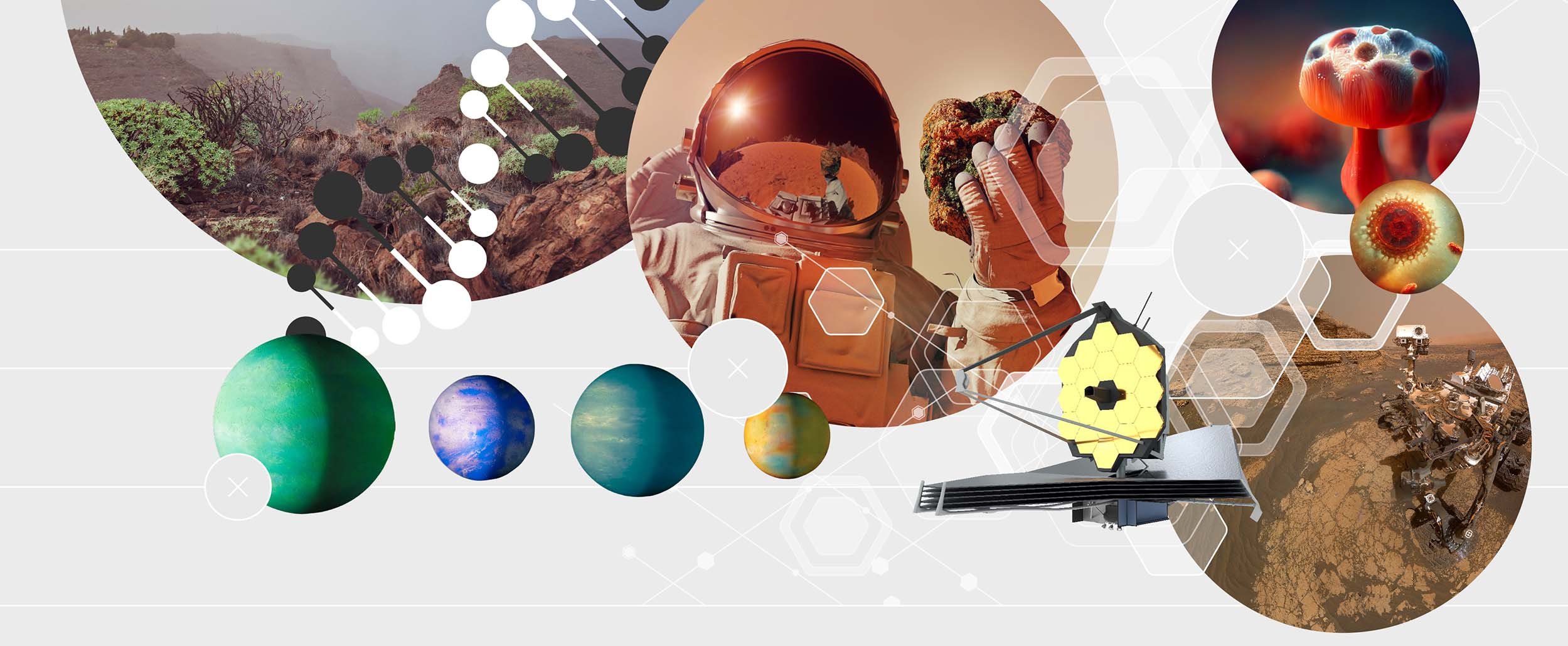 5.4.4ExobiologyThere is currently no good evidence of life or fossil life on other worlds in the solar system, let alone... more | 5-year horizonMars gives clues to Earth-like prebiotic chemistryData from Perseverance rover on Mars indicates Earth-like prebiotic chemistry billions of years ago. | 10-year horizonSolvents for life better understoodWe have good evidence on whether water is the only possible solvent for life. The James Webb Space Telescope has given useful information about the conditions in which terrestrial planets formed, and the abundance of specific organics in these conditions. | 25-year horizonMars sample return plannedExamples of life or fossil life on other worlds are found, helping to expand or clarify our definition of life. A plan for a high-quality sample return mission to Mars is drawn up. |
| 5.5Synthetic Biology | |||
|---|---|---|---|
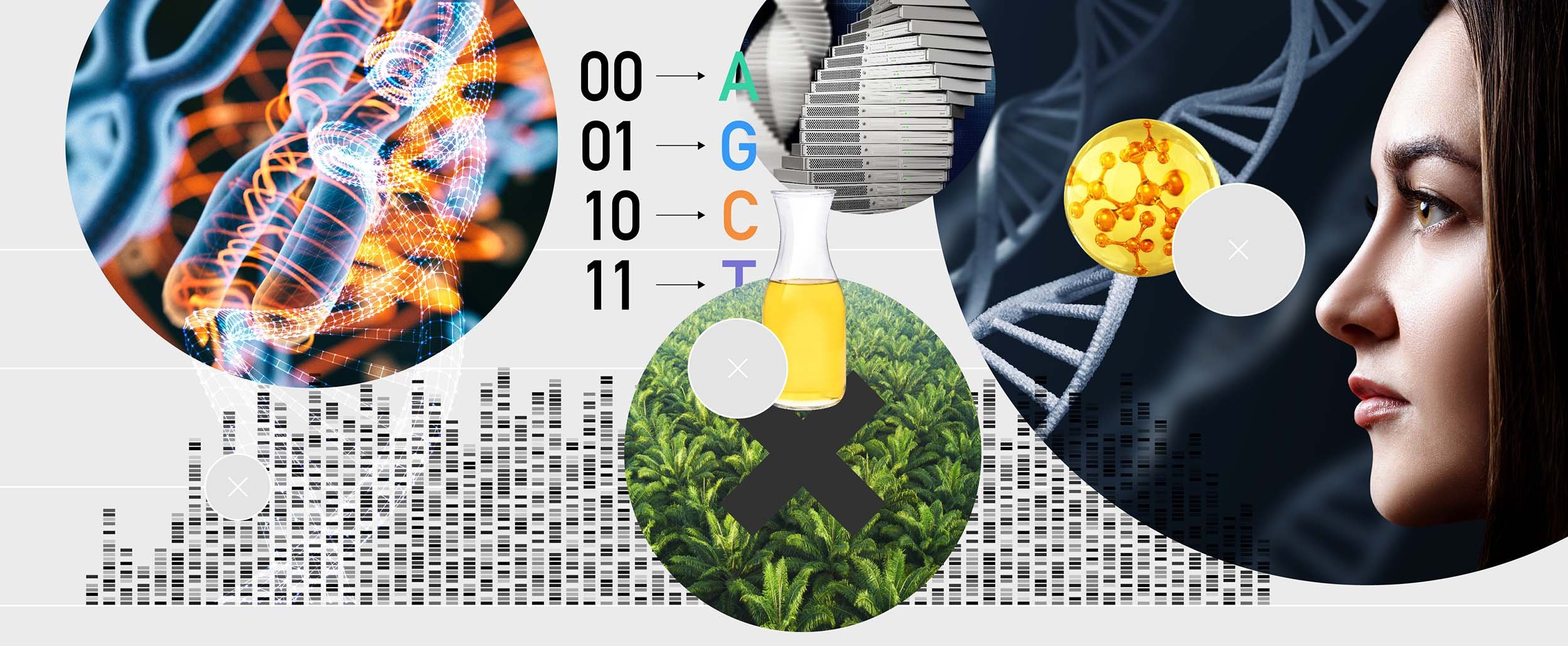 5.5.1Synthetic biomoleculesA key promise of synthetic biology is the manufacture of molecules and materials that do not exist in nature.10 This... more | 5-year horizonDNA information storage becomes mainstreamIt becomes possible to reprogram cells to produce medicine, industrial compounds and induce biodegradation. Storing information in DNA begins to become mainstream. Techniques in synthetic biomolecule engineering bring new anti-ageing and personalised medicine products to the market, and AI helps to identify new biomolecules that are worth attempting to mimic. | 10-year horizonSynthetic food products become availableDNA synthesis becomes 10 to 1000 times cheaper than it is today, opening the door to relatively low-cost microbial genome synthesis. Commercially available synthetic alternatives to naturally-sourced products such as palm oil become available. Acute agricultural needs lead to synthetic biology breakthroughs, such as replacing petrochemical-based fertilisers with chemicals produced by microbes. We begin to use DNA for computation. | 25-year horizonBiofoundries print biomoleculesResearchers develop a standardised shared platform for synthetic biology. Widespread biofoundries are able to "print" any biomolecule on demand; the use of other technologies is guided by artificial intelligence, which identifies the most plausible designs within the massive multidimensional space of possibilities. Urban environments begin to contain "living buildings" that react to internal and external conditions. The first synthetic human genome is produced. |
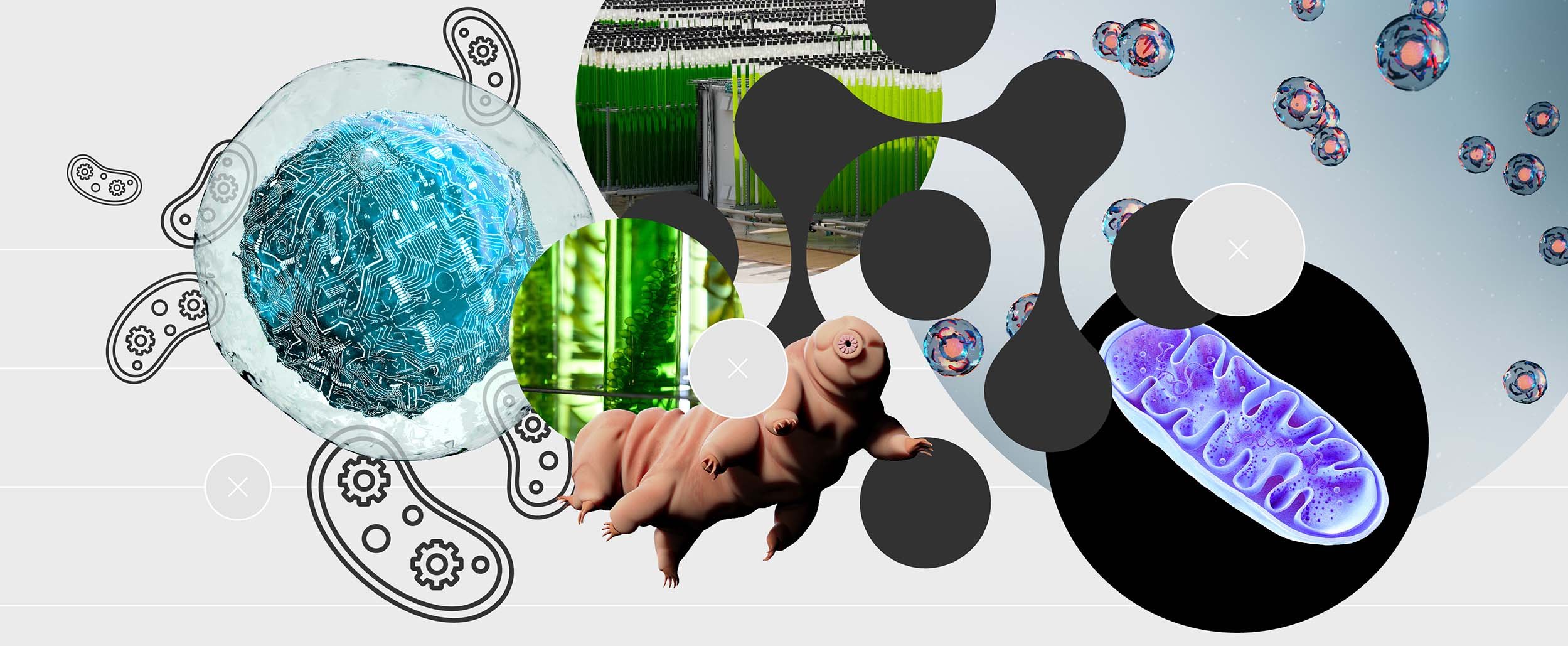 5.5.2Synthetic cellsThe next scale up is engineered single cells, where the end product is the cells themselves.15 In one dramatic example,... more | 5-year horizonAI and molecular electronics aid engineeringAI guides the re-engineering of cellular systems, while applications for commercial molecular electronics --- such as in environmental monitoring --- proliferate, allowing engineered molecules that emit electrical signals in response to environmental cues to be integrated into electronics as novel sensors. | 10-year horizonCell self-assembly becomes possibleIt becomes possible to "boot" an engineered genome to start a process leading to self-assembly in a reproductive cell. Artificial organelles find commercial applications for drug activation and as biochemical reactors. | 25-year horizonArtificial photosynthesis beginsEnergy is generated through artificial photosynthesis, and microorganism-based petrochemical manufacturing platforms become commonplace. In the labs, researchers work with a whole-cell model that can be cheaply tinkered with. The first synthetic extremophiles are sent into space as part of a mission to Mars. |
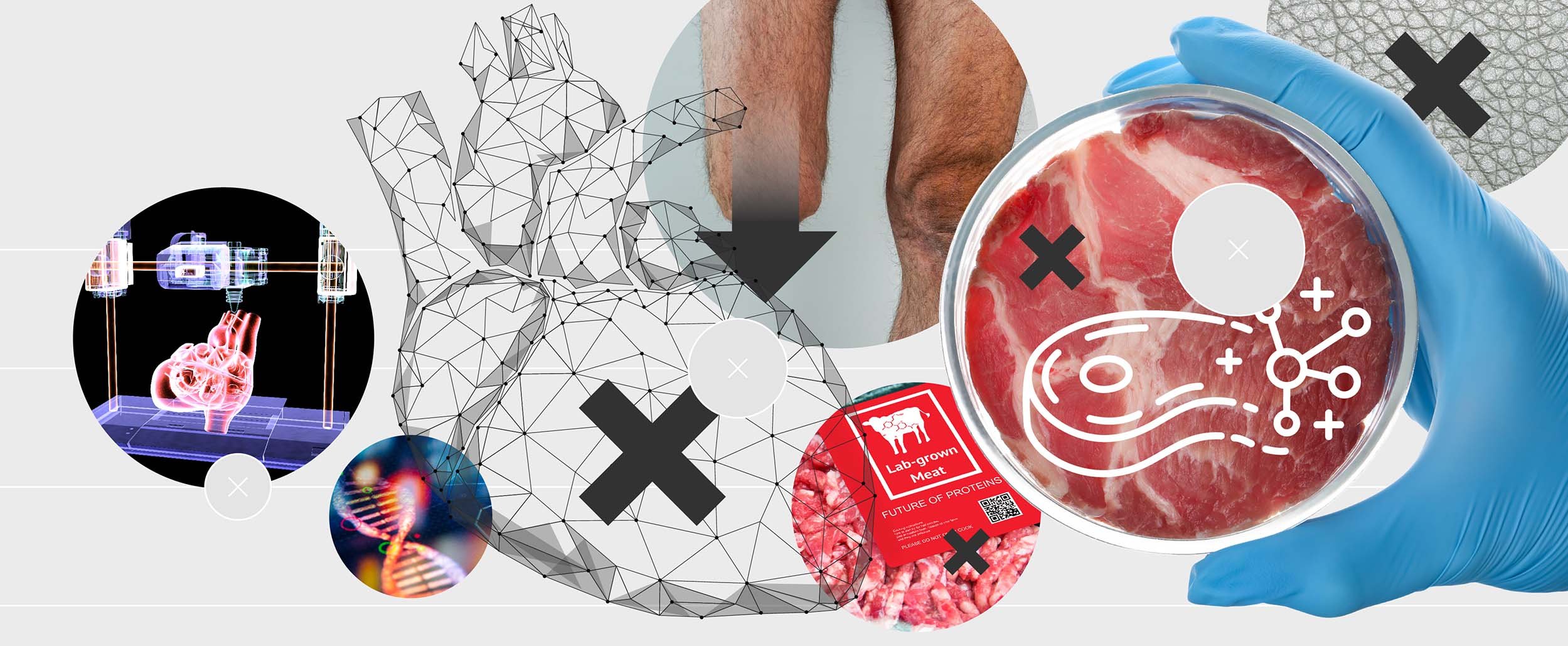 5.5.3Synthetic tissuesSynthetic biology can be used to engineer multiple cells, creating artificial tissues such as muscle and organs.21 more | 5-year horizonHigh-throughput tissue production beginsAutomation, AI-driven standardised protocols and better tissue culture media enable high-throughput tissue production. Artificial meat derived from fungi becomes mainstream in the food marketplace. | 10-year horizonAccelerated evolution becomes possibleManipulation of chromosomes and stem cells accelerates evolution for research purposes, and "microphysical systems" of cells and bioreactors become a ubiquitous research tool. Cultured steak has become indistinguishable from the real thing. | 25-year horizonBreakthroughs benefit food, fashion and transplant surgeryThe fashion industry embraces synthetically engineered fake leather. Programmable stem cells produce organs for human transplants. The food industry uses biomanufacturing techniques to make non-animal meat at scale, helping to achieve better nutrition. |
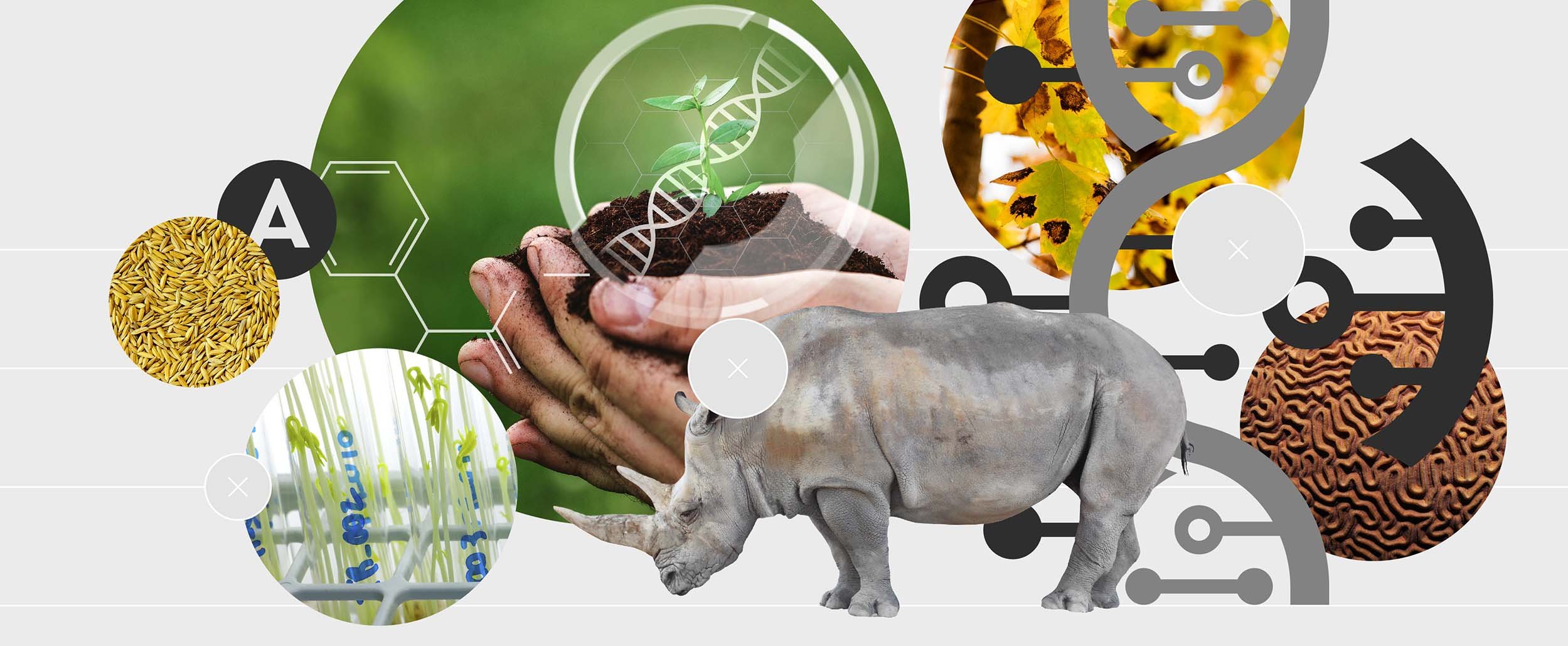 5.5.4Synthetic multicellular organismsCreating wholly synthetic multicellular organisms is probably synthetic biology's greatest technical challenge. The limiting factor in creating engineered multicellular organisms... more | 5-year horizonSmart microbiomes come of ageSmart microbiomes, essentially logic-based synthetic gene circuits, are developed. These sense and respond to stimuli within a multicellular host. Research creates precision hybrids that combine traits of two related species. Policymakers develop regulations for gene-edited staple crops that can withstand climate-induced changes in their environment. | 10-year horizonEngineering benefits coralsCorals benefit from engineered protection. Research shortens the timescales for coral reef regeneration and renewal. Large-scale rewriting of genotypes for a variety of applications becomes possible, thanks to advances in synthetic genomics and stem cell technology. Invasive species, disease vectors and agricultural pests are significantly reduced thanks to the development of synthetic biocontrol agents. Engineered multi-cellular systems offer a novel approach to logic and computation. | 25-year horizonSome lost biodiversity restoredArtificial chromosomes, preloaded with genes for medications etc, can be uploaded into humans. Some lost biodiversity is restored through synthetic biology techniques, and the Earth hosts the first "synthetic ecosystems", in which many species have been altered or synthesised from scratch. |
